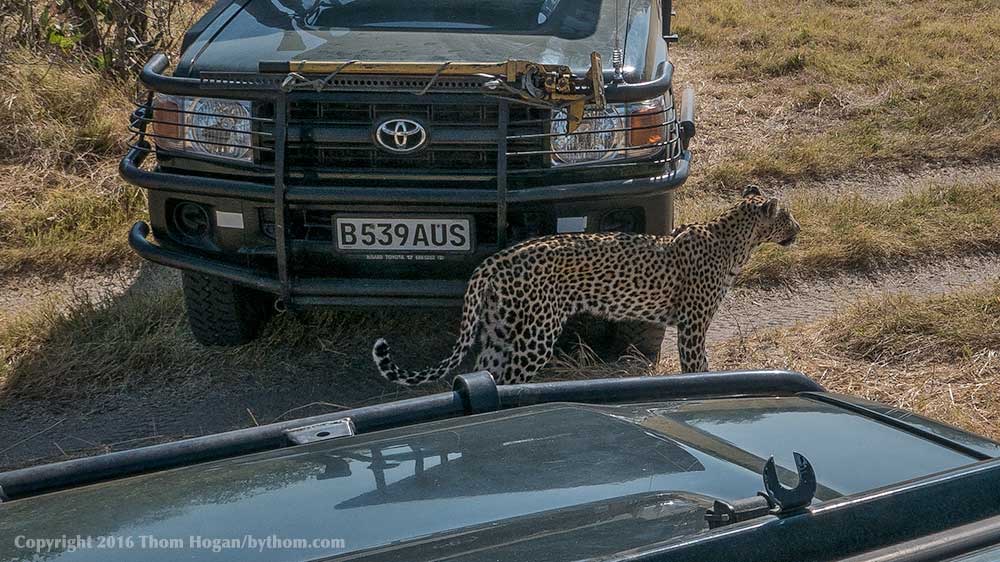
As usual with my workshop blogs, we’ll be rolling this out on tape delay: now that I’m back in the office you’ll get one day's worth of blogging I did while in Africa last month published every day this month. We’re starting this replay on September 6th, which is almost exactly a month after the actual trip occurred. So events you’re reading about today happened about a month ago.
I do it this way—tape delay—because I don’t have an Internet connection during the workshop (I could, but I take a month off from the Internet every August, remember?). If you’re curious, yes, you can get Internet connections these days at most lodges in Botswana, though it’s likely to be slow (and sometimes expensive). With a mobile tented camp like I use for the workshops, you’d need to bring a BGAN device and have a data plan. BGAN hardware rentals are actually pretty reasonable, and this works reliably in Botswana, but you’ll want to think very carefully about how much data you’ll be using, as the data charges pile up enormously, and very quickly.
Shall we begin?
A reminder: the “most recent day” will be on top, with earlier days below it should you need to catch up. Individual days can be found in the menus.
1. And So We Start Again
I don’t blog every workshop I do, as I don’t like repeating myself so often; I spread these things out and try to provide a few new teaching bits and insights each time. It’s been three years since my last Africa workshop blog, so this seems like a good time to pick up and see what I can write that’s new.
Thing is, every trip to Africa—even to the same place—tends to be very different, as we’re intruding on the animals randomly to start with, and Botswana in particular tends to have quite a bit of variability due to the way the waters move into the delta (or don’t).
But let’s start this blog where we should: packing.
Given my recent surgery, I was a little worried about this trip. Enough so that I did a “test” trip prior to it just to make sure I was up to the hassles of travel. For a month, I had a 20-pound lifting limit imposed on me by my doctor. My current pack weight as I sit in the lounge waiting to board my plane? 33 pounds. I’m being careful not to lift it outright, but to shimmy into it ;~).
And my bag is DX light (no FX bodies, no big exotic lens). Some of that 33 pound weight has to do with battery needs for the places I’ll be going on this trip, but those batteries are spread between my backpack and my laptop bag (which is another 22 pounds).
Funny thing is, even though I’m bringing a bunch of miscellaneous stuff to leave with friends in Africa, my two checked duffel bags weigh less than my carry-ons. The life of a well-prepared wildlife photographer requires a great deal of weight lifting. As much as possible, I’m having others lifting my bags at the start of the trip.
Some of the things I’m bringing on this trip that you probably wouldn’t: projector, two extra telephoto lenses in case students have issues, and lots of extra charging gear centered around big batteries. As big as you can legally carry on an aircraft.
I’m going to give you an Excel spreadsheet that (mostly) deals with all the minutiae of what I packed this time (some of the weights aren’t up to date, but you’ll get the idea of everything I was dealing with). This spreadsheet started with a former workshop student, and I’ve been using it ever since.
Use this spreadsheet at your own risk! This list is very specific to my teaching in Botswana and what I know I need and can deal with logistically. It’s also specific to a time of year there. Note that when you do things on your own or have to get to certain areas in Africa to join a tour, you very well may encounter bag and weight limits that my list will easily put you over.
That’s one reason why I use Air Botswana from Jo-berg to Maun, by the way: I know what fits in their overheads, and I know that I can be over in bags and weight and pay a reasonable fee (US$3 pound typically) for getting that extra stuff where I need it. On the internal flights we use within Botswana, I work to a specific set of requirements that are more space restricted than weight, but when you book such bush flights on your own you’ll probably find the opposite to be true. More on that when we get to it later in the month.
Planning for these big trips isn’t easy. If you haven’t already partaken of my Big Trip Planning 101 article, spend some time reading and absorbing that. I’ll say this: the more anal you are about the pre-trip routine and packing, the easier the trip is going to be.
For this trip I did my first pre-pack a week before I left. Pretty much everything was in the bags, weighed, and checked off my list, then everything set into a staging area. During the week before I left, I’d visit this staging area several times each day and “refine.” Every time I refined, I changed my spreadsheet. Yes, anal.
Every day after having everything mock packed I also played the “what if” game: what if it rained? What if it was colder or hotter than expected? What if X broke? Be careful, though. If you play this game too well, you’ll just keep adding things to your bags. The real trick here is to play the game while trying to balance all the possibilities against their likely reality. Your goal isn’t to bring everything. Your goal is to bring the right mix of things that maximizes your possibilities. All while trying to keep within weight and bag limits, of course.
The final touch? Print the spreadsheet and carry it with you. Note that I’ve got room for serial numbers on that spreadsheet, so in the case of loss I can fill out an accurate and complete police report. Likewise, should an airline lose a bag, I have substantiation of what’s in it (also take a photo of the packed bag with the zips open with your iPhone to go along with your list).
2. In Transit
For those thinking about getting to Africa from the US for wildlife photography, it works basically like this:
- For Eastern Africa (Kenya, Tanzania) you typically fly to Europe and then fly down to Nairobi (Kenya) or Arusha (Tanzania).
- For Southern Africa (Botswana, Namibia, South Africa, Zambia) you can fly from Atlanta to Johannesburg (Delta) or from Washington DC/New York City to Johannesburg (South African Airways/United). Or you can fly to Europe and then to Johannesburg from there. From Johannesburg you can get to pretty much anywhere in the Southern Africa area with ease.
I’m on the “thru Europe plan” this trip, mainly because United offered me a really great deal flying business class all the way. But be aware that this adds a day to the effective transit time. Normally I fly from DC to Johannesburg and I leave early one evening and arrive the next. I can go from DC to Maun in about 30 (constant time zone) hours, and that’s spending the night in Jo-berg at a hotel.
Through Europe you typically leave the US in the Evening, arrive in Europe in the next morning, then leave Europe in the evening and arrive in Jo-berg the following morning. In constant time zone hours I end up somewhere near 48 (constant time zone) hours in transit (and this still includes a night in Jo-berg). Also, be careful which airport/town you decide to spend your European day in. Some airports are easy to get out and do something else from, others are an expensive and longish trip from downtown and areas of attraction, so don’t lend themselves well to that.
This year I’m trying Zurich, which turns out to be a pretty nice airport, especially if you have access to the lounges. This is the view from the lounge terrace this morning as I got in. That’s the plane I came in on at the far right, so I didn’t even have to walk far.

This particular Star Alliance club is pretty darned good: no adapters needed for most power plugs, a chef on duty cooking meals on demand, an ice cream bar, self-serve beverages including Starbucks-type coffee variations I don’t partake of, a quiet area where you can catch a nap on one of the lounges, and, of course, the nice open air terrace I’m taking advantage of this morning as I write this.

Taking photos from the terrace was a snap (pardon the pun). Taking photos while flying is always a battle. The above is what I woke up to as we were heading down into Zurich.
You can do a few things to help yourself out here. First, wear dark (black) clothing so your reflections don’t show up in the window. Second, turn off as much of the lighting as you can. Preferably sit on the sunny side of the plane, as if you sit on the shade side you’ll get the brightness from the other side of the plain putting glare on your window. Better still, invest in a LenSkirt and use it to shield the light from the window [advertiser link, below].
Unfortunately, using a LenSkirt puts you up against another problem: vibration. The temptation is to stick the camera up against the glass (you’re handling the camera through a small opening, so you’re looking for stability). That’s not good. You don’t want to transfer any vibrations to the camera, which means you really want to use good hand holding practice away from the window. You don’t even want to brace your body against the plane’s exterior if you can, because you’ll transfer vibrations/bounces. Vibration reduction helps, but it’s a band aid, not a solution.
Whatever you’ve heard about needed shutter speed from the air, double it. The closer you are to the ground the more important keeping your shutter speed high is, but frankly, I try to keep it arbitrarily high all the time. Even at 10,000 feet, flying even as slow as 200 mph means that on the ground you would have moved nearly 300 feet in one second. Those that say you can get by with shutter speeds like 1/100 in that situation are kidding themselves (are you trying to resolve things that are three feet in size? they’ll be blurry at 1/100 ;~). I see a lot of motion artifacts in edges at low shutter speeds, regardless of how high I’m flying. Couple that with any vibration that got transferred to the camera, and you have a bit of pixel mush if you look closely. Heck, why not add a diffraction-impacted aperture while your’e at it? ;~)
If I can hit 1/2000 without compromising anything else, that’s where you’ll find me. As we get close to the ground for landing, I want to go higher if I can. Yes, I’m probably being more persnickety than I need to about this, but I can’t tell you how often I’ve been disappointed in my shots when I let the shutter speeds drift downwards. (Hint: sometimes Photoshop’s Motion setting on the Smart Sharpen tool may help you get back some edge definition, but only sometimes.) The following shot was at 1/2000, but we’re now low enough to the ground that I’m barely holding off the left/right motion artifacts:

Even if you’ve removed all the reflections in the window you’re going to find that you still have a lot of veiling glare; the types of windows used on most planes aren't exactly as efficient at passing light directly as would be a flat pane of simple glass, and they’re often scratched or have residue from things like de-icer on them. Adobe’s Dehaze filter is going to help you here. But don’t add to the problems by putting extra glass in front of your lens (e.g. UV filter, etc.). You’ll also probably find that there’s a slight tint to the glass. So here’s a tip: while you’re still at the gate take a photo through the window of a nearby plane (most of them have white fuselages). Use that shot in your converter to figure out the exact custom white balance to use in conversion. I suspect I’ll have more to say about this later in the blog.
For some strange reason, my Panasonic LX-100 has troubles shooting out of plane windows that my Sony RX-100 doesn’t: Panasonic’s automatic white balance tends to go decidedly towards the blue-magenta side, while the Sony stays relatively neutral. I almost never use the As Shot white balance from the LX-100 to start with in Adobe’s converters, but this is compounded when shooting through airline windows.
Personally, I prefer these small, large sensor compacts to anything else for shooting from commercial airliners. You just don’t have a lot of space to juggle the big gear, and FX-sized lenses start pushing you away from the window and into awkward shooting positions. It would be nice, however, to have something more than 70/85mm equivalent at the long end, but not if it comes at the expense of losing apertures. Why? Because we’re trying to keep that shutter speed up, and we’re not always shooting in Sunny 16. Indeed, the most dramatic and interesting shots I’ve taken are almost always edge of day shots or bad weather shots.
3. Still in Transit
Not a lot to write about today, except one thing: no sooner did I get through the Passport check in Jo-berg when I heard my name on the loudspeaker: “Thom Hogan please report to the Swiss Air baggage counter.” Uh-oh.
Turns out that while I got on the plane last night, my bags didn’t.
Now the good news is that Swiss Air figured that out immediately and was being proactive about it. The bad news is that there was absolutely no way that my bags should have missed the flight. Besides being marked with priority customer tags, there was plenty of time in Zurich for them to be transferred to my plane.
The really bad news, though, was this: the flight I was on from Zurich was the last one for the prior day, and today’s flight—should my bags actually get on it—was scheduled to arrive not long before I needed to be on the plane to Maun.
Now, I mentioned yesterday that the through-Europe routing tends to add a day to your trip. This is one of the reasons why: you can’t trust the flight schedules to align properly if you try to make a Europe-To-Johannesburg-and-onto-Botswana connection: there’s just not enough time to guarantee that you’ll make it to your connection, especially if you’re booked on separate tickets and have to clear and go back through customs.
So let me point out the possibilities: if you book South African Airways from Jo-berg to Maun, you’re on a Star Alliance partner, and should be able to book tickets and baggage through from the US to Maun. If you book Air Botswana from Jo-berg to Maun as I do, you generally don’t have that option as they’re not partnered with any major alliance.
So let me reiterate why I use Air Botswana: they almost never weigh carry-ons, and as long as they fit in the overheads (caution: 8.5” is the height of those) you’re golden. They also only go by weight for checked bags, not number of bags, and their charges for overweight are modest. South African uses a regional carrier called Airlink on the Jo-berg to Maun flights. Over the years we’ve had more issues with size/weight with them than Air Botswana.
As for reliability, neither are perfect. Both often leave/arrive late. At the Maun end, Air Botswana is much more efficient at checking you in than South African, which tends to end up with long lines. On the down side, Air Botswana only has seven planes total that can fly the Jo-berg/Maun leg, so when they have mechanical issues, they can get quite delayed. Airlink has more resources when it comes to planes they can re-route.
But either way, here’s the thing: a lot of the US and Europe to Jo-berg flights just don’t arrive on time. Each year it seems we have at least one student whose flight came in late to Jo-berg. So if you try to make a quick turnaround and get on a flight out of Jo-berg the same morning, you can end up missing it.
And that’s what I’m worried about my bags doing tomorrow. If all goes according to plan, my bags will appear in Jo-berg about the time I’m supposed to checked in with Air Botswana, and the Swiss Air folk can get them to me in time to make the flight to Maun. But if that plane is even a little late—or worse, my bags decide to stay another night in Zurich—my bags are going to have a hard time catching up to me, as I’ll be leaving the Maun airport for the middle-of-nowhere almost instantly.
The clerk reassures me I’ll get my bags.
Just in case, in the hotel room this evening I’ve spent the time to find the database that’s tracking my bags on the Internet. It took me awhile to find the actual database that they use to track bags [after I got home I discovered it’s easier to find from the US version of the site; from Jo-berg I kept getting the abbreviated site], which turned out to be on the Swissport site (their cargo company). I found that some of the information the clerk at the airport had entered was wrong, so fixed it ;~).
So what happens if they don’t get my bags to me in the morning?
Well, one nice thing about OR Tumbo airport in Jo-berg is that it has two shopping malls. I took the time this afternoon to buy some underwear and socks, and if tomorrow comes and there’s still no site of my bags, I’ll go to the outdoor sports store after entering through customs and buy a few more things. I should also note that I took to packing a pair of shorts and an extra t-shirt in my camera bag a few years back, “just in case.” Trust me, “just in case” will someday be exactly what you’re experiencing if you travel by air much.
I hope that tomorrow I can get back on the subject of wildlife, but my dreams tonight are likely to be of missing luggage and where it goes on its vacations...
4. First Day, First Night
I left home on Sunday, and here on Wednesday I’m finally in Botswana.
Unfortunately, I’m not done traveling yet.
Oh wait, you’re probably wondering what happened to my bags. When I woke in the morning the first I did was look on the Internet to find out the status of the Swiss Air flight from Zurich to Jo-berg. Was it on time? Yes. Good news.
Was my bag on the plane? According to the baggage tracking Web site, probably. I say probably because the status updates didn’t actually say “left Zurich.” It said “scanned for the flight.”
Because we’re supposed to be checked in with Air Botswana before my bags would officially arrive, my workshop teaching partner Tony and I went over to their counter and checked in. At least once I was assured that I could “add bags” should they actually arrive. Then I waited just outside customs until I saw that the Swiss Air flight had landed, gave it a few minutes, then phoned the agent whose number I had gotten last night.
Yes, my bags were here. Just meet the agent outside the customs area. Sure enough, a couple of minutes later I was handed my bags, and then rushed back to Air Botswana where I got them added to that flight in time, then rushed back to get through customs to exit South Africa and arrive at my gate.
So, yes, my bags miraculously made a just-in-time appearance, and as I boarded the Air Botswana plane I could see them in the baggage cart next to the plane. On to Maun.
The flight was uneventful, and as usual I was met at the airport by Shane, who introduced Tony and I to our driver for the pre-workshop portion of our trip: OK. Yes, that’s his name, OK. At least for non-Setswana like me, as his actual name has lots of K’s and X’s and vowels in it that aren’t so easy to pronounce if you can’t click as you speak. So OK is OK with me, unless, of course, he asks if I’m all right, in which case I can’t say that I’m OK unless I want to start an Abbott and Costello routine [I actually tried to explain the Who’s on First routine to OK and how we could do it in Setswana, but unfortunately the concept of baseball is foreign in Botswana ;~].
After transferring some items into one duffel I won’t need until the workshop officially starts, it’s into the Land Cruiser with Tony and OK and off for a long, dusty journey to our first destination, Hyena Pan. There are paved roads in Botswana, but not in the true game areas, so it’s not many kilometers before we’re plowing through the (mostly) packed sand that constitute roads here.

Funny thing is, the speed limit signs on the section of road between the end of pavement outside Maun to the Cattle Gate and start of the wild area says 80kmph. I note that we rarely manage to get above 40kmph.

The rains came late and light this year in Botswana, and that means the roads didn’t really get their annual “washing.” The sand really only packs with moisture and some selective grading coupled with a lot of use. All they got this year was a lot of use. So the “soft spots” in the sand are more frequent, larger, and deeper. It’s just a long, slow drive, and we’ve got a lot of it to do. Moreover, since this is a main connector road between Maun and the Northeastern park areas and communities, you’re not going to see much in the way of animal life along the way.
So another day of travel.
We did find a couple of water holes along the way with some wildlife, generally elephants and fish eagles, but we didn’t stop long. The camera gear is out now, though.


Almost immediately I’ve noticed that my D500 needs AF Fine Tuning with the 200-500mm I brought. Fortunately, nothing spectacular is happening before I get a chance to deal with that.
We arrive at our destination after dark. It’s a pretty interesting destination, too. We’re spending the night on platforms built to observe a water hole. Here’s a picture of one of the platforms during the day:

First floor ground, second floor bathroom, third floor with no roof: beds and a viewing area. An elephant herd is at the watering hole as we arrive, but short of throwing spotlights on them, we can’t see them. As befitting the name, a pack of hyena makes its appearance around the campfire as we sit down to dinner.
If you’ve never been somewhere with totally dark skies, then you can’t imagine the platforms at night on the night of a new moon. As you lie in bed, you’re looking up at the Milky Way and so many stars that even Carl Sagan would have to modify his descriptor of wonderment. Tony takes some time to photograph them, but I just lie back on the bed and enjoy it.

It’s still winter here in Botswana, though it should be warming into some sort of spring soon. With no roof, no walls, sleeping on the platform leaves you a bit exposed to the cold and wind. Personally, I enjoy that. Let’s say it was a brisk night but cozy under the comforter. [Tony claims he was cold because his comforter kept flying off his bed magically onto mine…]
5. First Full Drive
Waking up above the savannah as dawn appears is a joy. With no clouds in the sky there’s no big drama to it, just the subtle rise of light, and with it a somewhat colored Eastern sky.
Out at the water hole a lone elephant is doing its morning ablutions. The sun rises behind the platforms, so the animals at the watering hole itself are nicely lit from the front. Here’s what the top of the platforms looks like this morning:
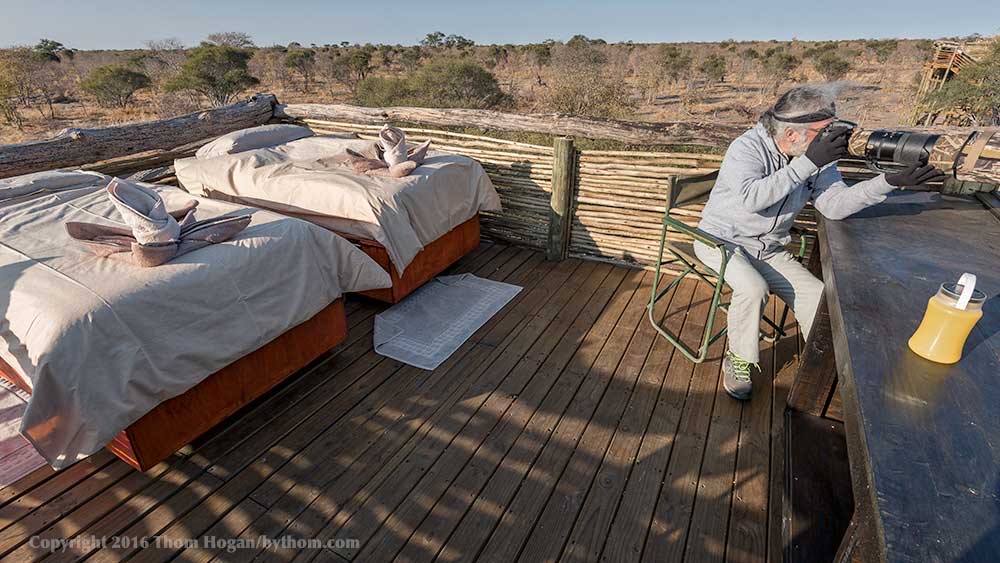
Besides taking a few photos of the setting, I use this time to do a quick AF Fine Tune. If you know what you’re doing and what to look for, you don’t need a test chart. After a few minutes, I’ve decided upon +8, which seems about right for what I thought I saw through the viewfinder.
Fortunately, moments later two jackal came down to the water allowing me to test and verify my tuning. Sure enough, +8 looks quite good. If it’s not right, the correct value can’t be more than one on either side of it.
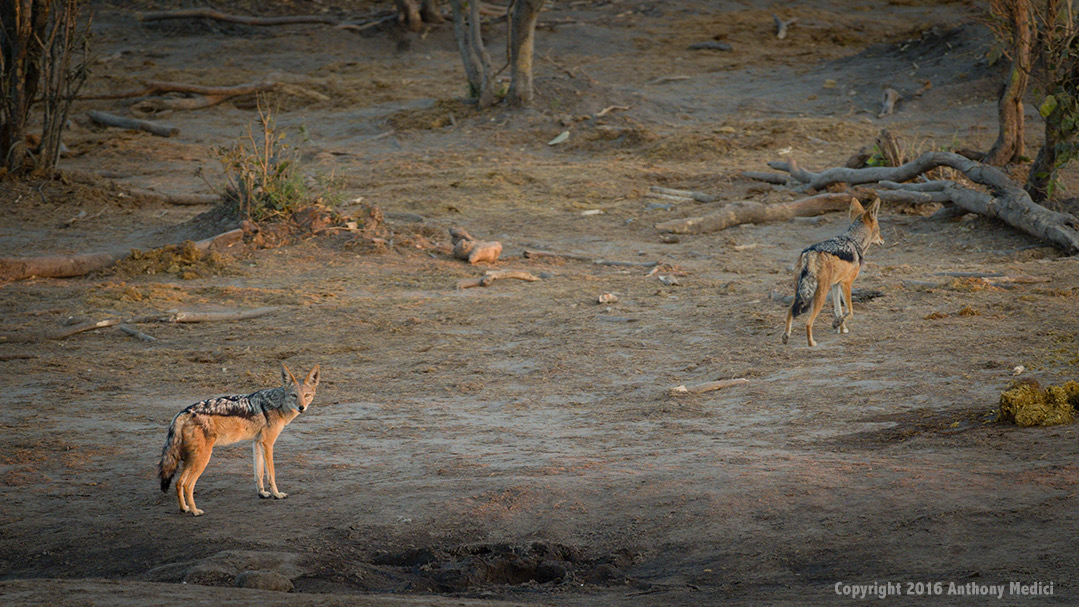
After some morning photography from the platforms and a hearty campfire breakfast, it’s off for the first true game drive of the trip. With the morning temperature being so cold, even the doves aren’t making noise at 9am: everything is still asleep or waiting to warm up. Other than a couple of elephant and a couple of birds, not much is up and moving.
We decide to do a bit of driving and cross over to an area where we know there’s a wild dog den with pups. Sure enough, the dogs are there, though it’s just the adults taking naps while the pups are still down in the den.

While we sit on the site for over an hour along with some other vehicles, all we get is some minimal dog action that occurs as the adults overheat in the sun and then move to the shade; but then they get too cool in the shade and move back into the sun. This goes ad finitum.
So we break for lunch and a mid-day rest, and will head back out later this afternoon.
As I write this, a squirrel chase has suddenly started here on the lounge deck. We’re careful enough to not leave any scraps from lunch, but that won’t stop them from making sure. But apparently this part of the lounge is contested territory, so while one group has come from the West via the air, another group appeared on the ground from the East. Thus the chasing. (Minutes later: the Eastern group has prevailed, pushing the air invaders back out into the pan from whence they came.)
(Excuse me a moment, two elephants have shown up at the watering hole right in front of the lounge area where I’m sitting typing this. Picks up camera, presses shutter release…goes back to writing...)

After lunch it was back to the wild dog den.
The pups weren’t out yet, but we decided to wait and see what happens. All the other vehicles that had been there have left. And then I saw it: the two moms running towards each other heads low to the ground and with their jaws open while making some sort of rumbling growl. This is the sign that it’s time to bring out the pups, and that’s exactly what happened next. Wild dog pups boiled out of the ground and suddenly we had a dozen new active subjects to shoot.




For most of the afternoon, Tony and I were in wild dog pup heaven. As in probably thousands of shots. We saw disciplining (top image), we saw playing, we saw general wandering and curiosity, we saw plenty of pup interactions (bottom images). All this lasted quite some time, and we pretty much had it all to ourselves the entire time. Our most difficult problem was getting the vehicle re-positioned with clear views as the pups gallivanted all over the landscape around us.
All good things must come to an end, though, and eventually the parents got up and called the pups out on a mock hunt and the den area became quiet and abandoned. We eventually left to go explore other areas in Khwai, but really didn’t see anything of great interest. Certainly nothing as interesting and productive as the wild dog pups had been.
On the way back to the lodge, we got a nice post sunset three planet alignment with the newish moon (hard to see in this quick JPEG I took with my shirt pocket camera). An enjoyable end to an enjoyable day.

6. Happy Hippos
After yesterday’s mostly wild dog day, we decided to try something different this morning. We’ve come down the cut road to the far end of Khwai and stopped at the first hippo pool in the river that we came to. What we found was a couple of dozen hippos out of the water.
One thing about these pre-workshop warmups that Tony and I do is that there’s really no agenda, no hurry, no need to try to jump from animal to animal. What we’re trying to do is just enjoy ourselves while double-checking our gear and practicing our techniques.
Both of us have a D500 on this trip—though Tony is mostly shooting with his D810 twins—so of course one of the things I’m trying to do is verify some of the things I think I know about the autofocus system before I’m hit with student questions.
So finding a crash of hippos outside the water like this gives us multiple benefits. First, we can set up our tripods and shoot from them out of the vehicle here. Second, while the hippos aren’t terribly active at the moment we arrive, we expect at some point they will be. Third…well, they’re hippos, and they’re not doing their usual hiding in the water thing; you can actually see the whole animal rather than a couple of eyes and ears behind a snout.

Note that I wrote “crash of hippos.” One amusing thing to me is that the latest Botswana wildlife book published seems to have a bunch of new names for groups of animals. It appears that names for a collection of any animal are getting slangy. Twenty plus years ago I was told a group of hippos was a pod. Since then, I’ve heard them called bloats, wallows, and sieges. The hippopotamus researcher I once met in Botswana used “herd” or “pod” somewhat interchangeably.
Sadly I missed the photo I wanted. So did Tony. We were both using long lenses when the inevitable happened. Actually, that’s not quite right, I was walking over to my bag to get a shorter lens the moment it happened.
What is “it”? A hippo stampede back into the water. A largish bird came flying up behind the crash (pod, bloat, wallow, siege, herd) to land on the ground and apparently spooked one of the hippos, who in turn spooked everyone else. It was an impressive sight (and sound for that matter) as all that mass entered the water at full speed and created a huge displacement wave in front of them. I’ve seen surfers on smaller waves.
Tony got what he could with his 500mm (which would be one animal, basically). I just watched.
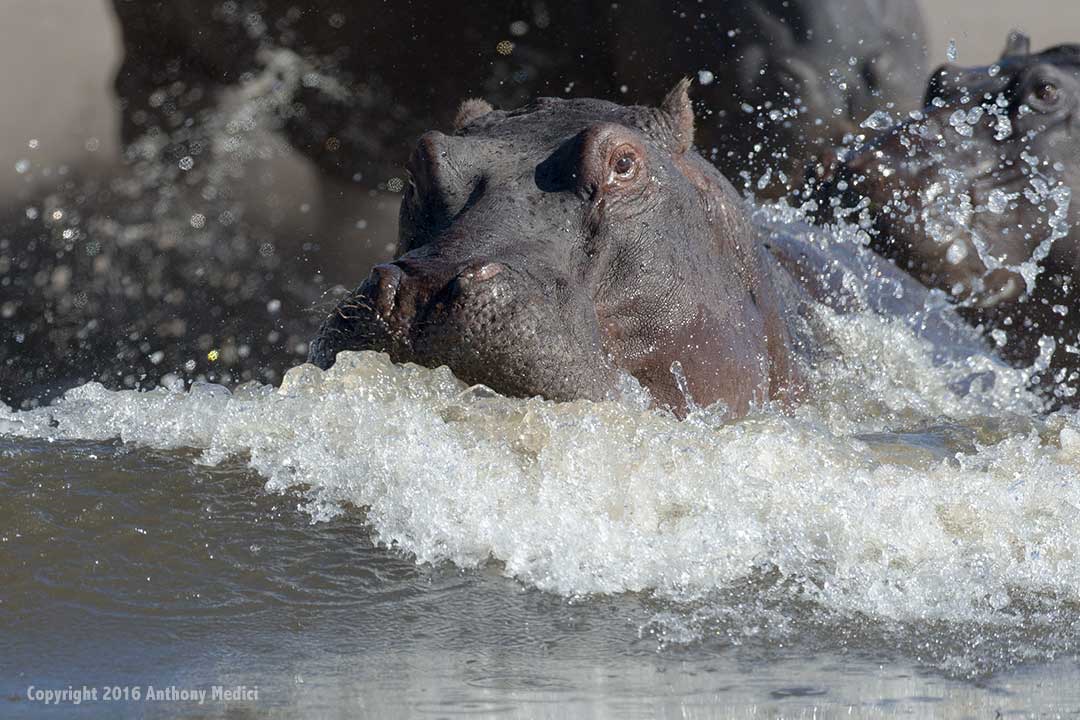
It didn’t take too long before the hippos decided that they wanted to be out of the water again. This time I was ready with my shorter lens hanging round my neck on a second body, but unfortunately, despite watching these hippos for hours, they never spooked again. On the other hand, we did get a lot of hippo-out-of-water, hippo-entering-water, hippo-exiting-water, and hippos-being-hippos shots.

Personally, I liked how happy this hippo seemed when it found something to rest its heavy head on:

Eventually, lunch beckoned, and we drove back to camp, though we stayed along the river as much as possible to scout for the afternoon.
After lunch, we tried the opposite approach: we drove down the main road and entered the Khwai concession area from the opposite side compared to the morning. We had a lot of miscellany, mostly birds, but nothing particularly interesting.

I did take some time to practice my bird-on/off-a-stick routine so that I was getting the timing down. For a bird that looks so pretty sitting in bright sunlight, that starling sure looks ugly on takeoff.
Towards the end of the day we met another vehicle that told us that there was a leopard at Leopard Pool. Go figure. So here’s another naming thing that’s tricky: OK knew where that was without asking. But not every guide/driver uses the same terminology for various places in the parks. This same pond we’re headed to has been called different things by other drivers in the past. But apparently a leopard has been hanging out in this area long enough now that some are calling the water feature Leopard Pool.
Personally, I didn’t get too excited by this leopard. A few good head shots and posed shots, but because she stuffed her kill under a bush and it was already turning quite dark by the time we arrived, trying to shoot when she ducked in to do a bit more gnawing on the carcass wasn’t going to produce any great images. Thus, once I got to ISO 6400 with this lady, I decided to call it an evening. Nice date, but I won’t be coming home with you.

For what it’s worth, that’s a small crop from 500mm f/5.6 at 1/125 handheld (D500 at ISO 3200). The next photos I took were at ISO 6400 for obvious reasons… We actually got much closer and I started using the D7200 with the 70-200mm f/2.8, but still, the light was going very rapidly, and she eventually moved into the bush behind her to nibble on her kill, where the light was worse.
Rather than get out the spotlight and violate the leopard’s privacy, we decided to call it quits and head back to camp.
7. More Travel, Plus Meet and Greet
Yes, it’s another long travel day for Tony and I. Our short little warmup shoot is over and we’ve now backtracked to Maun, right to the Capricorn headquarters (Capricorn is the safari operator I use in Botswana). Shane made the mistake of offering to do laundry for us and letting us take a shower in the house, so Tony and I gladly dumped our bags for him and hit the bathrooms ;~).
Shane then further made the mistake of giving us the option of driving straight out to Royal Tree Lodge or to go to the airport and wait for the last couple of students to arrive, and then take them to the Royal Tree Lodge with us. Of course we opted for going to the airport, because we knew that we’d be early, the plane would be late, and we’d have time for a nice lunch somewhere we haven’t eaten before.
Our choice of meal stops? The only Indian, Chinese, Continental, and Pizza place in town. Yes, all four. The menu comes with a total of 261 choices. I know, because they were all numbered.
Surprisingly for such an unfocused kitchen, the food was very good. Tony got his “usual” chicken salad and gave it a thumbs up. I went for a burger not made from cow, which also gets a thumbs up from me.
To show you just how small a town Maun is—even though it’s over 40,000 people now—the credit card machine didn’t work as we finished up. Shane just gave them his office telephone number and told the restaurant to square it with them, and that was fine with the restaurant. There’s a lot of trust between the small businesses in town, and they pretty much all know each other, so when the infrastructure breaks, they’re all used to some manual shuffling to get things done. Being in the middle of nowhere, the infrastructure breaks quite often, unfortunately.
We crossed the street over to the airport, walked into the terminal and arrived just in time to meet our last students. With their bags loaded into the Land Cruiser, it was off to the lodge and off to the races for Tony and I.
I mean that almost literally. From the time we popped into the lobby at the Royal Tree until bedtime late that night, we were going non-stop. In the afternoon Tony was taking three students at a time out in the Land Cruiser through the Royal Tree grounds shooting the various game from the vehicle and showing everyone how to shoot comfortably and well supported from the vehicles, while I was dealing with a few students at a time pointing all their gear at this (yes the camera is tilted in this shot):

You’ll note something: we’ve got the LensAlign chart mounted to a small RRS tripod. Yes, that means we have an Arca Swiss plate mounted to the bottom of the LensAlign we take out into the field. There’s a reason for that. We set that chart on a far table on the deck (see below), and shoot with my Rue ground/window pod in ground position from a table on the opposite side of the deck. This puts most lenses almost exactly at the right height to get quick alignment of the test target (red dots in the holes, above). It takes only a few moments to set everything up by using plates at both ends.
From there, it’s all about how good my eyes are (or aren’t). Yes, I do everything by trial and error, and I do it very quickly these days. In the course of a bit more than an hour I checked—and in some cases corrected—alignment on nearly 30 lenses.
How am I doing it so fast? I look at pairs of numbers very carefully. The shot above was from at the end of the day, and I don’t like the low light slashing across the chart, both because color of light affects AF Fine Tune and because it makes it difficult to interpret the chart. It also has a bit of motion blur to it due to a low shutter speed, but it’s the only surviving shot I’ve got.
I start with the biggest number pairs (2 and 2, 4 and 4, etc.) and try to assess whether the front number in a pair is sharper than the back number, the same, or less sharp. I’ll look at the next number set down and do the same thing. Then the smallest set.
At that point I’ve formed an opinion, and I’ll test it with a change in AF Fine Tune value. In most cases, it takes me only two or three tries to lock down a value for a lens this way. But then I’ve been doing this for years now, and for hundreds of lens/camera combinations, so I know the subtle things to look for. I really wish I could slide the ruler over to the lens axis after grabbing the focus from the flat target, because one of the subtle things is reading values offset to the side like that makes you vulnerable to things like field curvature, which you have to interpret correctly. Also, there’s depth of field to consider. Still, I know these lenses well enough now and how they look properly aligned and unaligned, so it generally is very quick work for me. I had every student go off and test their alignment on several subjects before we determined things we “right.” I believe we only re-did one lens after such a confirmation test.
Here’s my workspace for the afternoon:

Meanwhile, as students were moving between Tony and I, we had them fill their bean bags.
We’re trying something different this year. Instead of natural ingredients, we had a bunch of waste plastic chopped up and recycled into small pellets in Maun, and we’re using those to fill the bags. I was a little worried that the weight wouldn’t come out quite right—I feared plastic might be too light—but as it turns out, when you fill the bean bags, they come out just about the same as they did last year with corn in them, both in weight and feel. This is great, because it means we can just re-use this filler over and over (Capricorn is storing it between workshops, and we can always put it back into the local recycling stream whenever we need to). I’ve always hated pretty much wiping out the local store of corn each year, so now we don’t have to do that.
With lenses tuned and students trained on how to shoot from the vehicle, I went into presentation mode. Before dinner we did a quick introduction to the way I teach composition, after dinner we finished up with some specifics on the things you have to look for while shooting on safari and how to deal with the problems that (will absolutely) come up.
Now, you’re probably thinking that Tony and I were going to enjoy resting in a nice permanent cabin at the lodge. Nope. Turns out that my group coupled with another had them bursting at the seams and no room at the inn for us. No worries, though. Capricorn put up one of their “luxury” tents for us out in the animal area (where Tony was showing people how to shoot from the vehicle). Turns out luxury means a flush toilet in a very large tent with two rooms. I’m not kidding you. A flush toilet in a tent. I could glamp (glamour camping) like this any day…
Tomorrow, back to safari shooting.
8. First Impressions of Moremi
I won’t belabor what I’ve written before: the road from Maun up through about Shukumukwa where it forks between choices of Moremi and Khwai is pretty dull, terrible with dust, and generally produces zero animals other than cows, goats, and dogs as you pass through some of the small villages. The map above is the track from Maun to the South Gate area, where we enter the Moremi Wildlife Reserve proper, and stop for lunch.
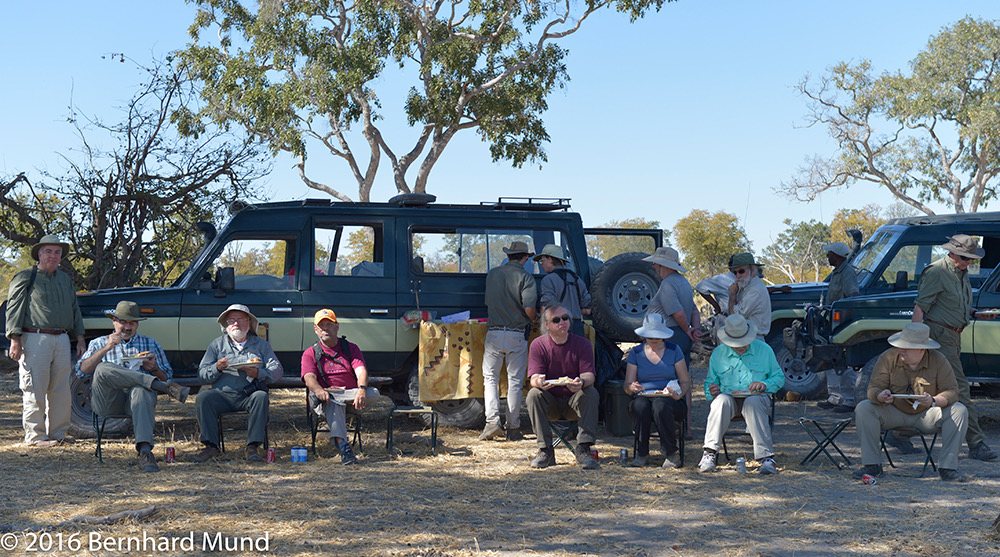
Now that we’re fed and in the park, it’s time to safari.
My first impression of Moremi this year is how dry it is. The place where stopped for lunch is generally a water pan that is frequented by impala and zebra, and usually has some water year-round. This year, none, and we haven’t hit summer yet.

Once into Moremi proper, the day is filled with firsts as we start the game drive for real (track above). First ground hornbill. That’s twenty minutes. First zebra. That’s fifteen minutes. First giraffe. Another fifteen minutes. First hippo. Another twenty minutes. First of many flat tires…well, you get the idea.
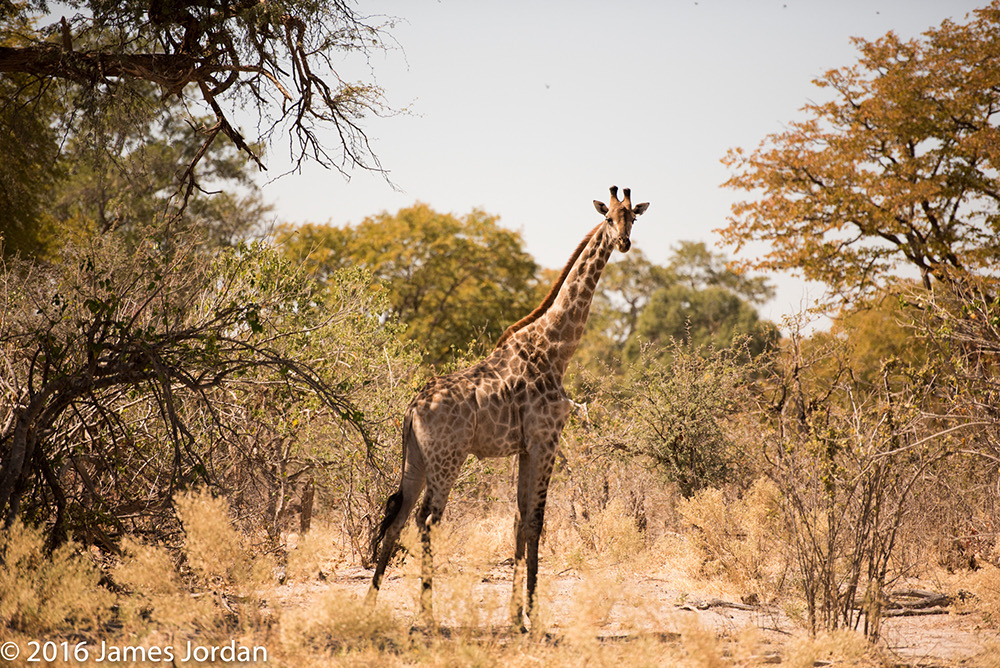

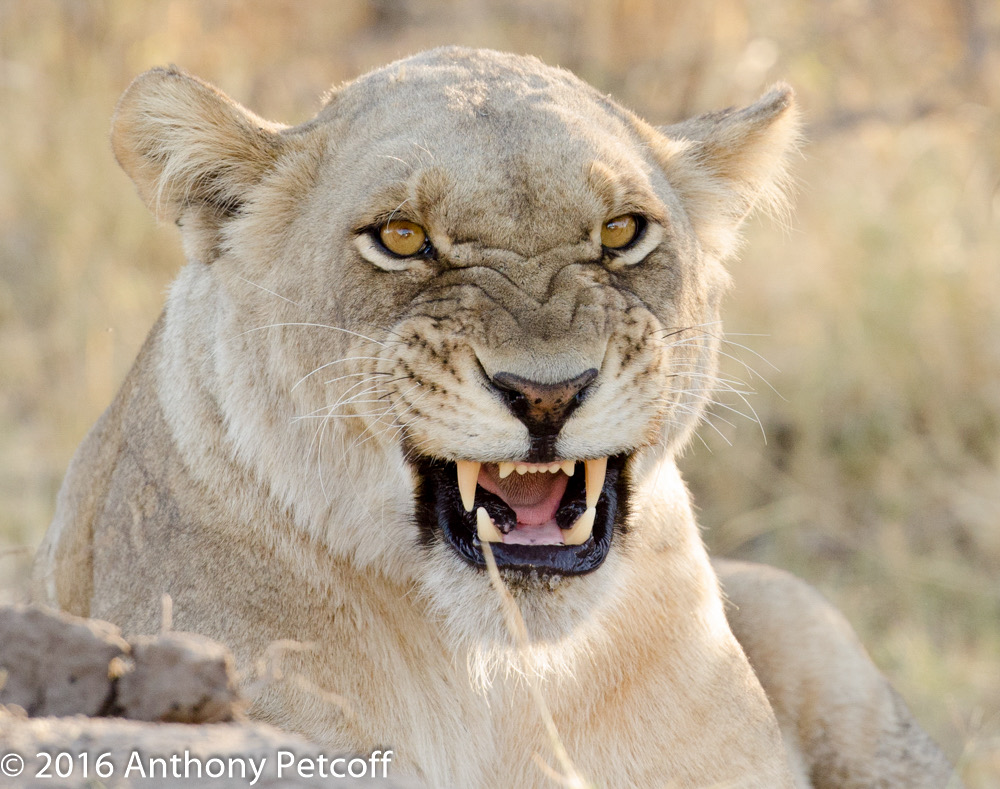

Shane had said this morning that he wanted to get us to camp by 4pm, but I knew better. I immediately retorted that “we’ll be lucky if we get in by 6pm.”
Sure enough, the day wore on and 4pm was soon history. We’d see some animal and stop, and another few ticks of the clocks went by. So yes, we got into camp at about 6:15, just as the light was rapidly diminishing to nothing.
This first day is always a tough balancing act. I don’t want to deny anyone their excitement with their firsts. Yet I also know that if I dump everyone in a mobile tented camp after dark, chaos ensues as people try to figure out where things are and how all the new-to-them gizmos work. The tents all have LED lighting powered from batteries, for instance, but Adam designed these to be multi-purpose, and you can use them in several interesting ways. The “bathroom” at the back of the tent takes some getting used to, and arriving after dark means that your first shower will be in the dark.
If I have to err, I do so on the side of photography. This is a photographic trip, after all. The minor annoyances of a new camp aren’t nearly as important as getting the shots everyone came to take.
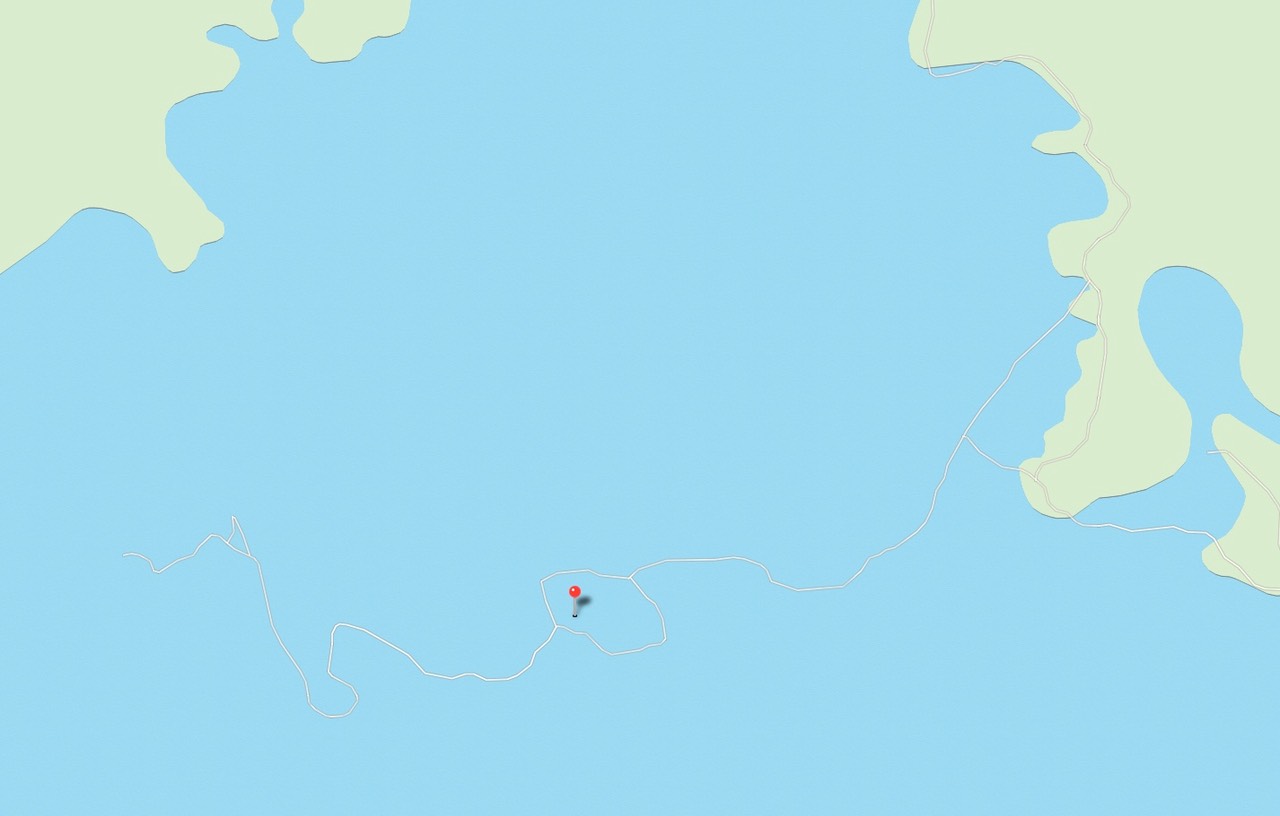
Camp 14 (the pin-prick in the above plot) is well away from the areas of Moremi that most visit. Indeed, if you look at the location above, it’s clearly out in the “wet” area that floods, and the dirt tracks end a bit to the West of the camp. Out this far we’re going to pretty much have the terrain to ourselves, something that’s unusual these days on safari. Indeed, as we moved away from the main road down towards our camp we began seeing fewer and fewer—and then no—other vehicles. The drawback is that we spend a lot more time traveling to get to this camp. The payoff is that we’ll have pretty much any sighting to ourselves.
Camp itself is the usual: two-person tents (and a few singles) arrayed in a semi-circle around the central area. The central area contains the campfire ring and the huge dining tent, replete with a liquor bar, coffee/tea bar, and buffet table. The crew all live at the other end of camp in a semi-circle behind the big Man vehicle that carries all this. Just behind the Man Kay sets up her kitchen, and it’s a pretty elaborate set up for a mobile camp with two camp ovens to deal with this large a group. Maybe I’ll get around to showing some images of that later in the trip.
The driver/guides have individual tents set out at the boundaries of camp, essentially to serve as sentries at night in case we need to do any fending off of animals. This workshop is a huge logistical operation. We’ll set up and move this camp three times on this trip, plus we’ll take a portion of it on the extension with a smaller group for a fourth move and setup. We pretty much have to not only be self-sufficient, but able to deal with anything that happens, so somewhere in camp you’ll find tool kits, backup gear, vehicle repair kits, and pretty much everything else you can think of. Plus don’t forget the food and drinks for 18 people plus 8 crew for two weeks. Big. Logistical. Operation.
If everything goes right, none of the workshop participants will notice all that went into this. I’ve been doing these trips with my local ground operator (Capricorn Safaris) for a decade now, and they’ve been doing similar trips for almost four decades. So it’s not that any of us are virgins at this and likely to be surprised by something. Still, as we get settled down into our first camp site, I’m always nervous that there’s something that will go haywire. We’re a long way from any help.
But we’re not done photographing just because it’s dark and we’re in camp!
Tonight’s our best night to avoid the moon and get good Milky Way shots, so Tony took everyone out into the field just West of our camp after dinner for some astronomical photography. (Tony’s the better night sky photographer between us, so I’ll always differ to his teaching here.)

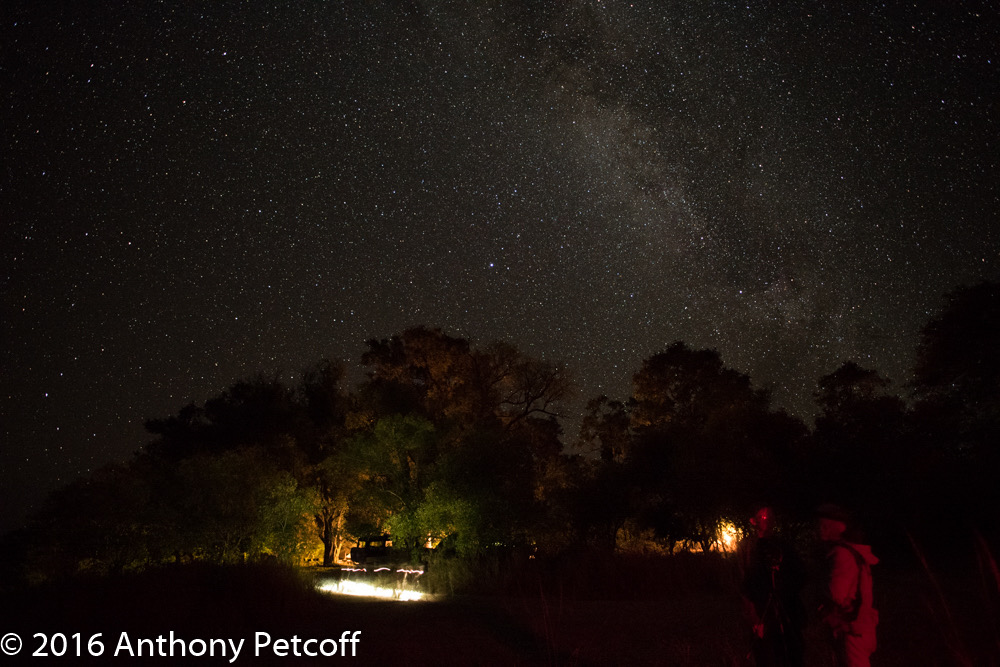
And so, after a very, very long day that started with me finishing up some lectures in the morning, a mid-day long drive, an afternoon safari, a camp dinner, plus some astrological fun, everyone is basically totally exhausted and off to their tents by no later than 11pm. Tomorrow’s wake-up call? 5:30am. I do tend to bill my workshops “intense” after all.
9. Just Another Day in Moremi
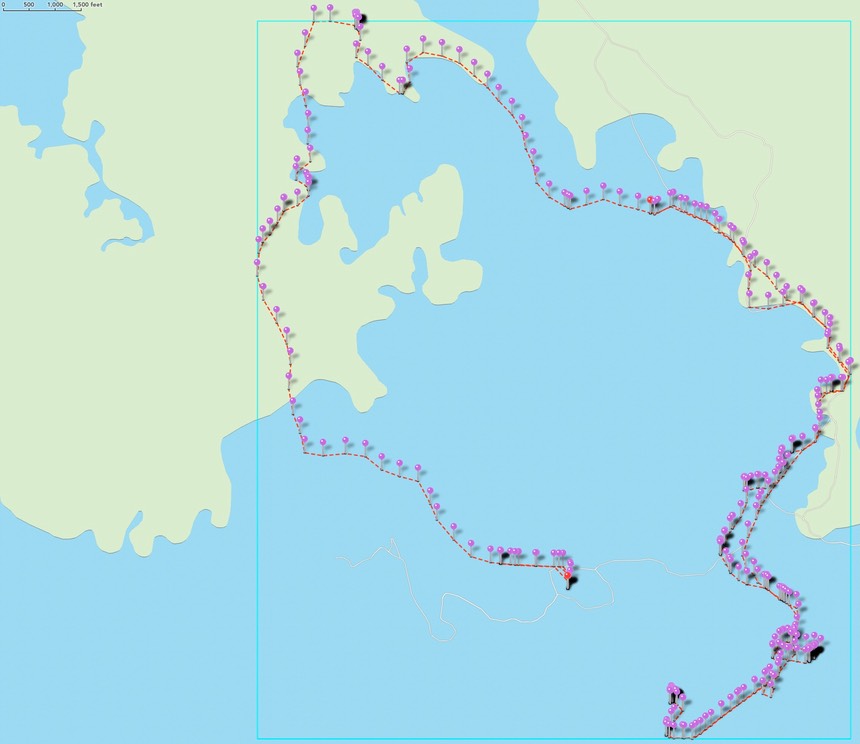
We heard the lions nearby last night, so this morning we set off looking for them.
I should mention something about the GPS plots I’m showing: these were done by Tony in the vehicle he was in. The four vehicles definitely vary where they’re going, though when something “good” happens, you’d see us overlap in plots. You can generally figure that out by density of pins in one area (lower right in the above plot is where the lion cub was [foreshadowing]).
Another thing you might notice in that plot is that it looks like there’s a road from our camp over to the right side (light gray line): so why didn’t we take that? Well, one of the vehicles tried. There’s impassible water—actually mud—at one point, so we keep having to take the long way around to get over to that right side.

Tracks were everywhere, including through camp, but no lions to be found. That’s a bit unusual, as with four vehicles taking different headings out of camp and surveying different territory, we usually can find animals known to be nearby very quickly. This morning, however, the lions are somehow eluding us.
Except for one.
As we made our way out to a pan to see what was coming to water, right in the middle of nowhere we found a lone lion cub. This cub was young enough that the mother surely would have tucked it away at the den and expected it to stay there, but this one was just old enough that he was ambling out in the open and an easy prey to any number of predators. This is the way young lions get killed, actually: they’re alone while mom and dad are off hunting and protecting the territory, and something like a pack of wild dogs or of hyena come across it and take it down.
Walking out in the open just makes that an even more likely outcome.
Curiously, this cub was about midway between where we saw two female lions yesterday, and where we heard them last night. I suspect the story was that the place we saw them yesterday was the den (or very near it), and the elder lions wandered off in the evening to go hunt in the territory near our camp. At some point the cub decided that mom had “gone thataway”, decided to try to follow, didn’t find her, and decided to trek back to the den.
But he didn’t make it that far. The heat of the day was coming on, and so shortly after we found him, he found a small area of shade next to a termite mound (see below) and eventually settled in for a nap. Again, not good behavior being out in the open like that.
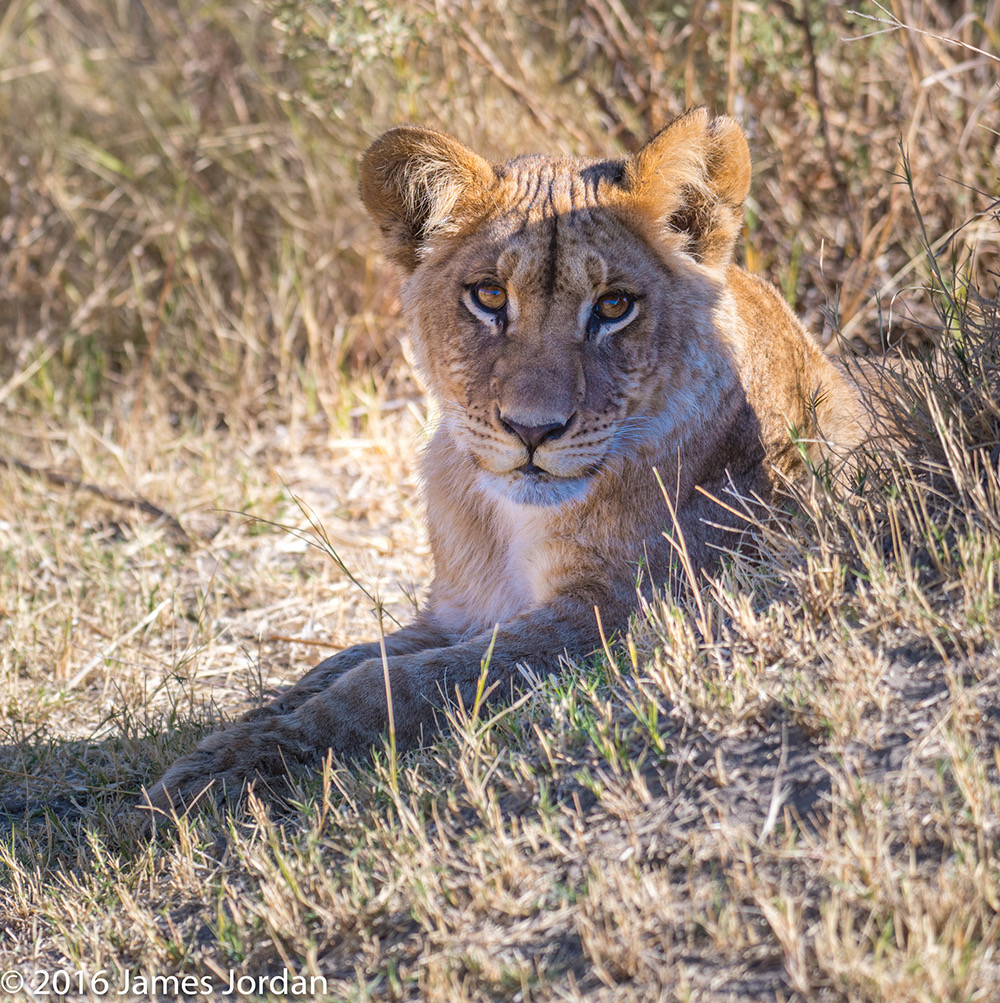
There’s only so many pictures you can take of a sleeping lion cub, so we quickly degraded into taking pictures of huge group of nearby bee-eaters, all feeding on insects. The bee-eaters were following some predictable patterns, so everyone was soon trying to get their bee-eater shots. Here’s what they look like when not in motion:

Upon tiring of that, off we went to finish our drive to the pan. That was rewarded with a plethora of animals: impala, crocodile, zebra, elephant, monkeys, pelicans, storks, and probably a dozen or so other species I wasn’t keeping track of. The nice thing about having a target rich environment like this at tea time is that we can set up tripods and have plenty of subjects where we can discuss autofocus and custom settings and camera whatnot. I’m not going to try to recreate that here, as it was a lengthy discussion, but perhaps I’ll try to come up with some summary of it later in the blog.
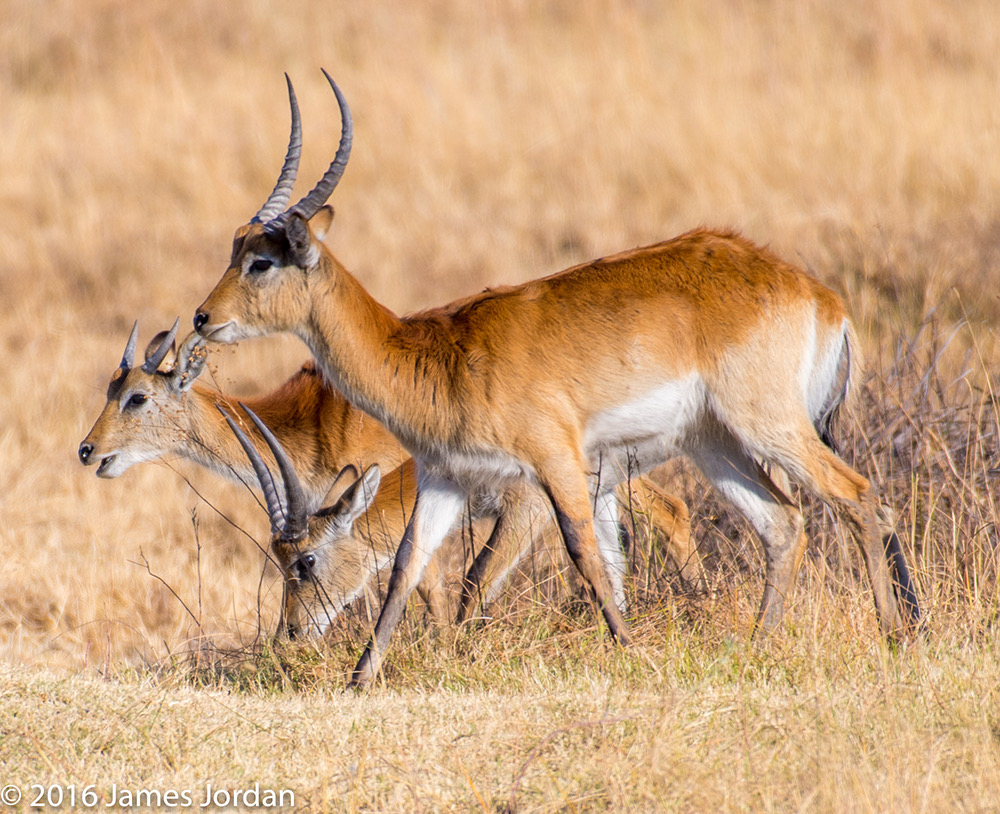
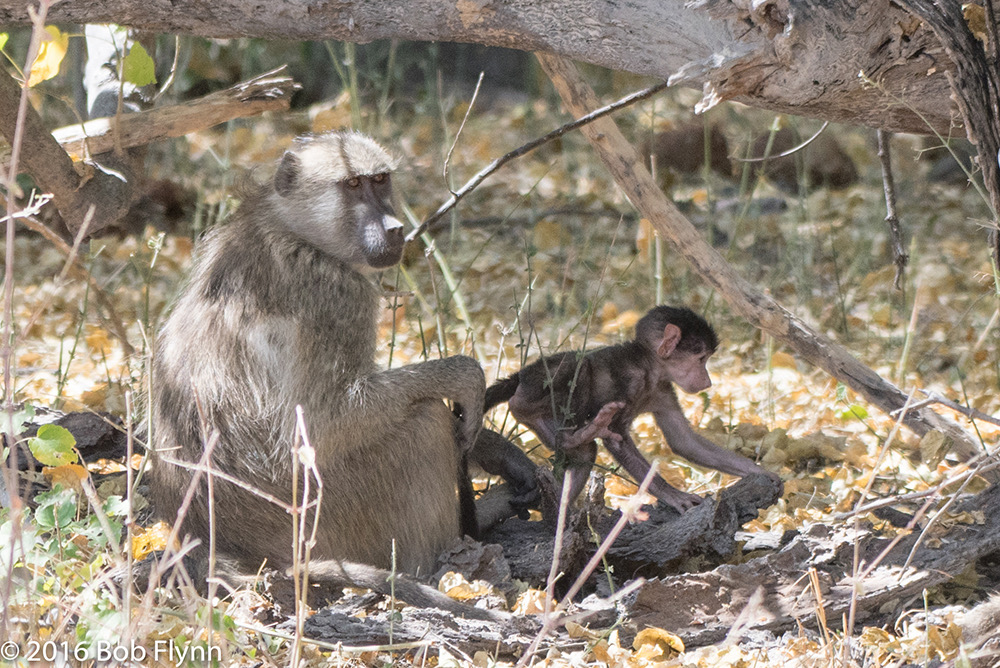
When we finally broke from the pan, Stanley decided he wanted to do a cross country look for the lions. We still had an idea about where they might be, but they were in a roadless area that has any number of hazards. Ironically, we did find them, but by taking a very long, circuitous route through some of the remotest bits of the delta. Problem is, once we found them, we couldn’t describe to the other vehicles where they were, because we didn’t know where we were. So after a bit of shooting, we left the lions to try to find a route back to someplace known, so that we could then lead the other vehicles out.
But no sooner did we get back to known territory that the vehicle that wanted to follow us out found a honey badger digging under a log. “Honey badger don’t care."

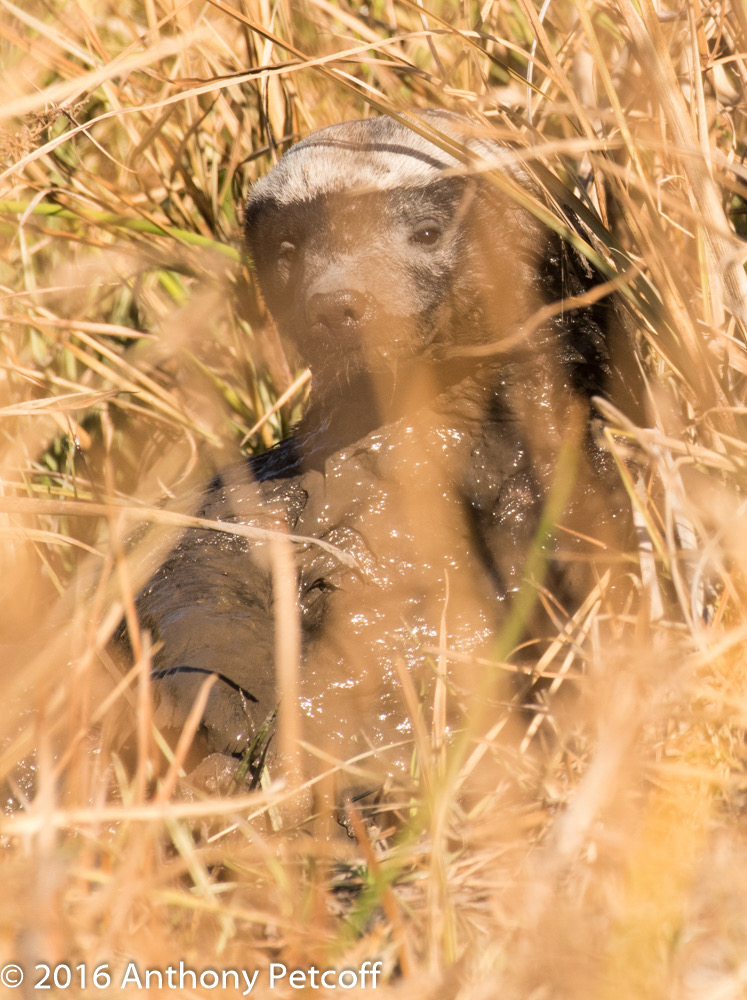
By the time we got back to the lions, they were down for the day and sleeping, so back to camp for lunch. Wait, what’s that on that termite mound as we approach camp? Why that would be a python. Okay, now we had a new toy to play with. A few shots and it was down the hole in the mound, so we headed to lunch. But the next vehicle behind us saw a bigger python at the same mound, so we turned around and headed back when we heard about the “six meter python.”


Unfortunately, the second python was probably only four to five meters long—much longer than the one we had seen before, though. What impressed me more than the length was the girth. This was one fat python. It glistened, so it probably had been in the water not far behind the mound.
Time for lunch. Phew!

After lunch we drove around for a long time with only minor success. Just before sunset and returning to camp we found two lions. Only these lions were…wait for it…mating. I’m going to keep this Safe For Work today, but I’ll warn you that tomorrow’s blog may be NSFW for some of you.
As often is the case out here in the wild, there’s some story we’re not fully privy to. The male in the mating pair seemed awful young to be mating with the fully mature female. Nevertheless, that’s what was happening here. Then we noticed a third lion, a large, beautiful fully adult male (see above). Wait, why isn’t he chasing the younger male off and doing the dirty work?
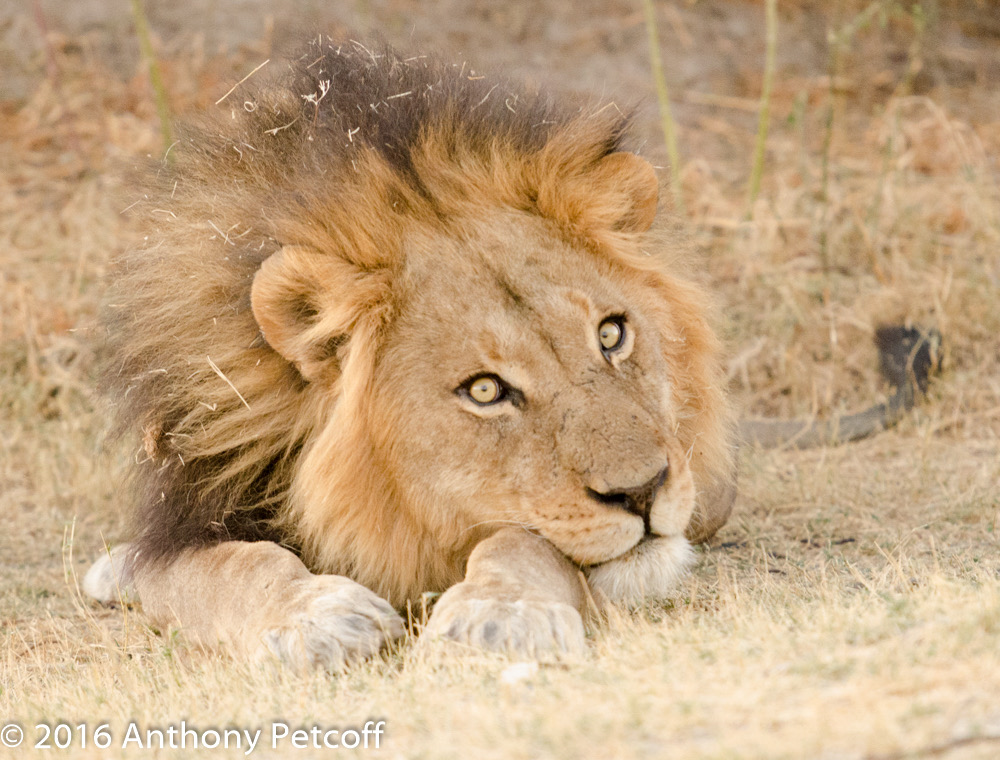
Stanley’s theory was that we must have come near the end of estrous and the older male had had his fill and wandered off, leaving the female “available.” But still, that seems very un-alpha male-like to me. I’d be chasing…
We waited for a chase right up until darkness, but the big boy just sat there a hundred yards away and watched. Strange.
Meanwhile, Anthony caught this image of my vehicle at the mating lions. Four different strategies for shooting in one vehicle ;~).

Shooting down low like I am has its benefits (see eye level shot Anthony took, above) and drawbacks (look at how tall the grass is: it gets in the way if you’re not careful in positioning. Fortunately, these lions have picked an area that’s clear of grass to do their mating.
More tomorrow.
10. Moremi Too
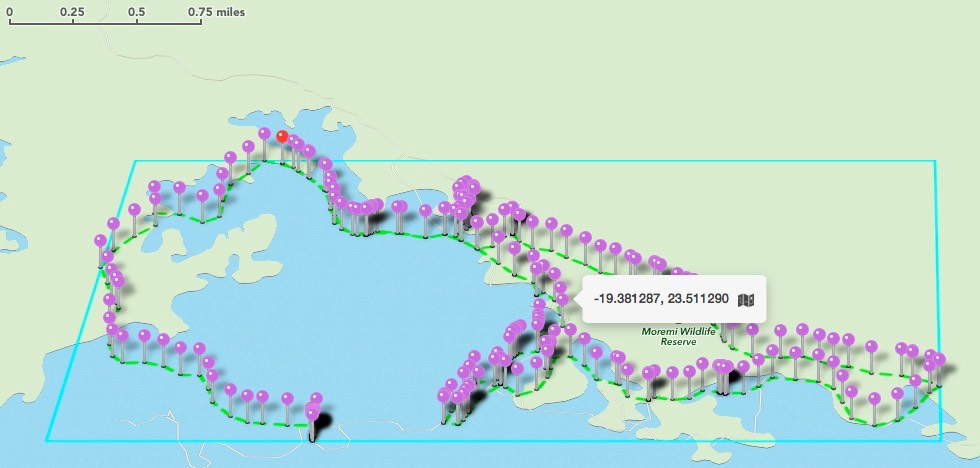
The night sounded with the call of lions. Obviously, they haven’t moved off from our camp. Every time the male lion sounded off, the hippos decided that they needed to reply. Fortunately, I can sleep through such cacophony and got a good night’s sleep.
But the presence of lions just outside camp—especially mating lions—meant that I wanted to see them again, and fortunately they were easy to find, and on the right side of an “island,” facing the just rising sun.
So an aside. Why are quotes around “island”? In the Okavango Delta there are slightly higher areas that support more than grass and brush type plants. When the water pushes far down into Botswana, the places between these higher areas flood, and for the most part trees have a tough time thriving in such areas. But in the higher ground, you’ll find the full botanical infrastructure, including trees, and obviously, shade. These little “islands” often are formed around termite mounds, and provide respite from wind, heat, and even some of the night cold. Thus it’s not surprising to find the big cats and predators using these areas, while the prey like the more open areas with low grass—some of which is low because they grazed it so—and small bushes.
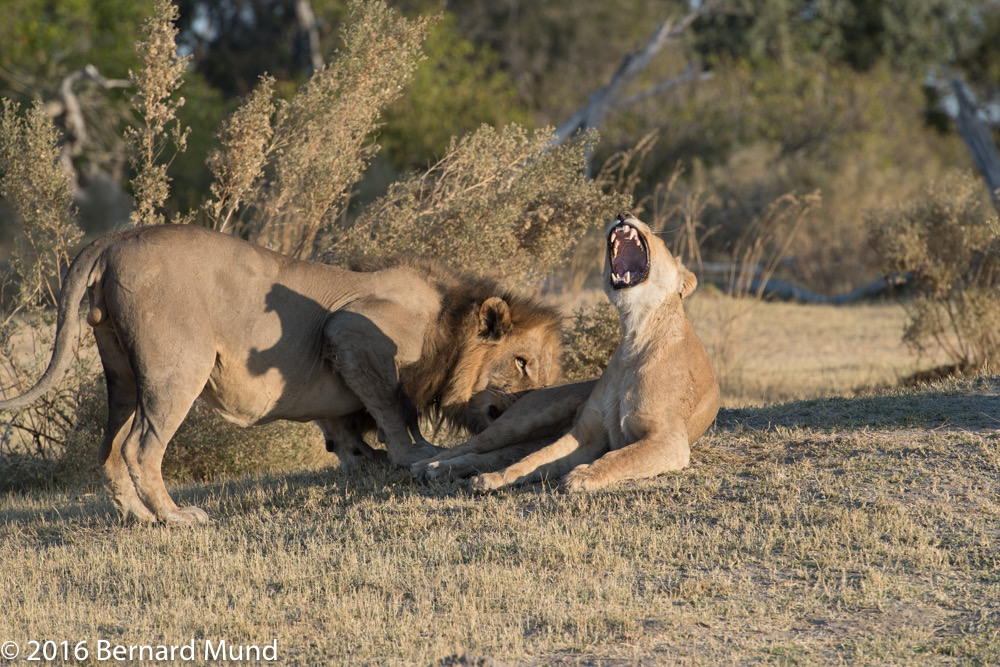
As I noted, the lion pair were sitting on the sunrise side of the island out in the open. A surprise awaited us, though. The male doing the mating was no longer the younger one, but the older one that had been sitting off to the side last night. Obviously some of those noises we heard in the evening and night were the result of a little alpha male skirmish as the older king of the jungle dethroned the would-be king.



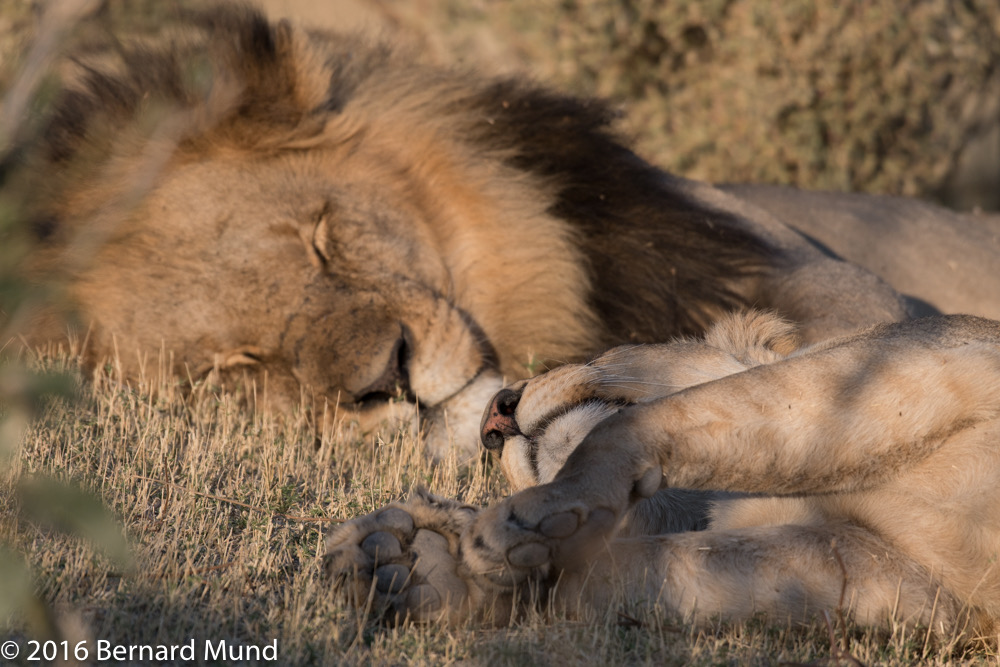
Within moments, we had our first mating. A few seconds of thrusting, a final bit of agony on both sides as the barb-tipped penis was being withdrawn, and then a bit of grooming for the female and sleep for the king. Another of our vehicles joined us for the second show minutes later, as did a surprise guest: a bushbuck.
Strangely, she stood dead still for awhile, then approached the lions. A few steps forward and another freeze. Another few steps of approach and then freeze. This voyeur stalking kept going on for awhile until finally, after a long and thorough examination, she let out her wheezy alarm call. Guess she wasn’t sure they were lions before, which is why she was approaching. I’d have to say she probably needs glasses, because if you she couldn’t pick out that these were lions from far more distance than she approached, she needs help.
Okay, bushbuck alarming, lions mating. Again. Third show this morning. Each time the female would find a slightly new place to position herself, and the male would then come nuzzle next to her until he regained stamina. And yes, she turned herself towards the alarming bushbuck and gave it a thorough examination. I guess sex was more important than breakfast.
It was after this third show that one of the students declared that they were satisfied; we could move on.
Not really. These lions were still in spectacularly good light, we didn’t know where the third male was, and we hadn’t seen all the things that happen in mating. I explained that a professional making such a find as this pair would sit on it as long as they could and hope for some new behaviors. They’d consider what they had already shot and think about other options for framing and position. After all, what better photographic situation might you expect than a pair of mating lions? Would you really drive around all day looking for better?
As if to prove my point, the fourth show commenced. The position for photographing them was even better than before, but immediately after the proceedings, the male and female went into a roaring match. Behavior we wouldn’t have seen had we just shot the lions once and left.

Of course, to disprove my point, we were driving up to meet with our other vehicles for tea time when Stanley found a wild dog den with pups. Out and in the open. In fact, the story at the sighting was even more elaborate than that. There were dozens of vultures about, too. But I’ll get to that in a moment.

Yes, in this case we were rewarded with an almost magical and unthinkable morning. Two rare and exciting photographic situations such as we had in one morning just doesn’t tend to happen, but here after proving me right, the gods were now providing a “sure you’re right, but sometimes you aren’t” moment for me. Had we stuck with the lions for all morning, we would have never seen the wild dog pups.
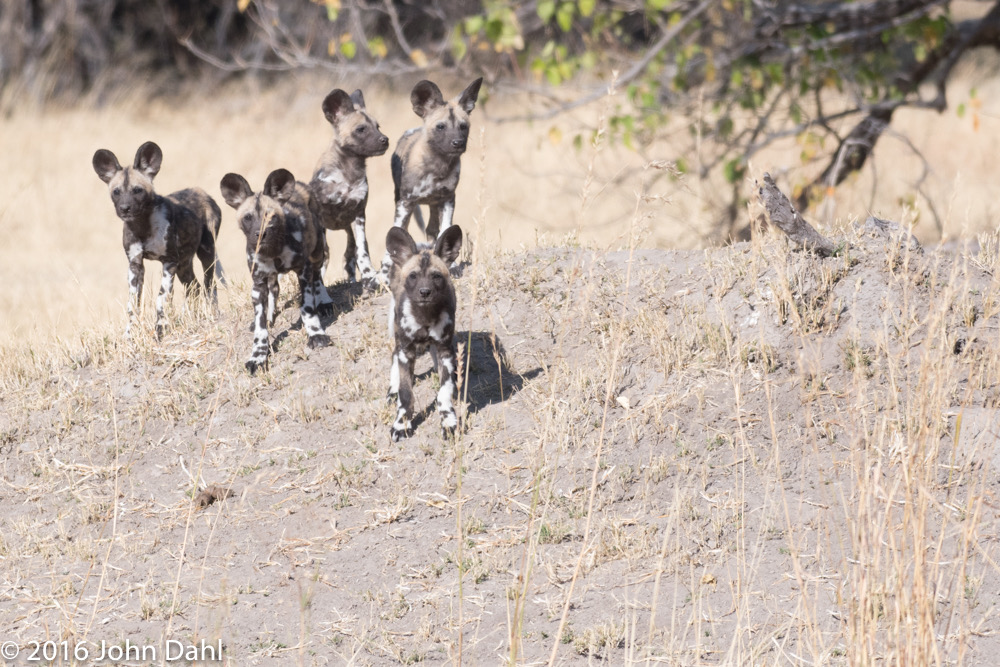
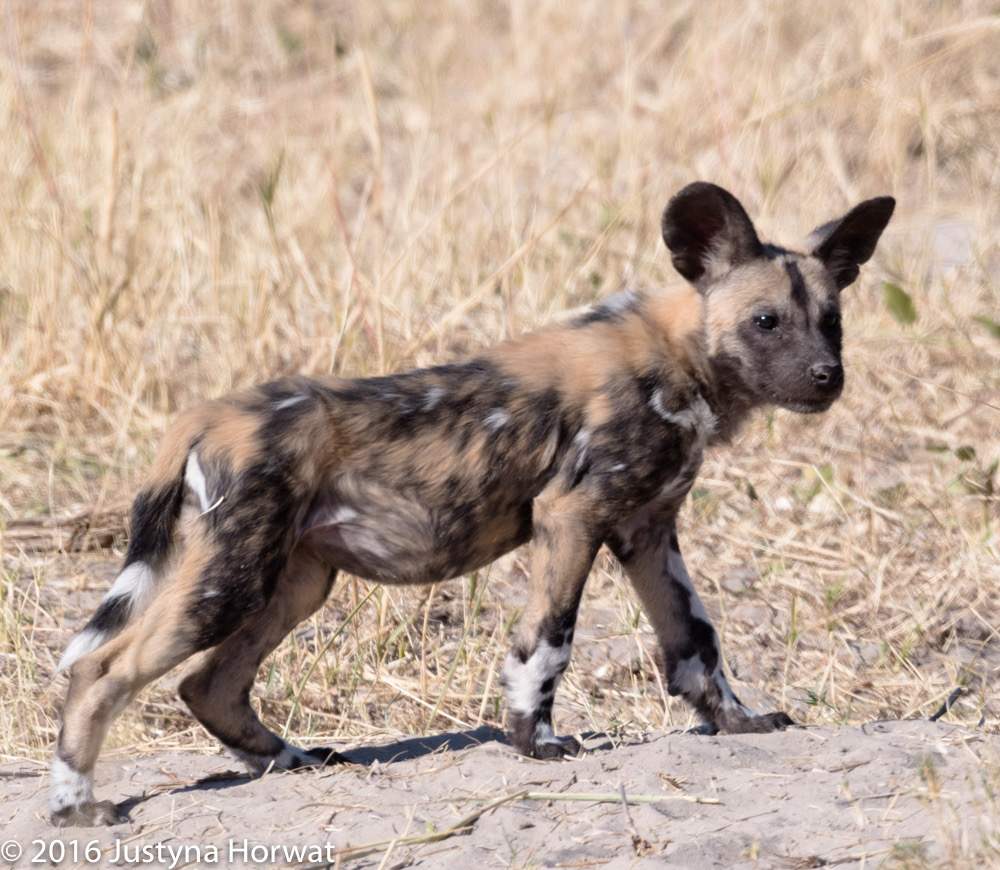

Okay, so the story at the dog site seems to have been this (and yes, we have documentary evidence that points that way, as well as an anecdotal account from another guide who came upon the scene prior to us): first, the dogs chased an impala and it ran right through the edge of a pan, where a crocodile responded by opening its jaws and snatching it. Second, the dogs killed another impala and took it to the bones.
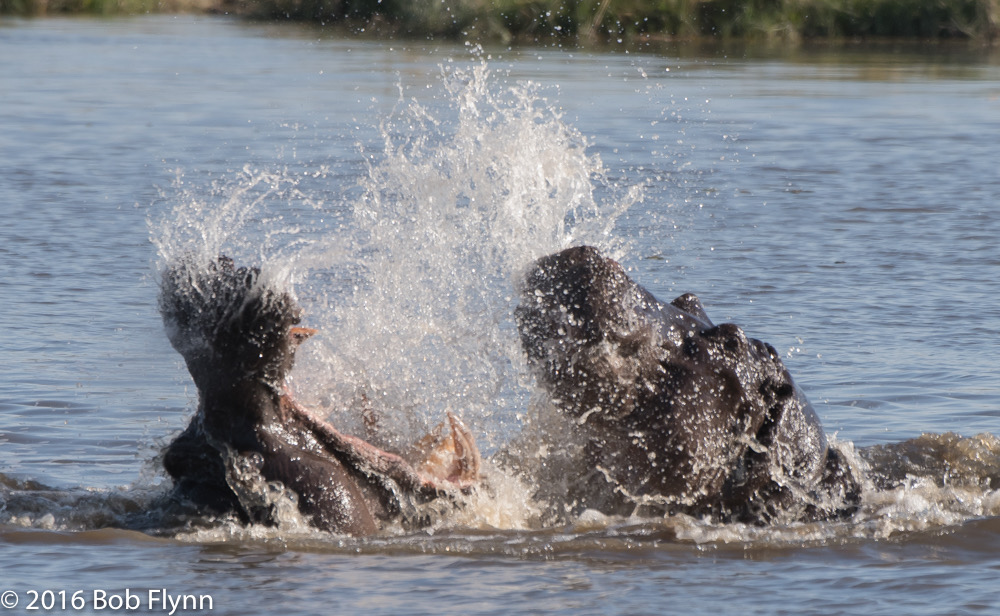

By the time the vultures came along there was almost nothing left for them. So third, as we pulled up a lone vulture was trying to find some scraps at the dog den and…the puppies would chase it off.

The adults? Sleeping after a hard morning’s work.

So the vulture would fly down from a perch in the tree, try to find a scrap, and the pups would sneak over and try to chase it away. Fun game. For dogs. For photographers. Maybe not for vultures.
After lunch, we had a short image review session, mostly because the projector was overheating and it was taking too long to go to Projection Plan B (and C).
Quick side note: remember what I said about moving this camp and setting it up multiple times and being a bit nervous about what might happen? Well, there are other operators out here trying to do the same thing, and as we drove from the lions to the dogs we came across a few scraps of garbage, which is really unusual out here. As always, we stopped to pick them up.
A bit further up the road, though, we found the reason why we were seeing such stuff: the tail gate of a truck lay in the road, along with a water and gas canister used in a mobile camp. Obviously, one of the groups that was moving their tented camp had a bit of a problem with their vehicle and hadn’t noticed yet. We moved what we found to the side of the road and tried radioing what we were finding in hopes that whoever lost them would know to come back and pick them back up.
I think I should remind Barnes, our camp chief, to look at the tailgate tonight ;~).
We had more going on today, but I’m going to save the photos from the afternoon for the big photo wrap-up at the end, as they’re a somewhat random lot of things, many of which I don’t know the story behind because I wasn’t there.
11. Boat to Camp O

Even before we got loaded into the vehicles this morning we had a visitor: a giant eagle owl sat just above one of the tents, so we all went out to photograph him.

We’re on our way up to the boat dock in Xakanaxa for our voyage up into the delta, but one nice thing is that the lions are still mating, so we’re not going to pass that opportunity up.
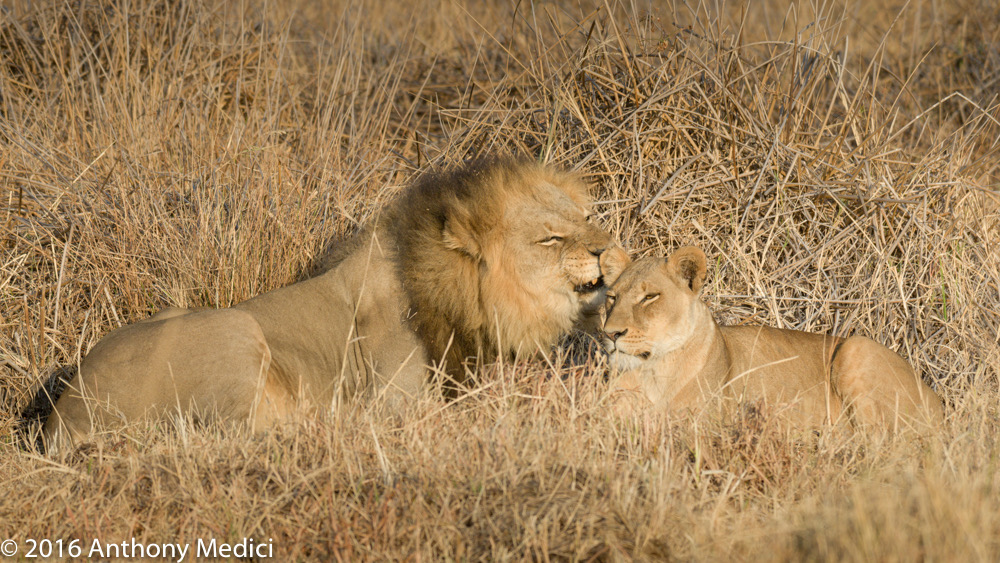
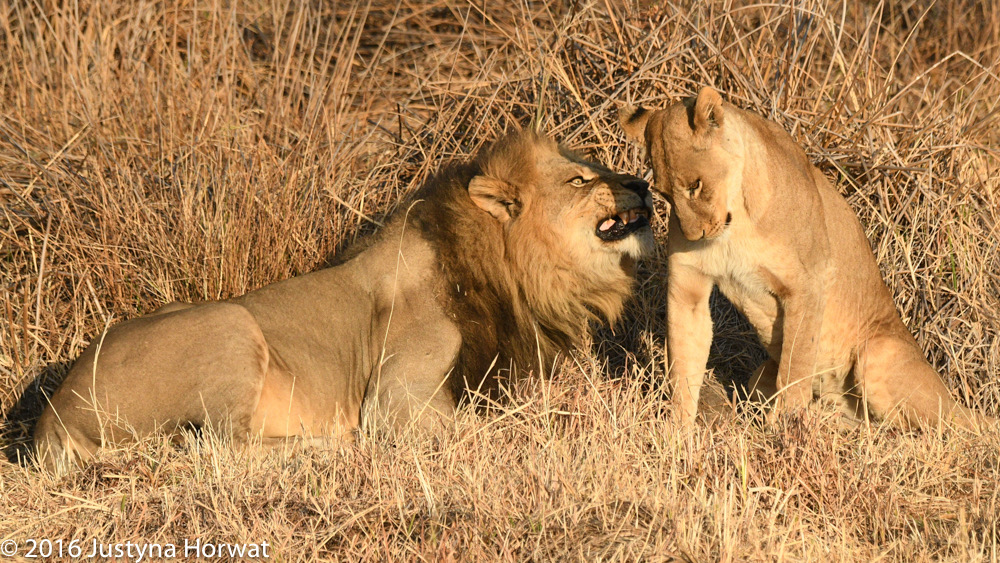

Also, the wild dogs with pups are on the way up the road we need to take, so we get one more morning visit with them, too. They’re being a little more chill today, as they ate yesterday, but I suspect they’ll start working towards another meal soon. It’s a fairly big pack with a lot of pups to feed.
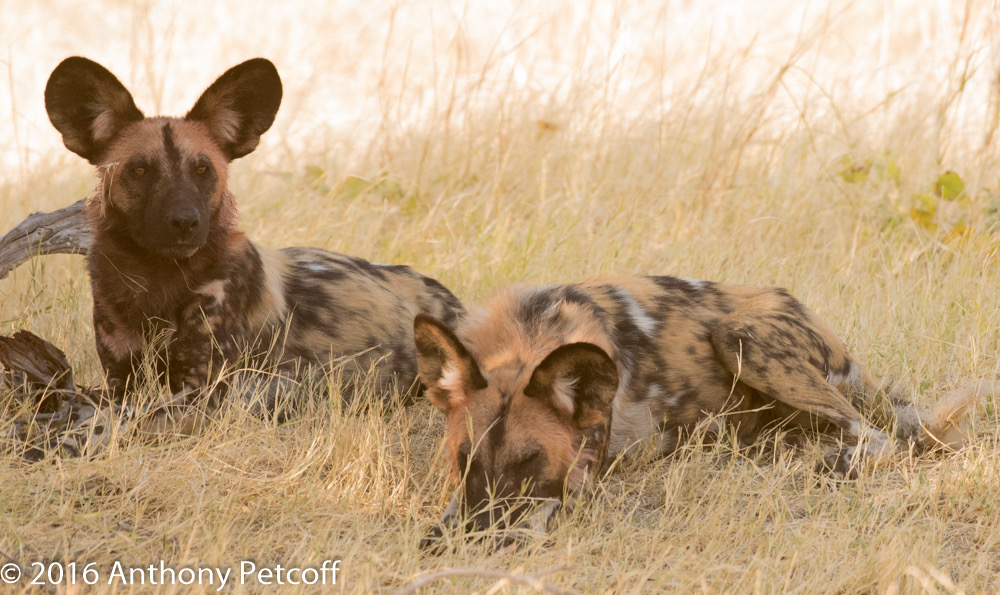
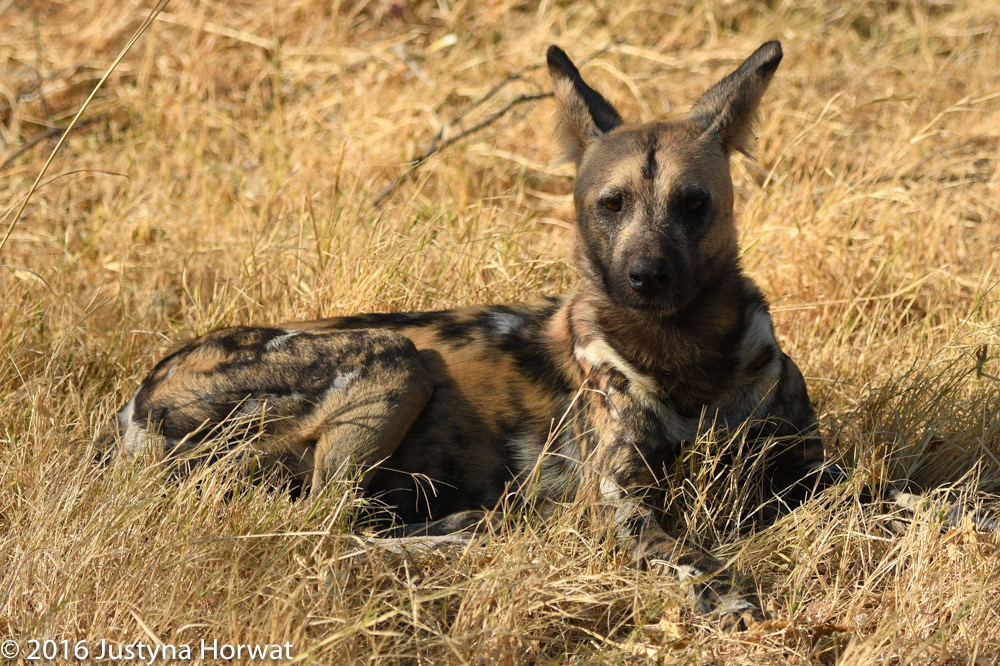
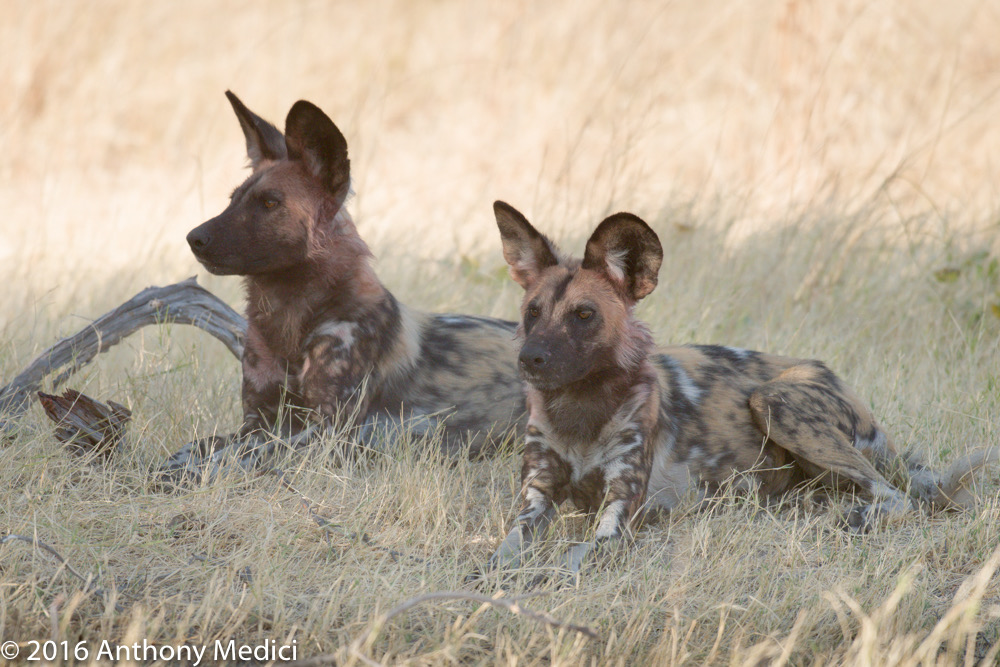
Unfortunately, our Camp 14 location puts us far from the Xakanaxa docks, so in order to get up there by 10am we have to do a fair amount of driving. We, of course, stop for anything we see on the way, but we’re not in “hunt” mode this morning, we’re mostly in transit mode.

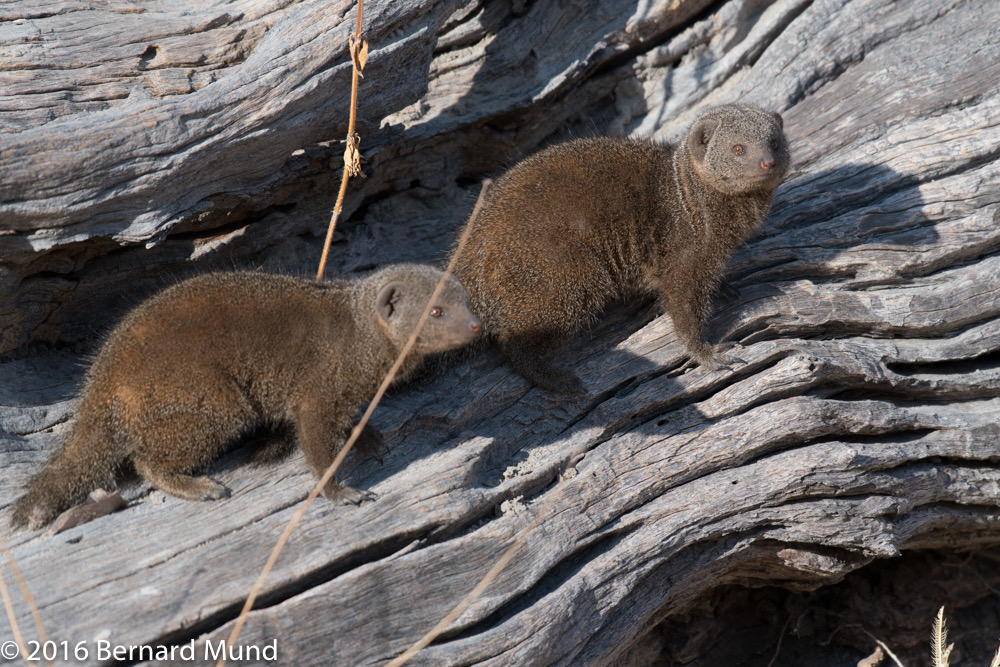
We’re using Capricorn’s new boat this time (notice the seat up on top of the left boat), so of course I reserve that one and put Tony on the other, older boat.

The joys of being El Hefe (that’s me comfortably seated at the right, triggering a Ricoh Theta I mounted on the bow from my iPhone).


As usual on the boat, the primary thing we see is birds, though every now and again we get some animal in the reeds.
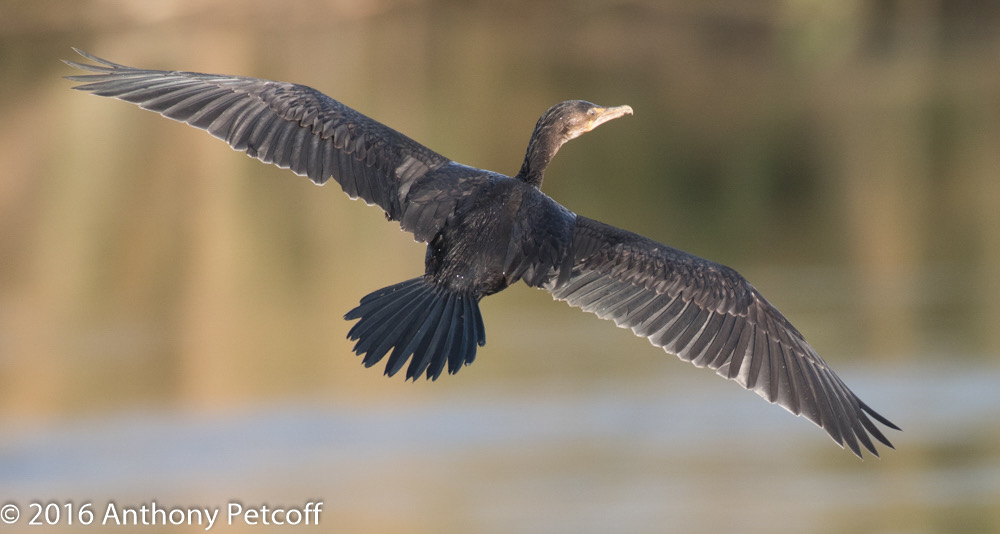

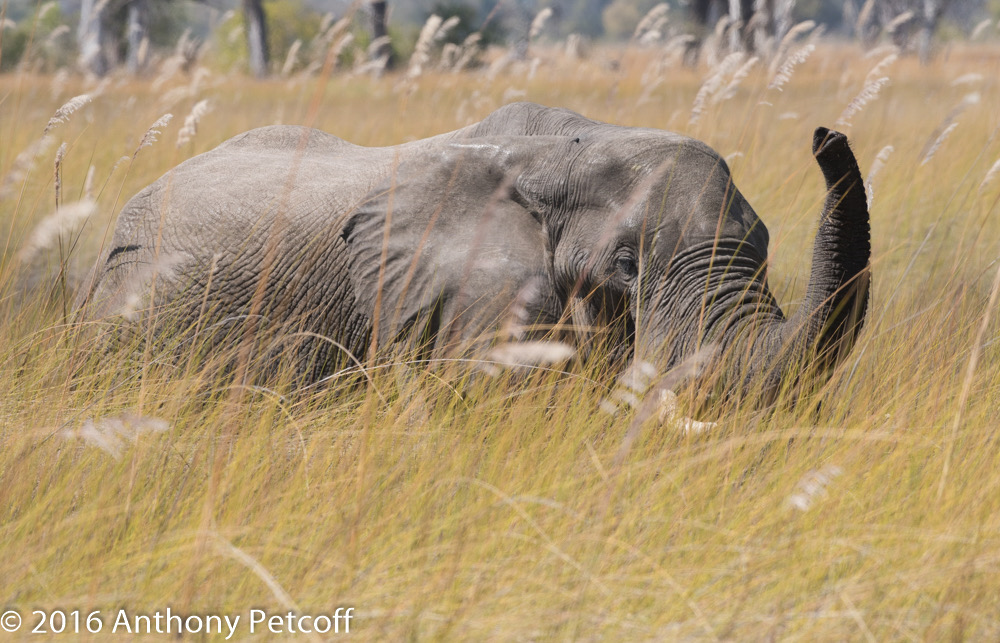
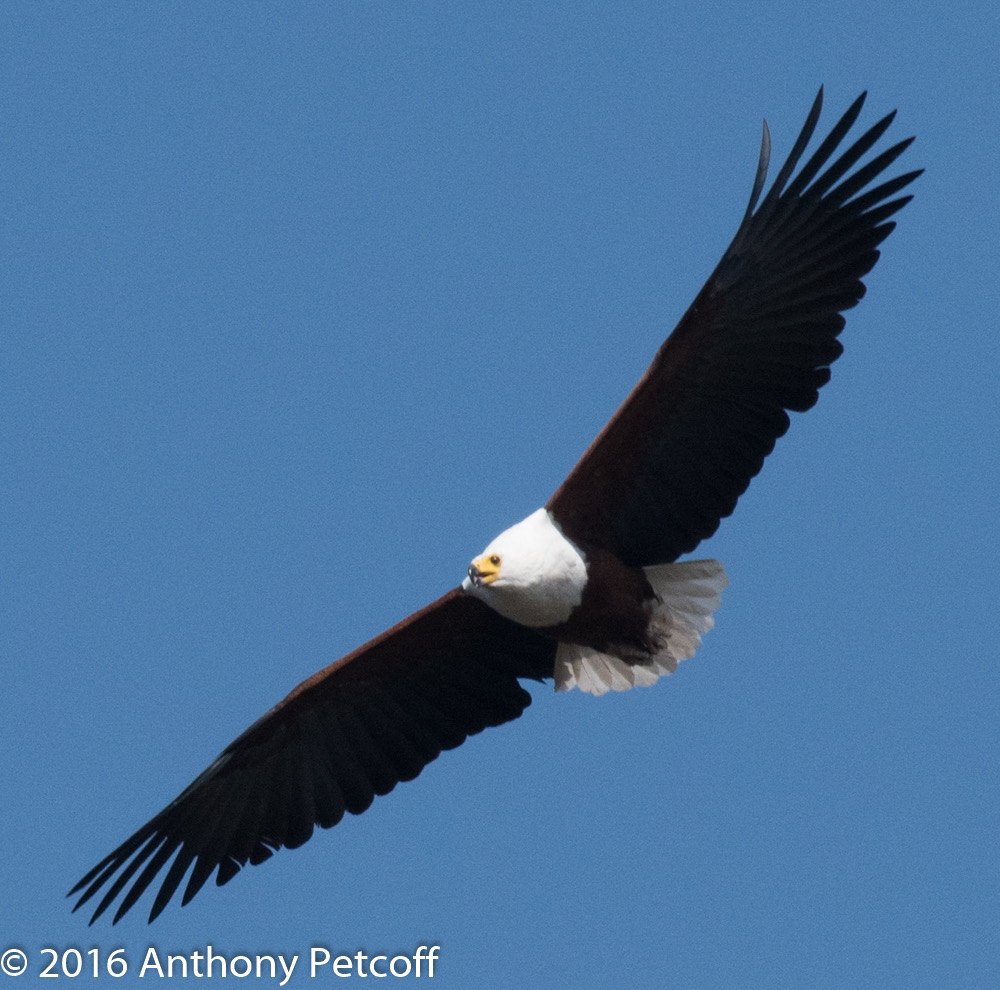
Someone forgot the chairs and table (shhh…ane), so we have an impromptu in-the-water lunch stop today.

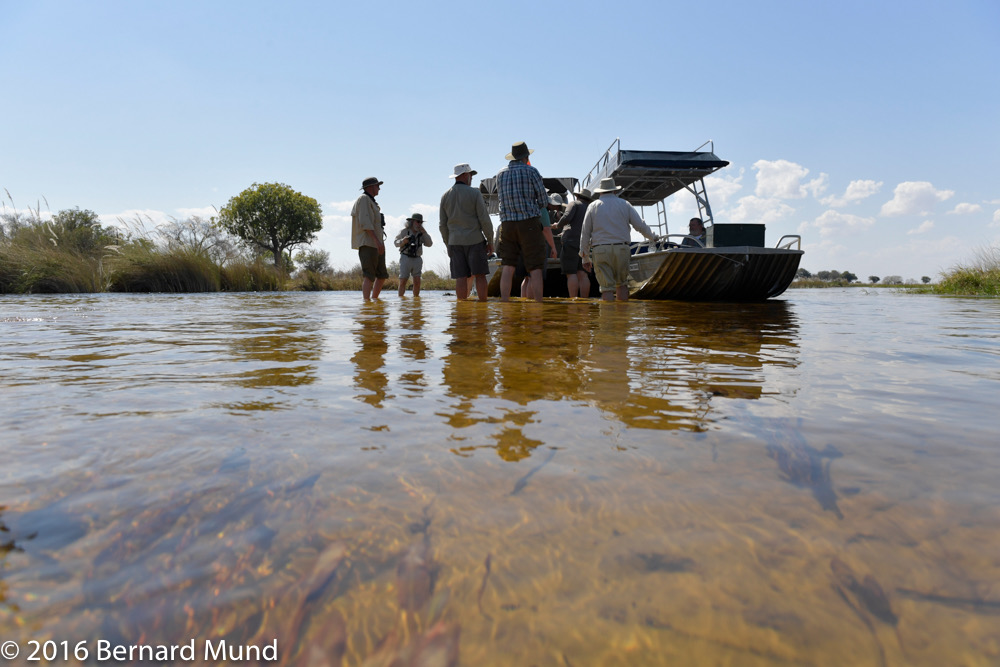
After lunch, we spend some time at the heronry (small circle on map above, better view of the detail on the map below):
It’s always a little hit-or-miss on whether the heronry is fully active or not when we arrive here, as it seems there are a lot of factors that go into when the birds all come to nest. I’ve seen this heronry highly active in late July, I’ve seen in not active until early September. Most of the time, it starts to come alive in late August, and we’re a little early for that. Nevertheless, there’s some activity here, and we spend a fair amount of time drifting around the one small island here to try to capture that.

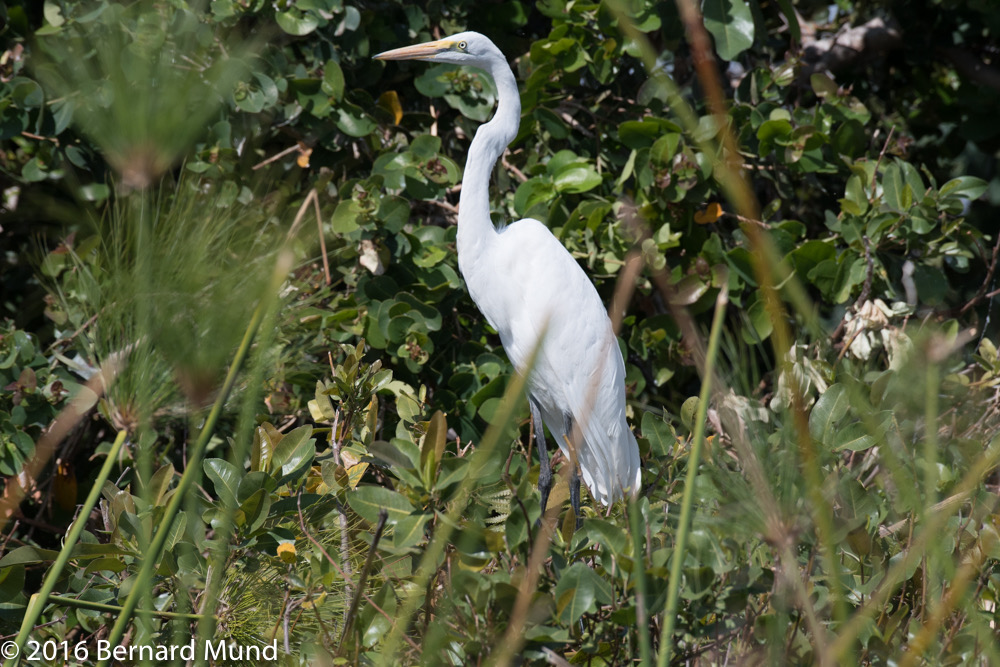
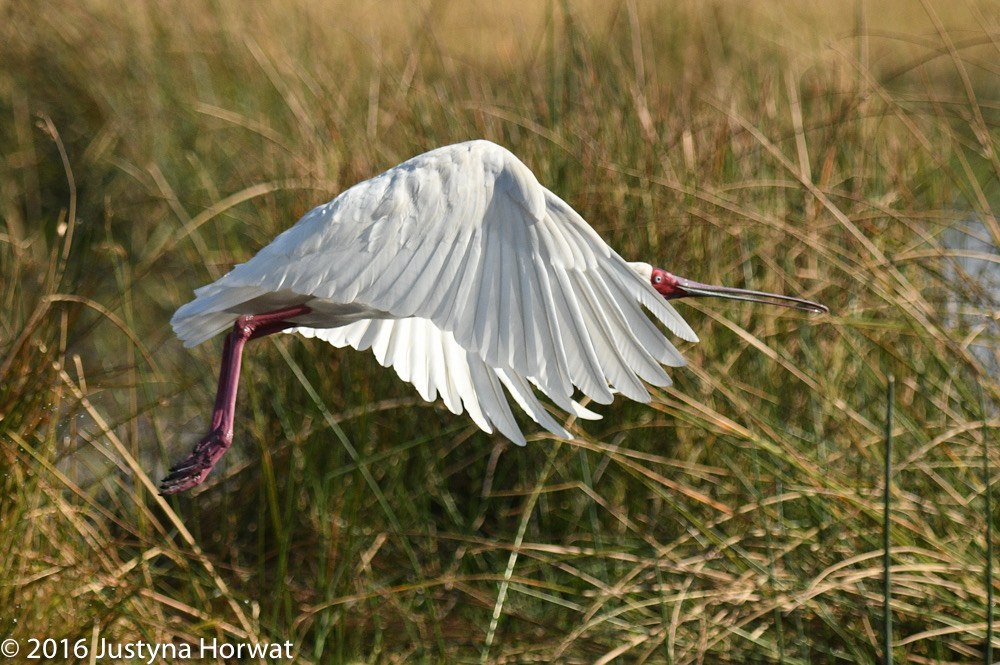
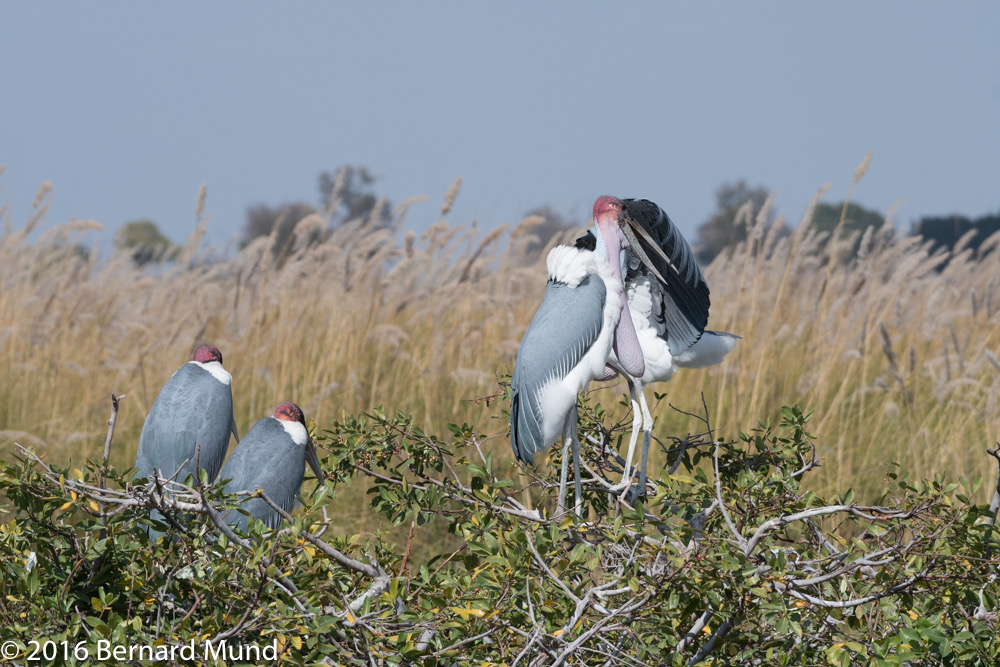

By the time we finished up at the heronry it was time to boogie, as we’re starting to get late to arrive at our destination. The boats have to get back to Xakanaxa before dark, and the Camp O staff isn’t going to stand on the dock all afternoon:
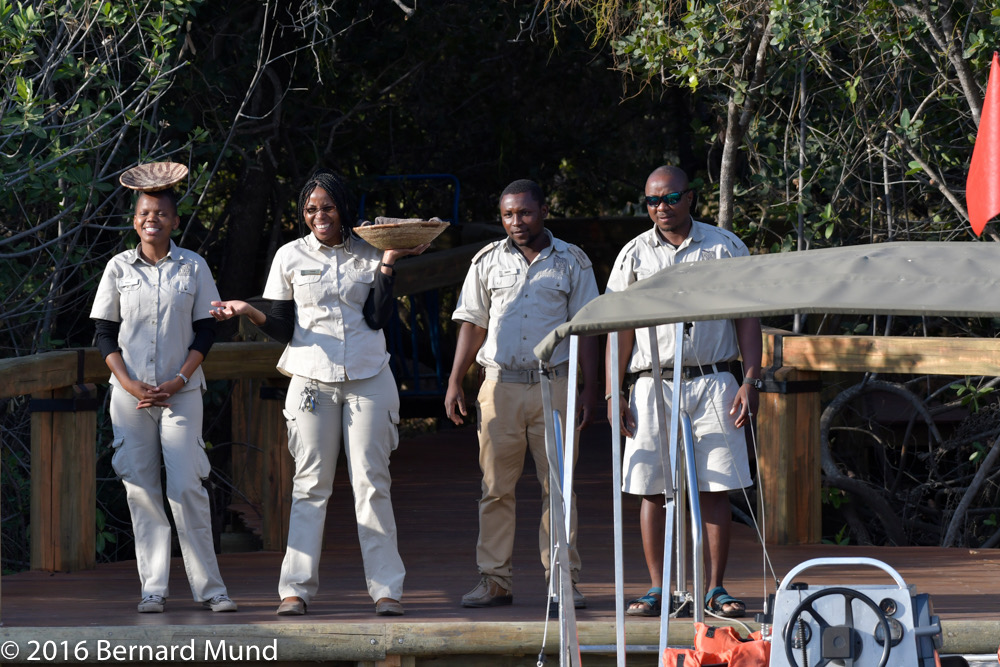
Camp Okavango just reopened this spring after a multi-million dollar overhaul. And it’s quite an overhaul. Everything is new. New common and eating areas, new pool, new decking, new dock, new raised trails to…you guessed it, new rooms.
These aren’t tented rooms any more, they’re full on permanent cabins (still raised up on stilts in case of flooding). The twin shower room—yes, it’s room-sized—in each cabin is bigger than my living room at home, and the 2” granite floor and walls are better materials than you’ll find anyplace in my home or office. Indeed, I start wondering just how much weight the shower room is. That’s one heck of a lot of rock that has to be held up. Scouting under the building, well, it’s got one heck of a lot of 6” crisscrossing poles supporting that area.
I can’t say that the cabins are particularly well laid out. They seem to have a lot of open space that isn’t functional, but they’re beautiful and now sit up higher so can get a view of the marshy areas in front of them.
Funny this is, the new camp still has the old problems: animals. The electrical fence isn’t up to keep the elephants out yet, not that worked previously. One particular elephant used to just run at the fence as he could, endure the brief shock as he knocked it down, then saunter over to his favorite tree. I notice he’s at the tree tonight ;~).
Meanwhile, the hippos have decided they like the crawl space under the now-raised camp, so they come in and wander around under there at night. Already we’ve had the first hippo-caused water outage, as one managed to break a water main doing this under deck crawl.
There are no simple solutions out here. The animals do what the animals want to do, and you pretty much have to put up with most of that.
One nice thing, though, is the new Camp O is now all solar powered, complete with a big battery farm. We’re putting the camp through a pretty good stress test this evening, as we’ve got over a dozen computers charging on top of battery chargers and all the other electrical use a full camp entails. I’d met the fellow who installed this solar installation earlier on the trip (at Hyena Pan, where he was working on solar installations for their water pump systems), and he said that peak load on the camp was from 6 to 8pm, and if we were going to bring the system down, it would be then.
Well, it’s past 8pm now, we’ve had dinner, and it’s time to sit down with the students and do a long image review session.
12. Walking in the Delta
One thing Tony and I discovered last night is that our cabin is a long way from the community area. Indeed, about as far as the new camp gets from its center. That turns out to be about a quarter of a mile. So walk to breakfast, walk back to the cabin to clean up and grab equipment, and walk back to the docks. That’s three-quarters of a mile walking already this morning. Oops, forgot something, so by the time I hit the docks I’m already up over 1.25 miles of walking.
Oh, did I tell you we were going on a hike this morning? ;~)

This is one of my favorite things to do in Botswana: walk through the wilds. But first we have to navigate the channels a bit (above). We take the boats from the red pin at the right of the map (below) to the next red pin, which is the shore of a nearby island. We’re going to hike out and try to find the buffalo herd and see what’s happening on the island this morning.

We break into two groups, each with a guide and head out to try to find the animals.
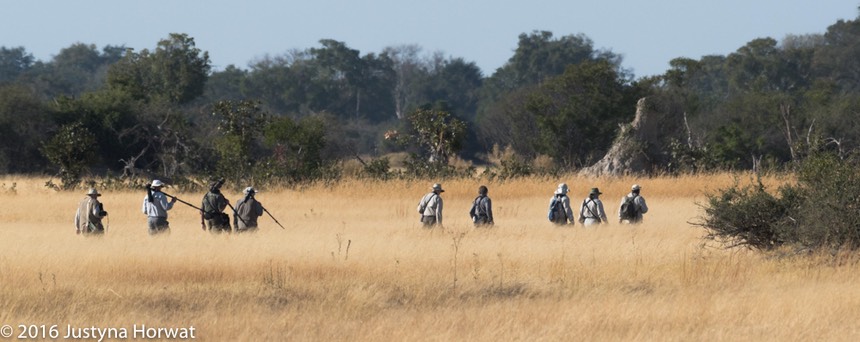


Unfortunately, we’re not seeing anything but prey as we walk.
Though we eventually get to the buffalo herd, not much was happening out there that we could get into photographic range, so many of us started concentrating on birds.

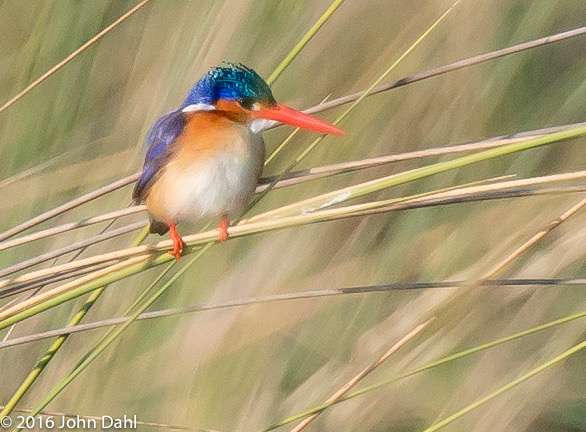
As it turned out, we did encounter a fairly rare bird, the Western Banded Snake Eagle. He’s not really an eagle; eagles have feathered legs, others are faux, e.g. the snake eagle. We were able to approach him closely while he was still sitting in a Palm tree. Yes, we caught him taking off, but frankly the images that do him the most justice are when he’s in flight. Can you tell why they call him “banded”?

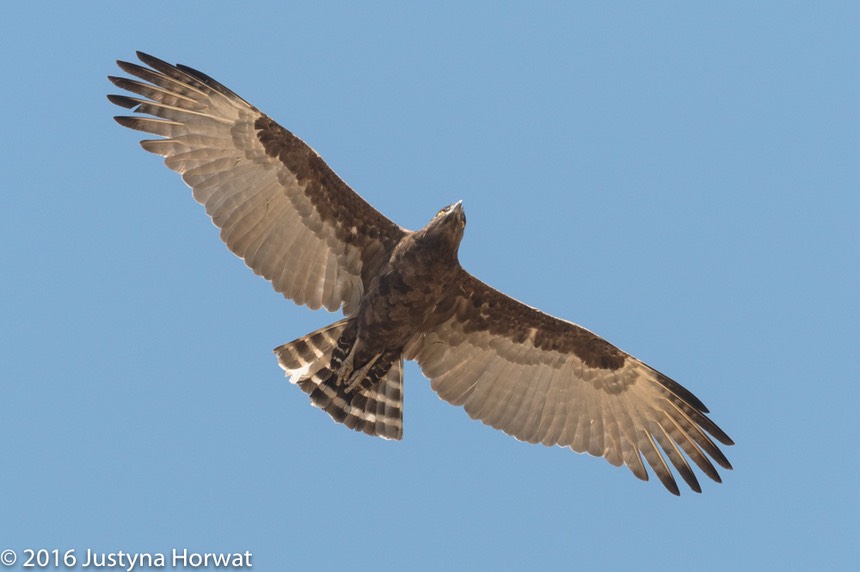
Okay, the morning amounted mostly to a long exercise session where we spent most of our time feeling like prey and didn’t get a lot of interesting shots. So back to the lodge for lunch. Afterwards, most of the group took another my favorite ways of moving through the delta: a mocorro ride. These days, everyone uses a manufacturing canoe for this, but they still drive it through the reeds using a pole.
I have to explain the map: the group took the boat out to get to the canoes (the widely spaced pins, below). Then you see the tightly packed pins of the canoe loop. Eventually they end up on the back side of the Camp Okavango island and walk across the airstrip back to the lodge:
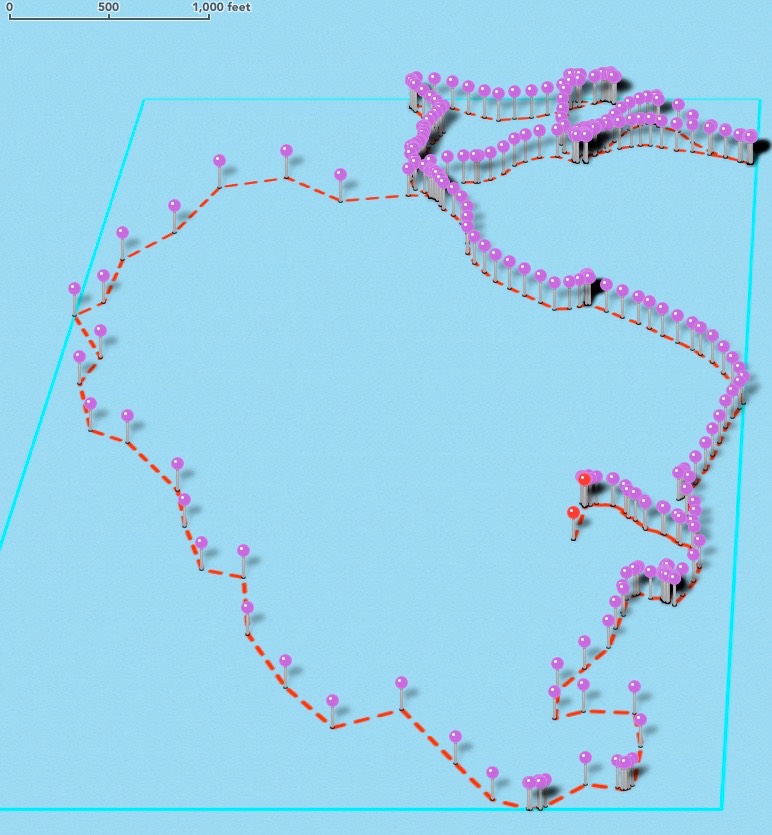
I took the afternoon off to work on catching up on the blog and my image downloading. So what follows is what I was told afterwards. The croc was shot on the boat trip over to the canoes. The elephant—as you’ll clearly see—was in the reeds with the canoes.
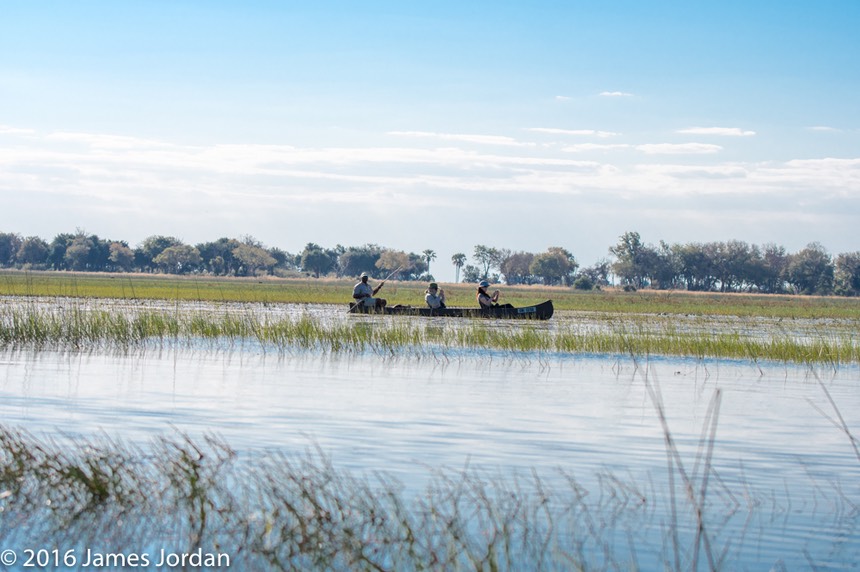
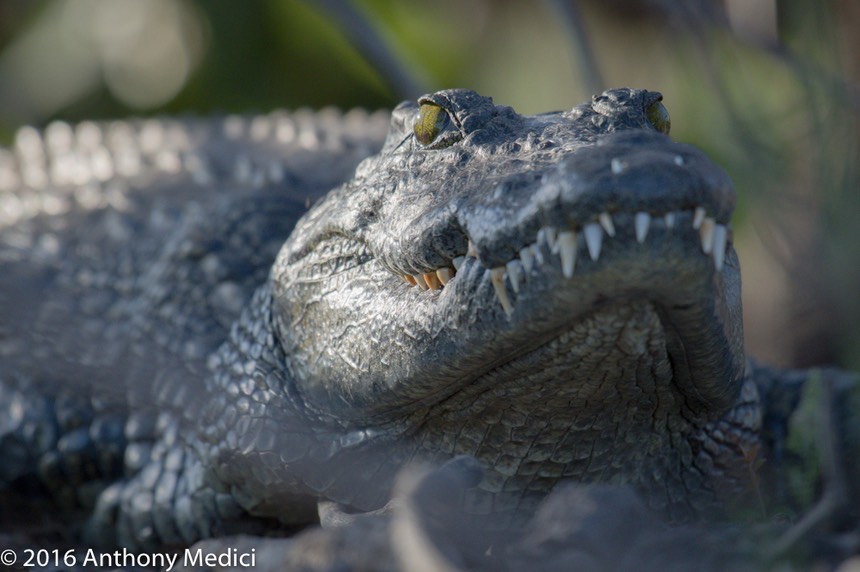
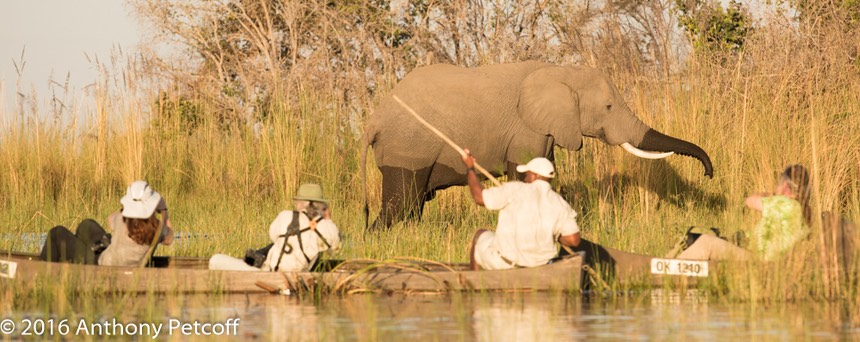


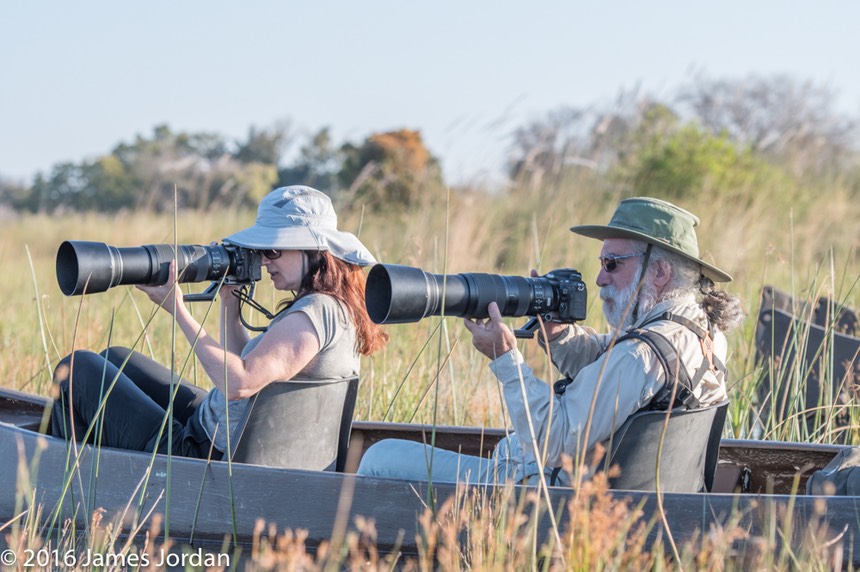
Once again, a nice dinner is followed by more image review. Since we’ve been getting up early every morning, I’ve been trying to keep these image reviews from going too long, but the chairs are too comfortable for a few—I note that a couple of folk have gone to sleep. There was a lot of exertion today, after all. So I wrap up at 11pm even though we have a lot more to discuss and review in these sessions. We’ve got another longish day tomorrow, and it’s all new stuff to most of this group, so I want them alert and awake.
I guess the days of me going to 1 or 2 in the morning doing image reviews are over. Personally, I’m here to teach, so I suspect I’d go nonstop until I collapse. But I’ve learned that on trips of this length you really need to give everyone some real sleep time. It’s a delicate balance. There’s always more we can talk about and more to learn (for me, too). But you also learn and work better with the appropriate amount of sleep.
For me, something strange happens out in the wild. When I’m home I generally need 9-10 hours of good sleep each night to be 100% through the day. But when I’m out in the backcountry that seems to change to only 6-7 hours of sleep needed to stay at 100%. I’m not sure why the difference, but it’s been like that most of my life.
If anyone’s interested, I’m watching an episode of Sports Night every night before going to bed on my iPad. I almost always end up sharing a room or tent with Tony. But since Tony’s usually already asleep in his bed by the time I get around to that, I have to do it with headphones. Given that I laugh out loud every now and then, it’s a good thing Tony sleeps with earplugs.
13. Goodbye Camp O, Hello Savute
This morning only two students went out on the boat. They report more crocs, monitor lizards, and malachite kingfishers. Most everyone else has been packing up for our flight over to Savute and then gathering at the main area for some pre-flight anticipation:

The grass airfield at Camp O is behind the lodge itself, and a short (another quarter mile ;~) walk. As usual, we have two small Cessnas, and will be putting 10 people in one, 5 in the other. For this particular flight, the first few minutes are over the delta, and then we start seeing things dry out as we head over to Savute, which is much more a savannah type landscape.
Even at only a few hundred feet off the ground, big animals just become small at this view, as you’ll see in a moment.

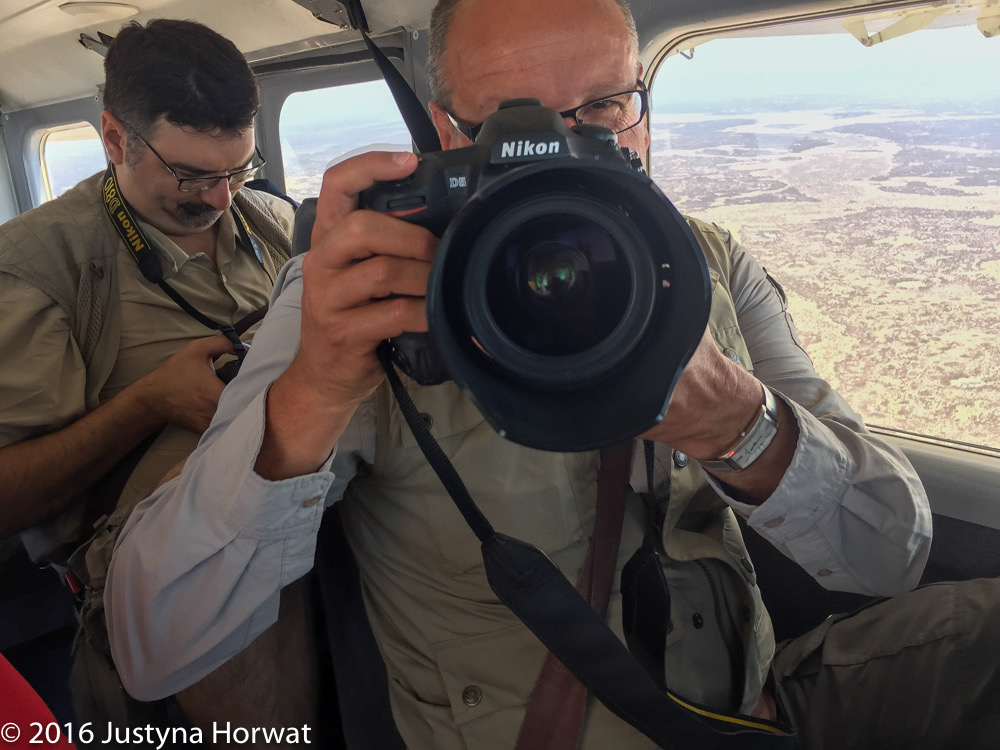

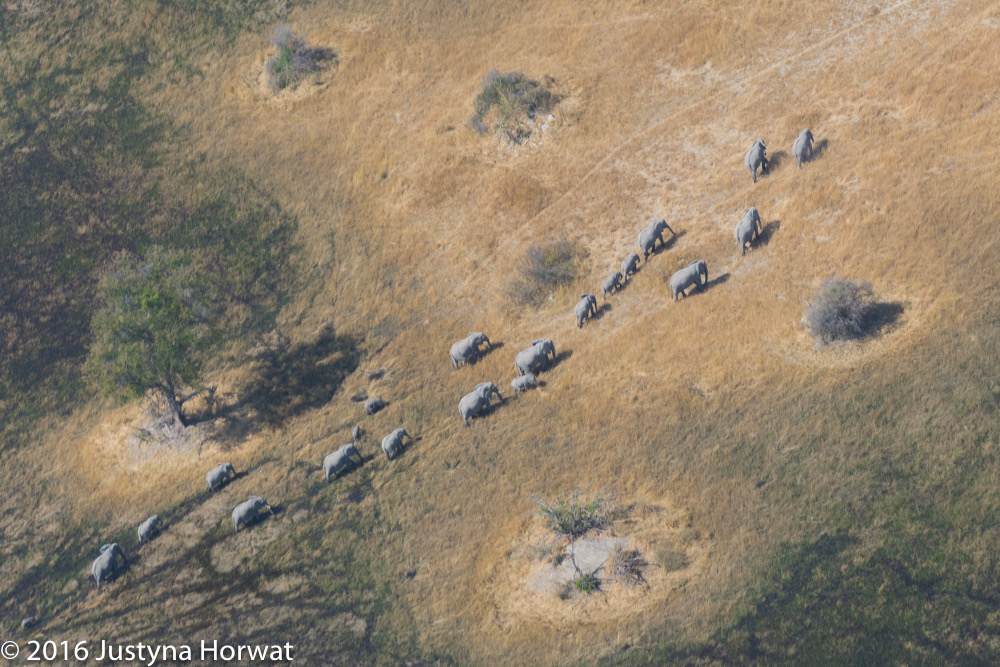
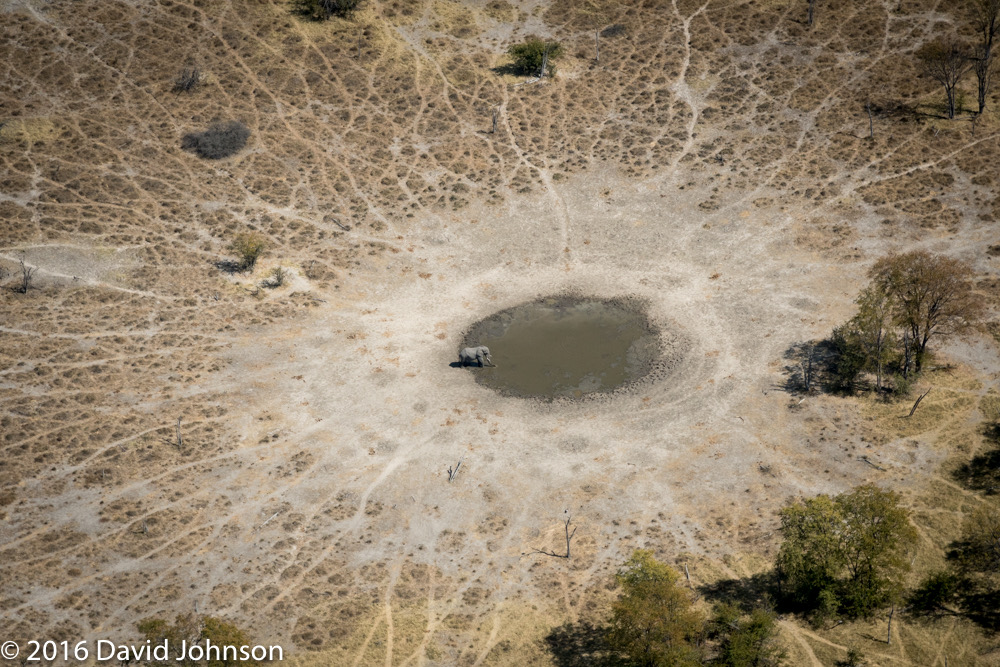
Upon landing at Savute International Airport we breezed through customs and back into our waiting Land Cruisers, where we were whisked off to camp for lunch.
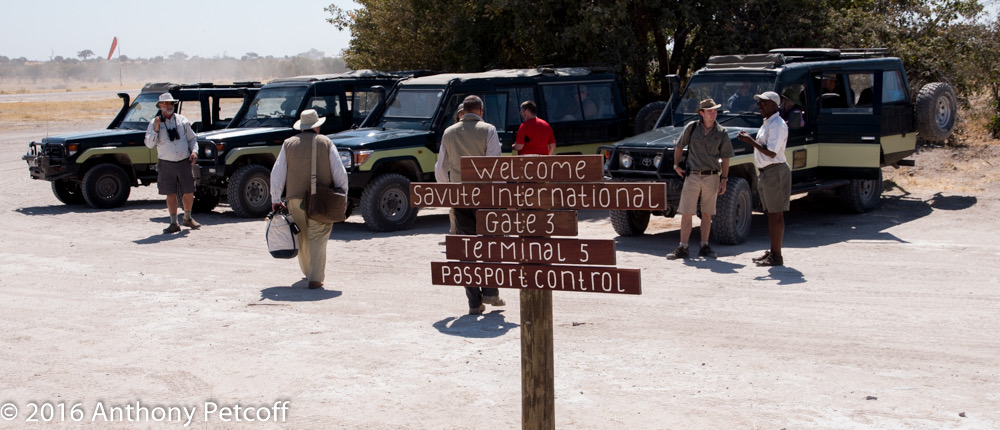
Here’s where things get sketchy. After lunch the four vehicles went far and wide, and Savute is a big area. Part of this is plan. It’s our first drive in Savute, and we’re trying to establish some level of understanding as to where the animals are at the moment. Since I only know what was happening in one vehicle for most of the afternoon, I’m going to let photos play out what was seen by the various vehicles:

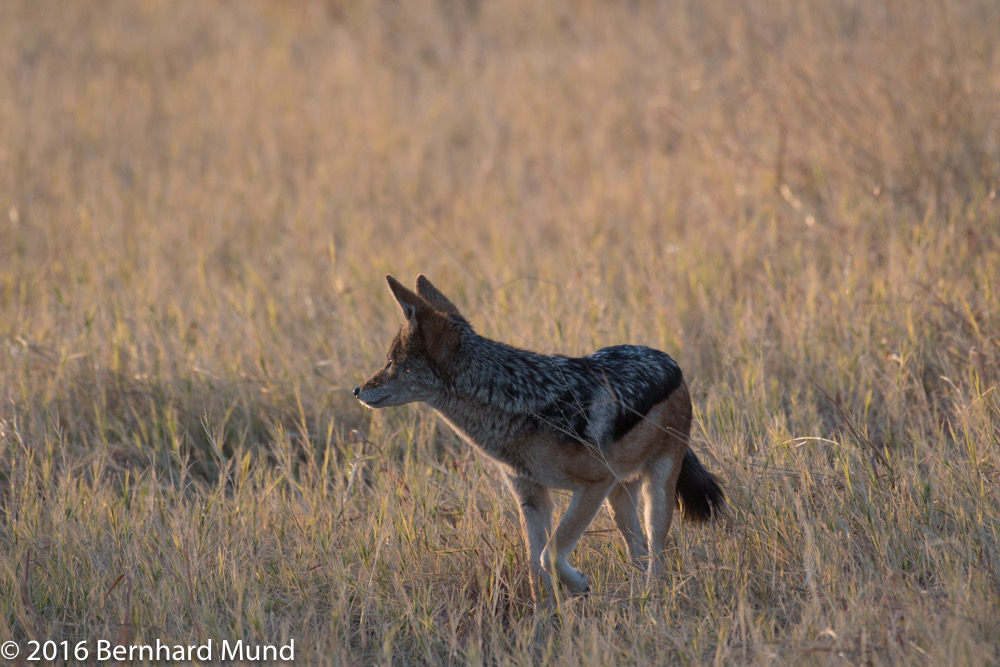


I did notice that Tony went into bird mode today, though:
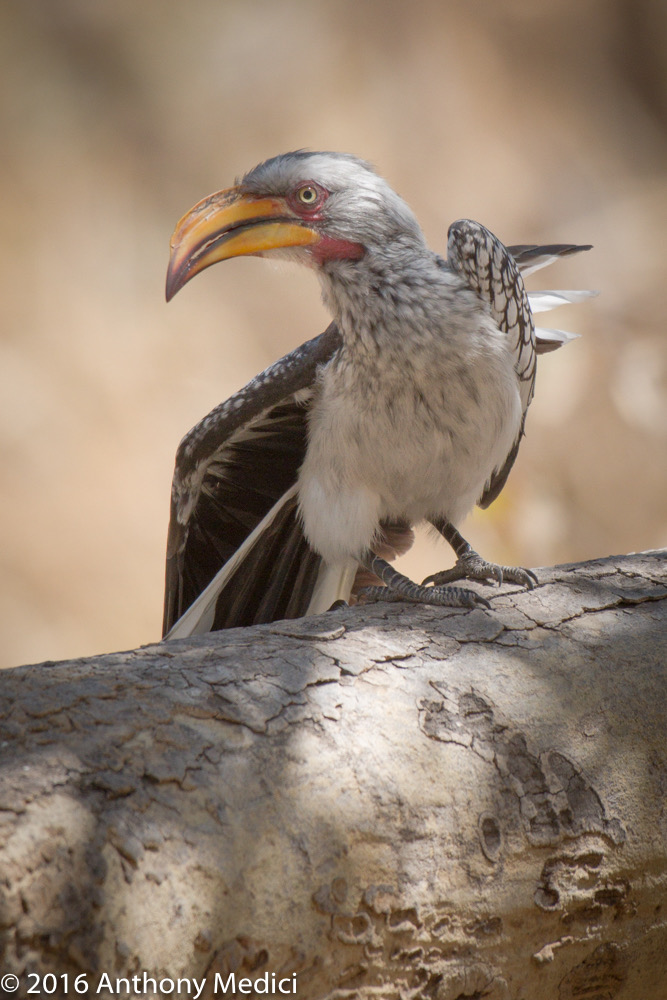



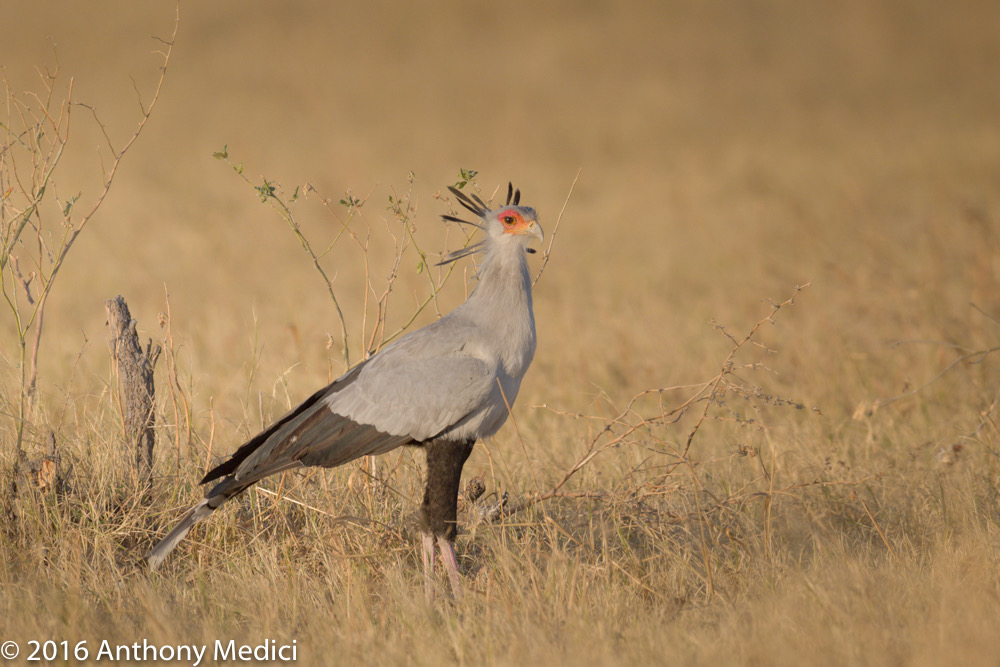
Towards the very end of the day, we finally find our first leopard:
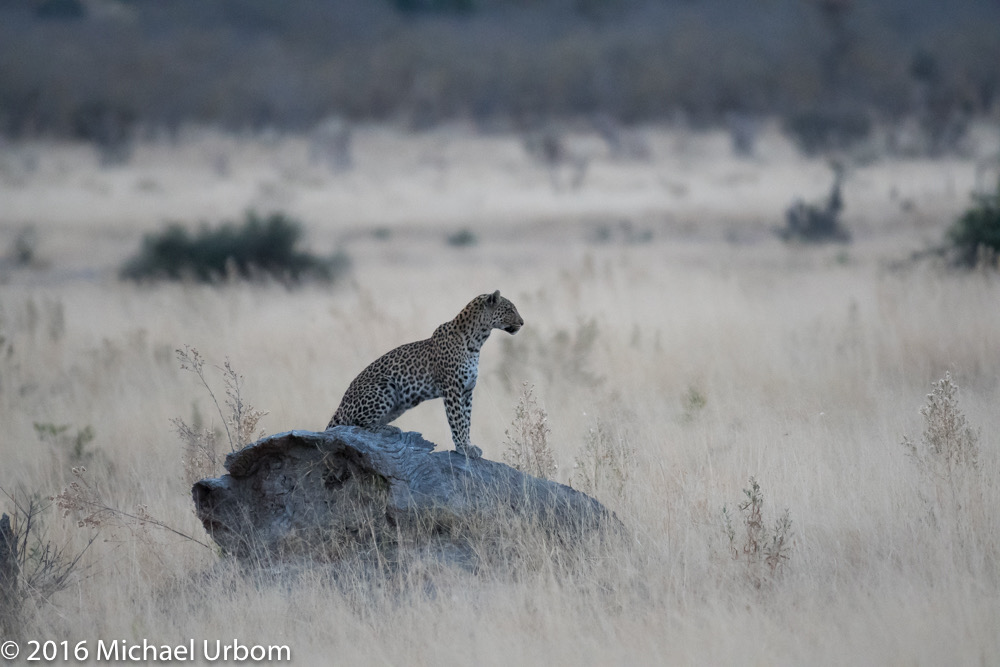
Botswana parks have opening and closing times that the tours and visitors respect. Those hours don’t always correspond to the reality of the situation, as we learned this afternoon.
The park opens for vehicles at 6am (this time of year; there is a slight shift of hours once a year). Even though we’re staying inside the park, we can’t take vehicles out of our camp site until 6am. But most of the time we don’t want to, as the light this time of year is non-existent at 6am. Indeed, at 6am I’m usually looking up at stars when I get out of my tent, and even though we tend to leave camp at 6:30, it’s still pretty darned dark out, and thus, not photographically viable.
This afternoon we hit the opposite problem. The pumping station at the far end of Marabou Pan near where the leopard was spotted is a long way from camp. Sunset occurs at about 6:10, and there’s definitely activity at the pan at sunset that we want to photograph. Unfortunately, camp is a good 30 minutes away, which means that we actually have to cut short our visit to the pan—which my vehicle didn’t get to until almost 6pm—we have to rush back to camp to get back by curfew.

The short answer is that we cheat. We dropped off the main road and drove the channel back to camp, since our camp is right on the channel. This takes us away from main areas where the wildlife department patrols, and because we’re in a depression the whole way, makes us essentially invisible. At that we only arrive five minutes late, so it’s not much of a cheat.
Still, this is a real issue for safari now in Botswana. It used to be that one of the classic things you’d do on safari is a “sundowner.” That’s where you stop someplace where you have a good sunset view and have a drink as the sunset goes down. Then you'd drive back to camp after that.
You can’t really do that most of the year because of the misalignment of the park hours and the sunrise/sunset times. That’s especially true of the really big areas that you might be traversing, such as Savute, as the distance from a key attraction to the camp area can be as much as 20km. The Botswana park service really needs to change their regulations to 30 minutes before sunrise to 30 minutes after sunset.
Of course they won’t, because that means variable times each day, and it’s far easier to tell the staff to patrol from A to B and cite anyone they find out before C and after D. Still, the one thing you really want to do in a tourism location is keep the tourists happy. The current regulations just aren’t all that safari friendly.
Don’t get me wrong. I fully support the notion that we give the animals a rest from vehicles each evening. But getting the truly memorable photos that would make people want to come to Botswana is more difficult under the current rules. Arbitrary times that don’t align with the astronomical condition aren’t the right answer.
14. Waiting for the Leopard
I’m just going to describe my day, mostly because the vehicles were all still quite scattered today, and I’m not privy to all the stories the students were seeing.
First thing in the morning my vehicle went to one of the two sources of water available to animals in Savute this year (both of them pumped in by the park service). There is no marsh this year. There is no flowing river. There is no large rain-filled pans.
When all you have are a couple of small pans with water for such a large area, what happens is each pan becomes a day full of animals sequencing their daily intake needs. Experience tells me this: the elephants will start coming as the day heats up, and once the elephants are at the water holes, they dominate them to the point where you don’t get much of anything else. Moreover, Savute has such a huge elephant population, that will continue right up through sunset.
Nothing wrong with photographing elephants at a water hole, of course, but I also know I can do that pretty much any time after about 11am, sometimes earlier.
So for me, I want to see what’s at the watering hole before the elephants take it over. This morning that was a pair of jackals.

Fortunately, these jackals were very cooperative, and spent plenty of time doing jackal-around-water things. But they were also paranoid, running back and forth to make sure no competitor was coming. Curiously, the guinea fowl paid virtually no attention to the jackals. I would have thought that jackal would see them as a nice meal, but apparently not.
By the time we were through with the Jackals’ morning water rituals, we’d heard a call of “leopard” over the radio. This particular leopard was sitting between Leopard Rock and Two Hills, so we rushed over to go grab some shots. I personally expected that as the day was heating up, the leopard would move from that area, as it’s exposed to the heat. It’s getting pretty darned warm in the middle of the day now, to the point of wearing shorts and a t-shirt.
Now the interesting thing about this leopard is that it was sitting at almost the exact center inside a circular area bounded by roads, but far enough away that we couldn’t shoot it clearly. In other words, right in the middle of lots of brush and bush:

That shot is about the best I could do (D500 and 200-500mm), and that only happened for a brief few moments when the leopard moved out into the sun. Most of the time it tucked itself back at the base of some bushes to get shade.
What you don’t see in this image is the National Geographic vehicle sitting just off to the left. There are currently two NatGeo vehicles in Savute, one shooting leopard, the other being manned by Shane’s roommate and shooting lion. (How do we get notice of where the predators are? I think you just figured it out.)
These vehicles have off-road permits. So the NatGeo leopard crew is sitting where they have a good view of the leopard, but they’re not shooting. Leopards laying down aren’t all that interesting and you don’t need a video camera to shoot that ;~). But the fact that they’re where they’re at tells me that they too expected this leopard to continue its route back to Leopard Rock.
I’m a patient guy—my mom doesn’t think so—thus we pretty much stayed with this leopard all morning. Every now and again we’d get a semi-clear shot like the one above (which is croppable to something almost usable), most of the time we just sat watching shadows at the base of a bush.
Eventually lunch beckoned, and we headed back to camp. In the afternoon, I switched vehicles—students stay in the same vehicle all day, which is how Tony and I manage to make sure everyone has at least a half day every day with one of us—but I continued my siege of the leopard.
Same result. That leopard did the same thing, just as far away from us as before. The NatGeo folk were still there, but one was reading a book, the other catching a nap.
We tried going around the circle of road to find better angles. Nada.
We sat for hours waiting for the leopard to do something. Nada.
We took pictures of shadows at the base of bushes. Nada.
But that’s the way it is sometimes. One leopard in a bush is better than two leopards who knows where. Since everyone hasn’t gotten a leopard shot yet, I have great cooperation from the students, but I would have probably tried to sit here all day because it’s the right thing to do. If someone wants a photograph of any bird, prey, elephant, hippo, et.al., I can pretty much guarantee that we can get that for you tomorrow. We might not find this leopard again if it decides to run out to the edge of its territory tonight.
So we sit.
And we talk.
And we twiddle our thumbs.
Actually, it’s not that bad. Down time like this is a good time to talk about camera settings and technique, and so we do some of that, too.
But aw, shucks, the sun has gone down and this leopard is still not moving. And we have to move to get back to camp. We keep hoping that the now much cooler early evening temps will get this cat back up and hunting, but she’ll have nothing to do with that.
So we head back to camp. We get maybe a quarter mile down the road and…
Bam, leopard.
Not the same leopard we had been sitting watching doing nothing, but a young male moving out of an inaccessible area over to Leopard Rock (getting an idea why it’s called that?).


That’s the way it is sometimes. You get skunked out on what you were trying to do and then Africa throws you a bone.
I should point out that there’s no light whatsoever to take these images. Note the forward paw on the bottom image: I’m at f/2.8 (70-200mm), 1/125 and ISO 6400. I’ve pushed the D7200 about as far as I really want to go.
Almost immediately the leopard darts across the road, runs up and over a rock, and completely disappears. So four or five hours of sitting was rewarded with maybe 15 seconds of leopard action, and not even the same leopard.
Meanwhile, looking over the other photos I have available to me tonight—for some reason I have very few images submitted for this day, even from the vehicles that weren’t leopard sitting—I see that Tony was still mostly in bird mode:

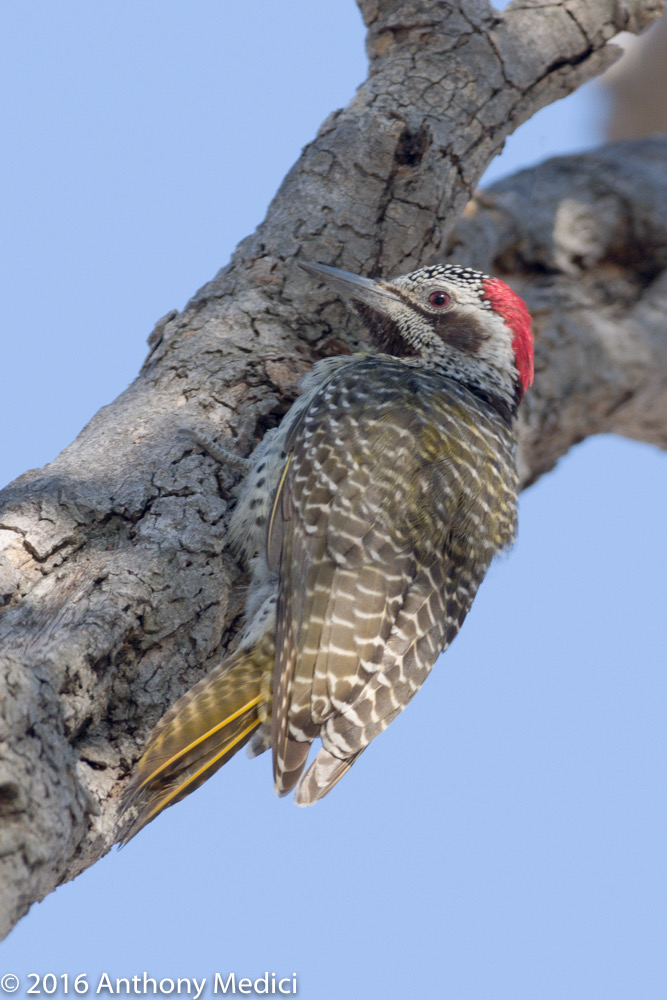

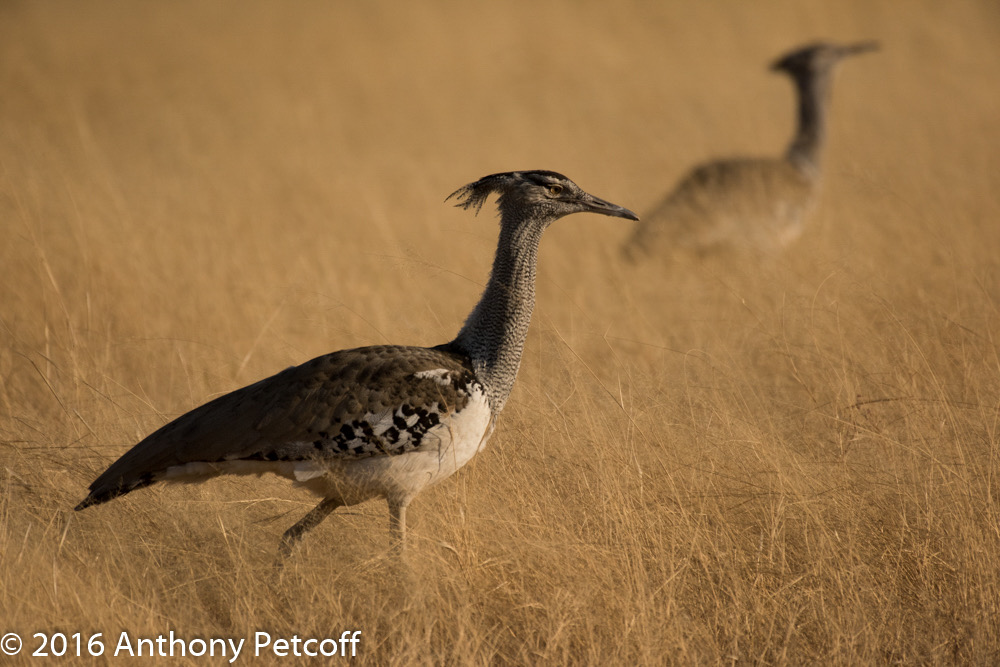
But he and others did manage to get a few things other than birds:
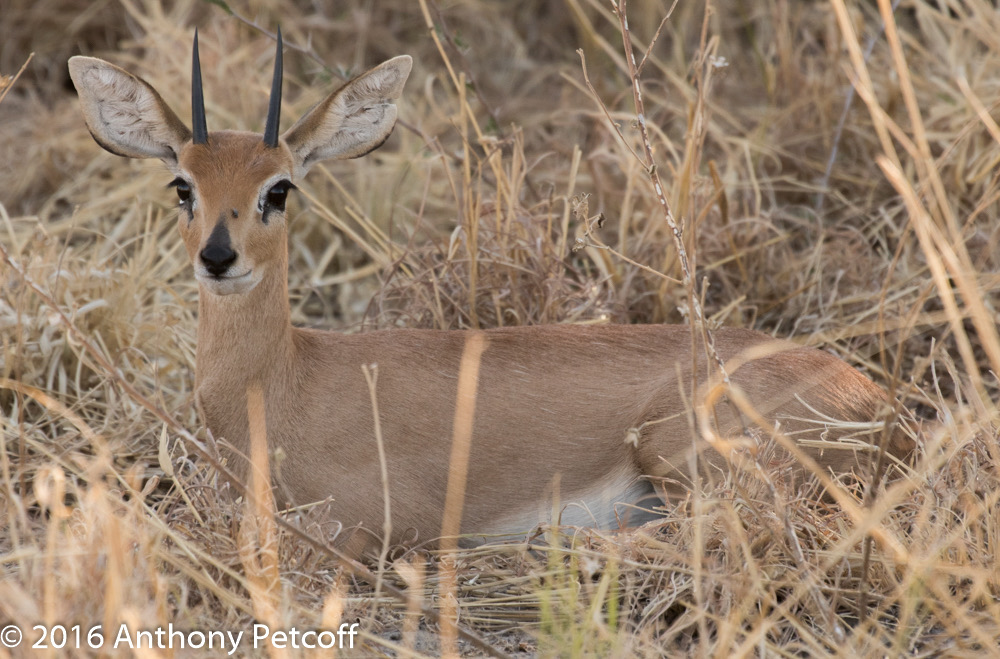


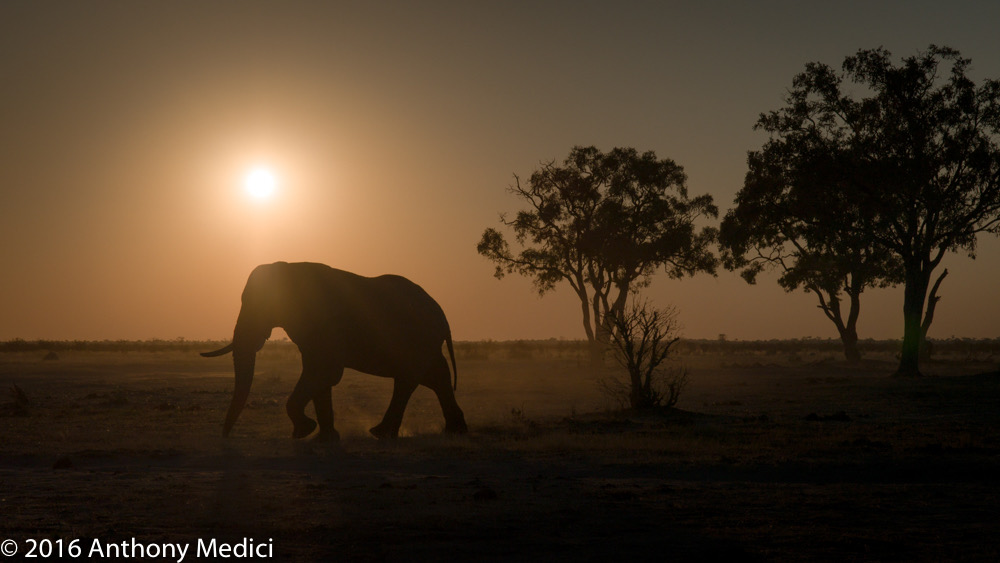
Since my tracks aren’t very interesting, here’s Tony’s tracks for the day (over 25 miles worth):

15. Hyena Only
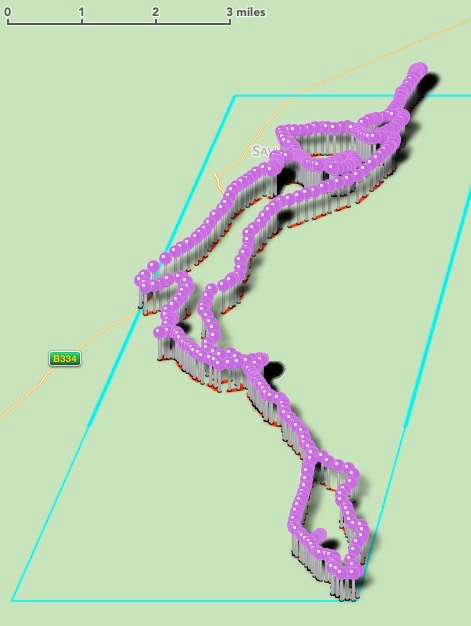
Again this morning I sent my vehicle over first thing to the pan to see what comes in before the elephants. And again I was rewarded, this time with a hyena.

One interesting thing is that the guinea fowl that were so comfortable being shoulder to shoulder with the jackal yesterday morning all immediately ran from the pan the minute the hyena showed up. Apparently hyena eat guineas for breakfast and jackal’s don’t. Eventually we got other animals at the pan, as well.
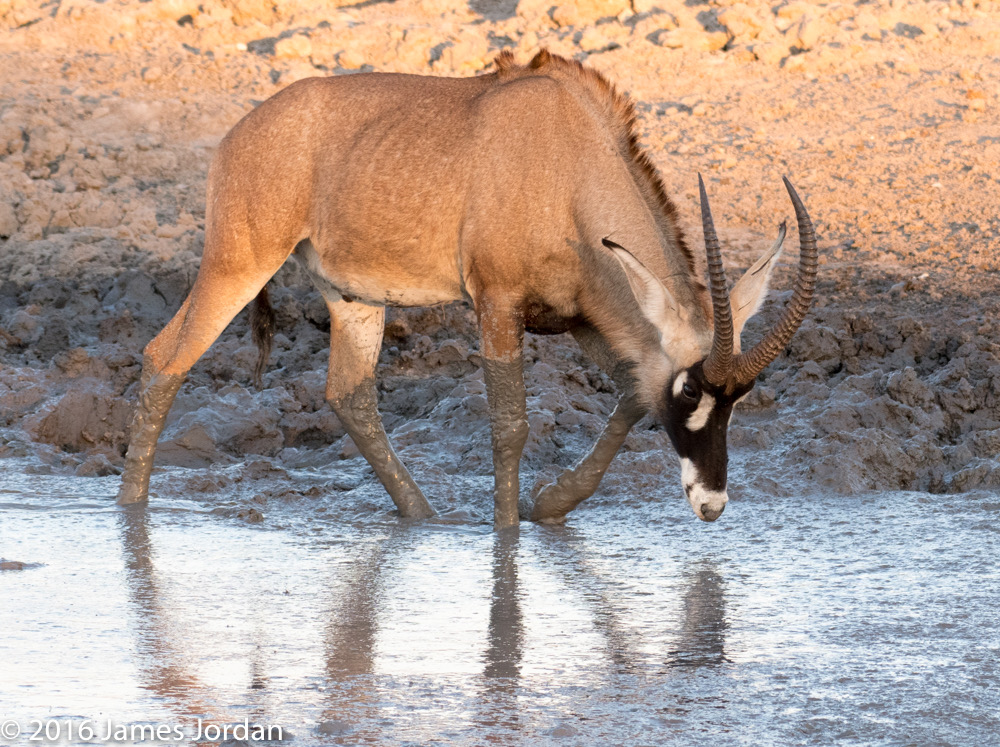
Just around the bend from the pumped pan is an older, natural pan that filled with water during the rainy season and has now just become a giant mud-hole. Sitting in the middle of that is The Last Hippo in Savute. Literally.

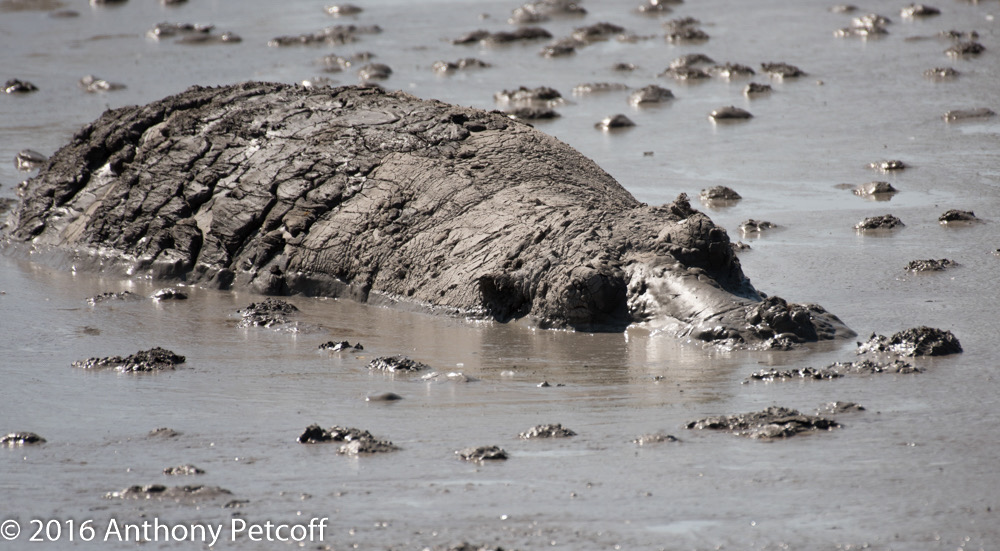
All those little blobs in the mud around the hippo? Elephant poop. The elephants like this spot to come and do their cooling off thing. But you don’t want an elephant for a roommate: they’re slobs when it comes to cleanliness. They literally poop in their own kitchen.

The two pumped pan spots are just a bit of shallow water in a small spot. Not big enough for a hippo to even get their ankles wet, really. As the Savute Channel stopped flowing and dried up, most of the hippos probably followed that receding water backwards up to its source. Thus, most former Savute hippos are probably all sitting up near Linyati, where the Channel really starts and where there is still water.
But this hippo apparently overslept the migration or didn’t get the memo. Instead, he’s just sitting in the remnants of a water source and now spends his day caked with mud sleeping. Unless it rains unusually soon, he’s likely to not survive to next season and the next chance for the Channel to resurrect the Savute water sources.
A lot of driving around in the morning netted us some info on where things are, but not much in the way of additional interesting sightings. I did manage to catch a bird harassing an eagle sitting near its nest, though:

After lunch, however, it was off to the races, as lion and leopard—within sight of each other, which is rare—suddenly came out of the deep shade to where we could access them. I choose the leopard.
This is where things got a bit interesting. All four of our vehicles, as well as another couple of vehicles and the National Geographic crews were out here either at the leopard or the lions. This is where I ask myself, “what does the animal want to do?” If I think I know that answer, I position my vehicle for that, not for where the animal is.
The other three vehicles might not have understood what I was doing, but this is what you get when you’re right about figuring out what the animal is trying to do:


These are both 70-200mm. There was nothing to shoot for several minutes after we’d positioned the vehicle in both cases, but sure enough the leopard was on the path that I was predicting.
So what was the leopard wanting to do? Well, consider this:

I knew from our conversations at dinner last night with the NatGeo folk—we invited them to dinner, which they’ll never decline, as they’re pretty much out here on their own and they know we have a full time cook that’s excellent—that the female leopard had been injured a couple of weeks ago and was just now getting fully mobile again. She’s hungry. Very hungry.
That vulture shot was taken as I once again positioned my vehicle far away from where the leopard was. The vulture was picking at some left-over scraps on an earlier kill, and I was guessing that the leopard would go over there. I knew my thinking was good when I saw the NatGeo leopard vehicle start the same direction to reposition itself. Indeed, they got on the other side of the leftover kill so that the leopard would be coming into the kill in front of them.
We couldn’t go out into that same area, but it was close enough to the road that I could get something similar. Slowly the leopard came crossing through the brush towards the kill.


And she got worn out and hot doing it. And it was clear she was still limping, so this was a lot of painful exertion for her. So she ducked into the brush for shade to the side of our vehicle and settled down to rest. Much to the chagrin of the NatGeo folk and I, she stayed their right until lights out.
On our way back in, though, we caught a couple of other quick portraits in the waning light:



Meanwhile, Tony seemed to be shooting birds again based on the images he gave me:

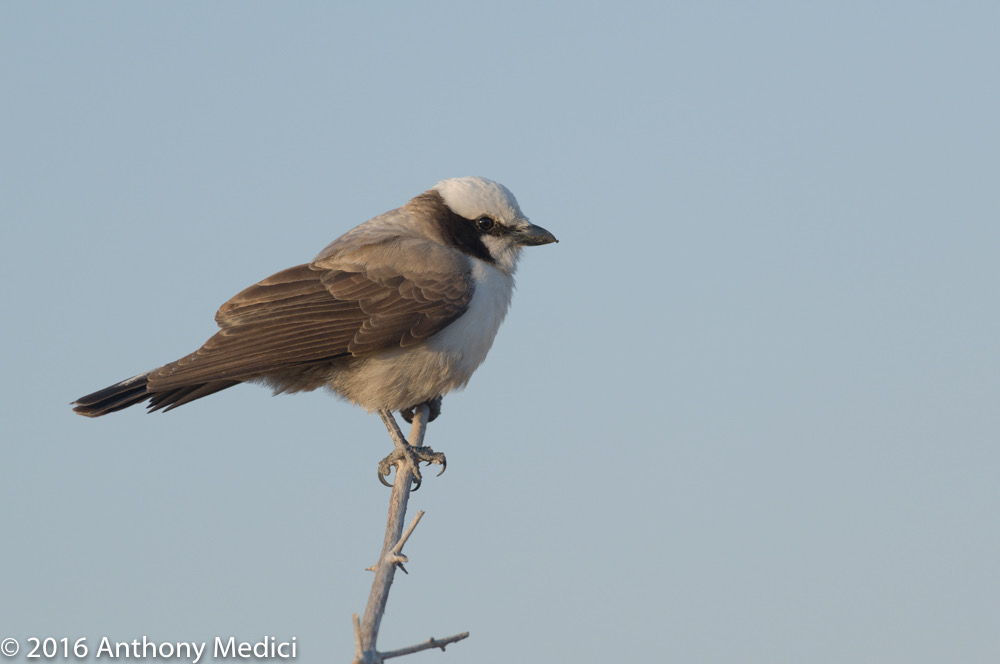
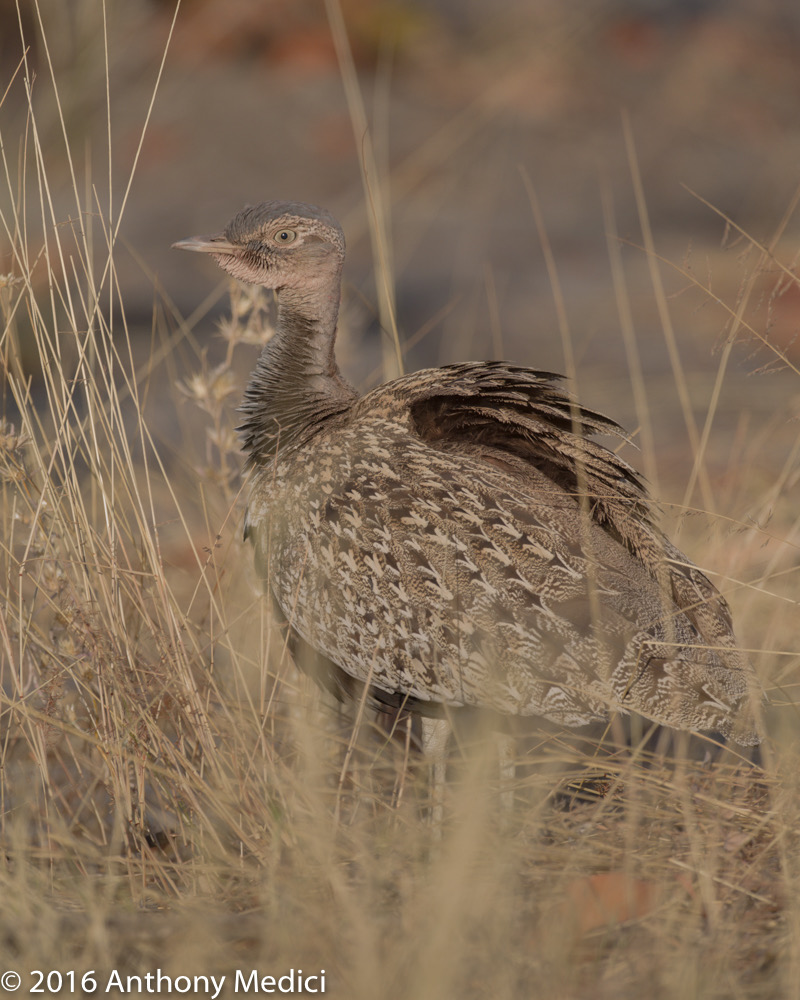
I should point out that what you see on this blog is not necessarily the best photos from any given day. Many of the student images you see are ones pulled from image review sessions. All of the students pretty much have full time jobs and only a few have managed to get me some additional images to look at, and some of those aren’t even processed yet. Even Tony has only done a first preliminary pass at getting his images ready for consumption.
Meanwhile, I tend to be very selective in showing my own images, as what usually happens is that I find the best ones posted by others all over the Web. So while I’m trying to give you a flavor of what happens on this trips, I’m sure that better images were taken than those you see here. So if you like what you’re seeing, just remember that you’re only seeing the quick edit from a subset of images.
16. Moving to Khwai
It’s another move day. This time we’re headed from one of the driest National Parks to a private concession area in very wet Khwai, where things are more lax in terms of vehicle placement and timing. You may remember Khwai from Tony and I’s pre-workshop warmup. Lots was happening in the area then, but we barely nibbled at that photographically, so we’re both eager to get back. We have a long journey ahead of ourselves first, though.
I’ve mentioned the NatGeo film crews. Here’s one of them with their vehicle this morning as we traded scouting information. When they’re shooting, there will be a RED with a long Canon telephoto lens sitting on that massive mount just in front of the driver:
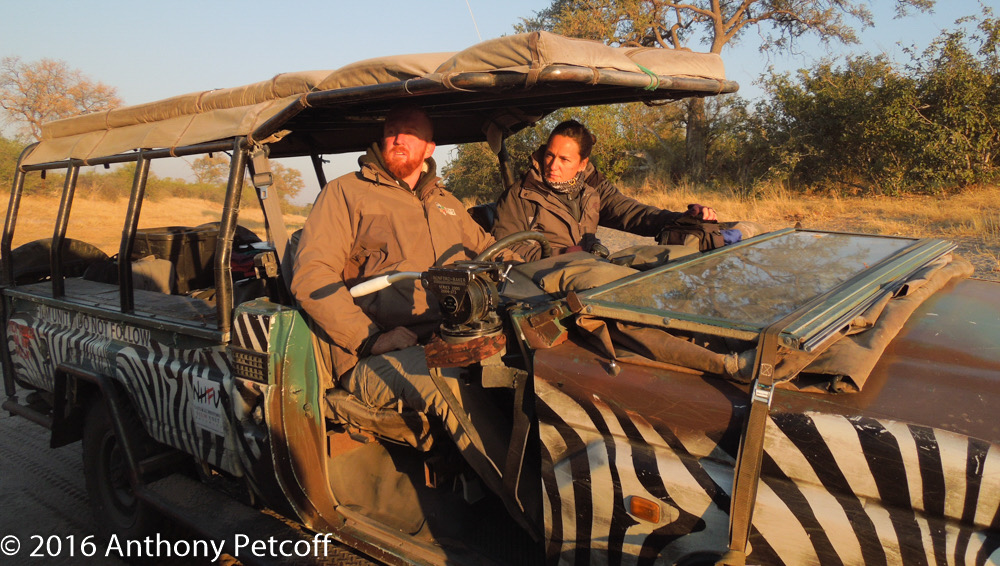
Upon breaking camp in Savute, we always make a stop at the bushman paintings. I can’t believe we drove past the signs for several days that said “Bushman Paintings This Way” and no one asked about them that I know of. But today we’ll take the time to climb up the rock (nice technique Tony ;~), have Shane give us a history of them and their significance, and take some time to photograph them close up.
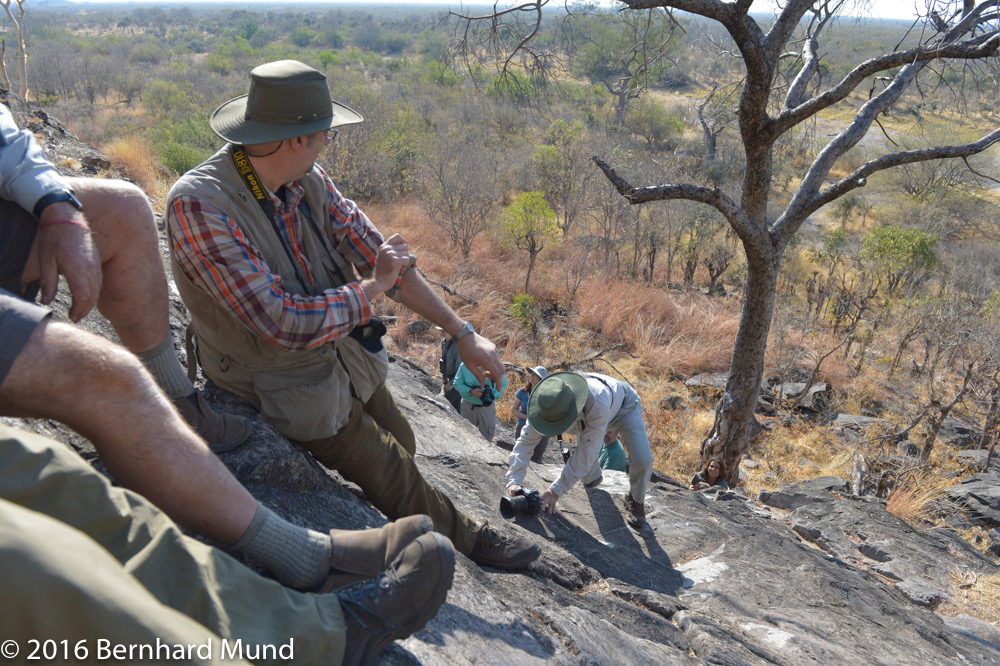



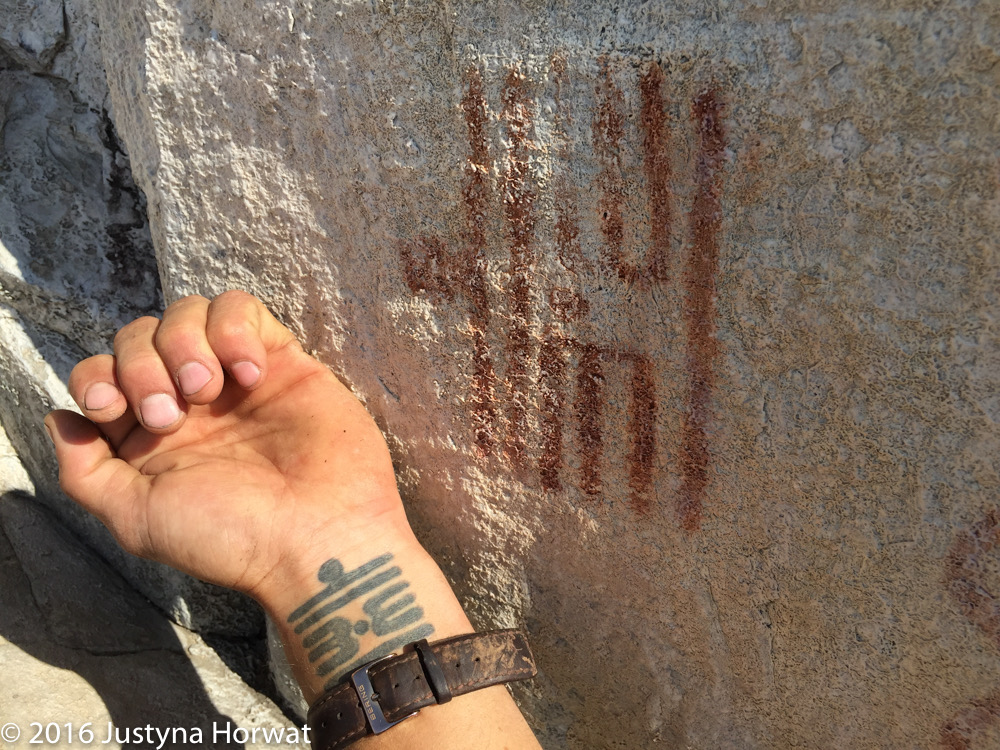
One of our guides, Alistair, grew up in Savuti and has one of the paintings as a tattoo.
This bushman exercise is all an elaborate disguise to do one thing: let the crew break down camp, get it packed on the big Man, and then get on the road ahead of us. In other words, we’re stalling, but at least with something of interest ;~).
We also take the time to make one last contact with one of our local leopards and lying lions, but once the camp truck is on the road ahead of us, it’s time for us to move, too, as we have a lot of distance to cover.
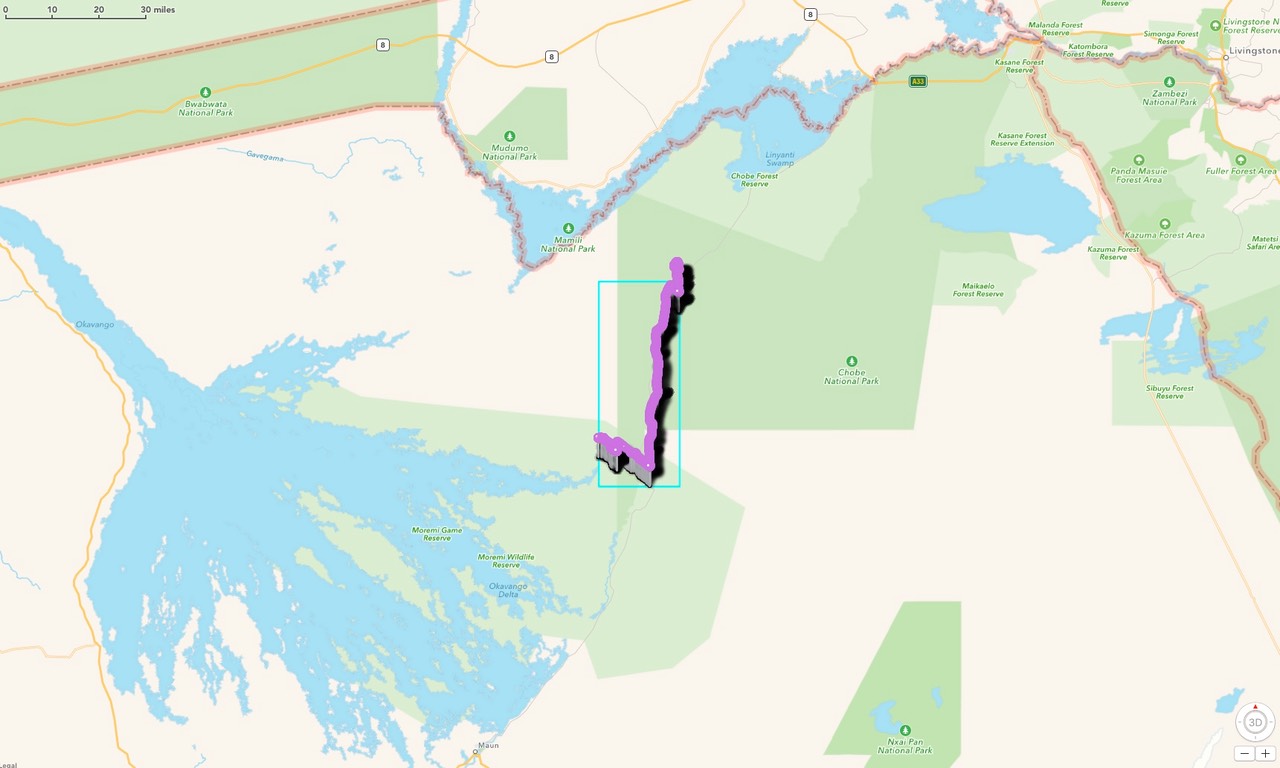
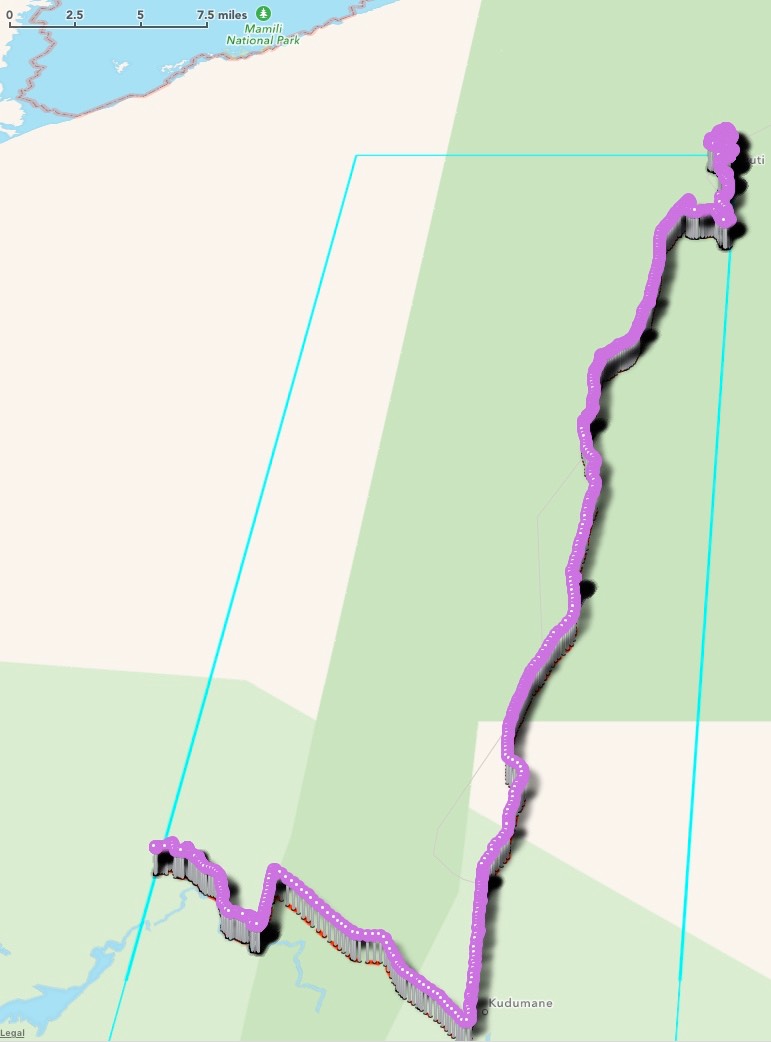
We’re not in a hurry, though, so along the way we’re taking the time to photograph what we see.


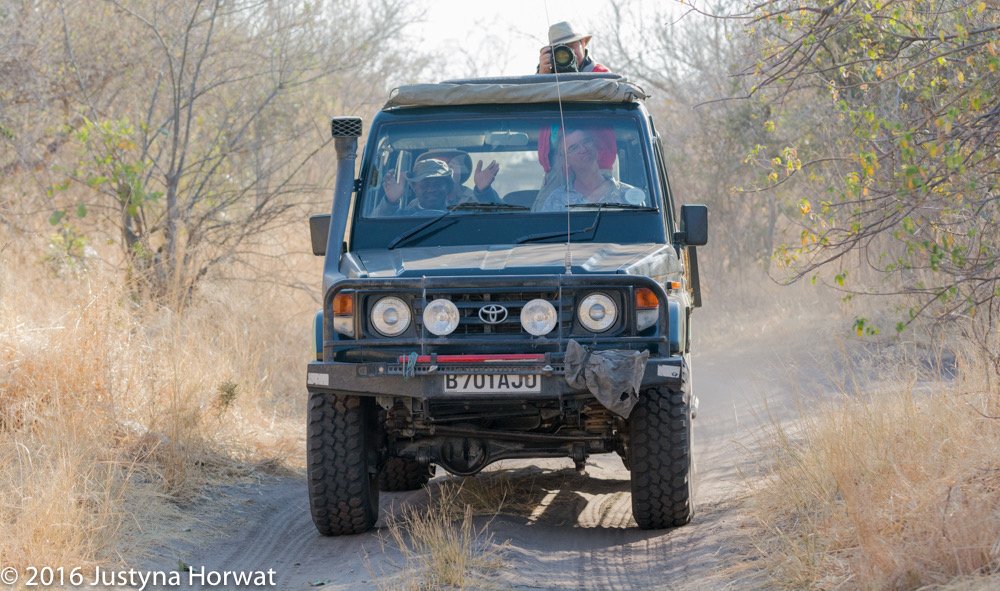
And, as usual, we have a picnic lunch along the way, where we can get out of the vehicles and stretch our legs.
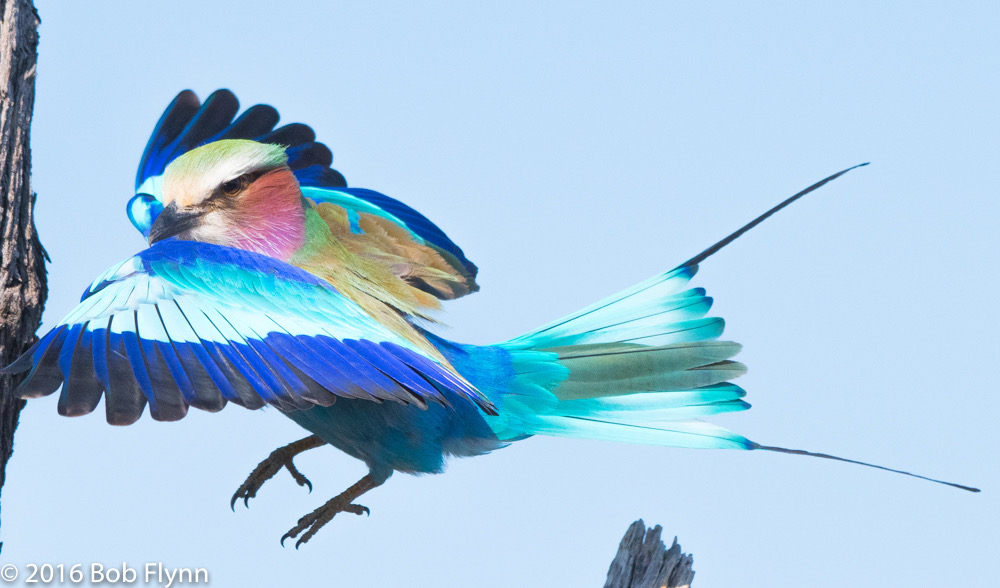
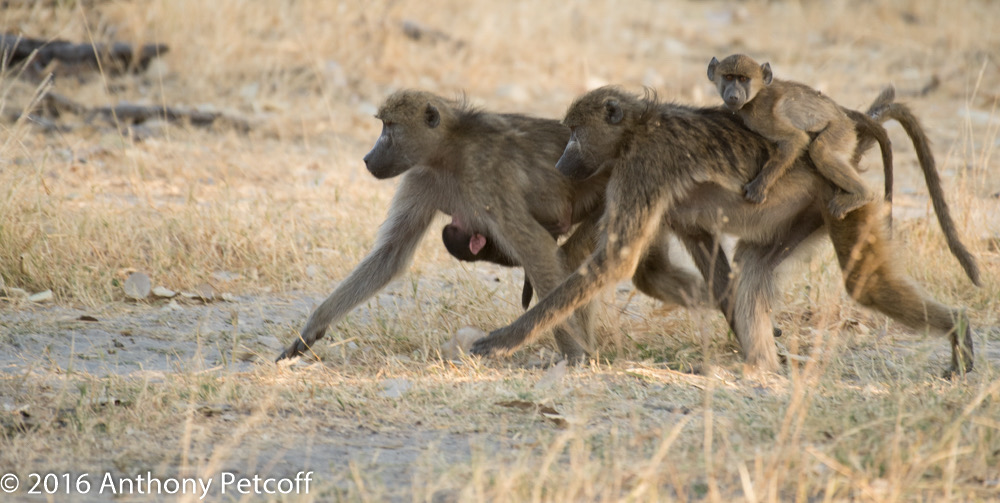
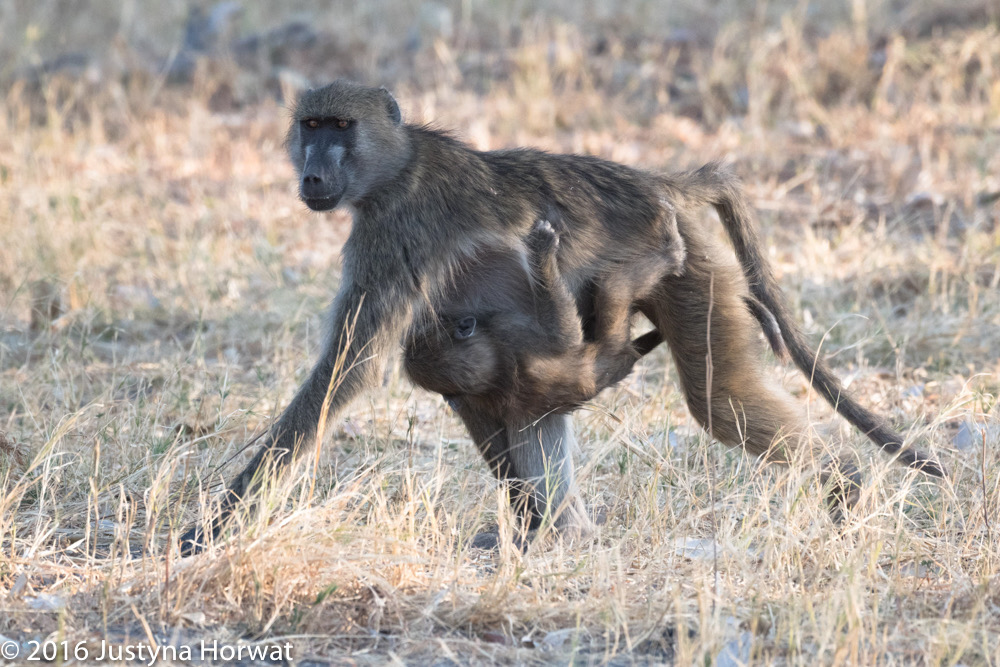
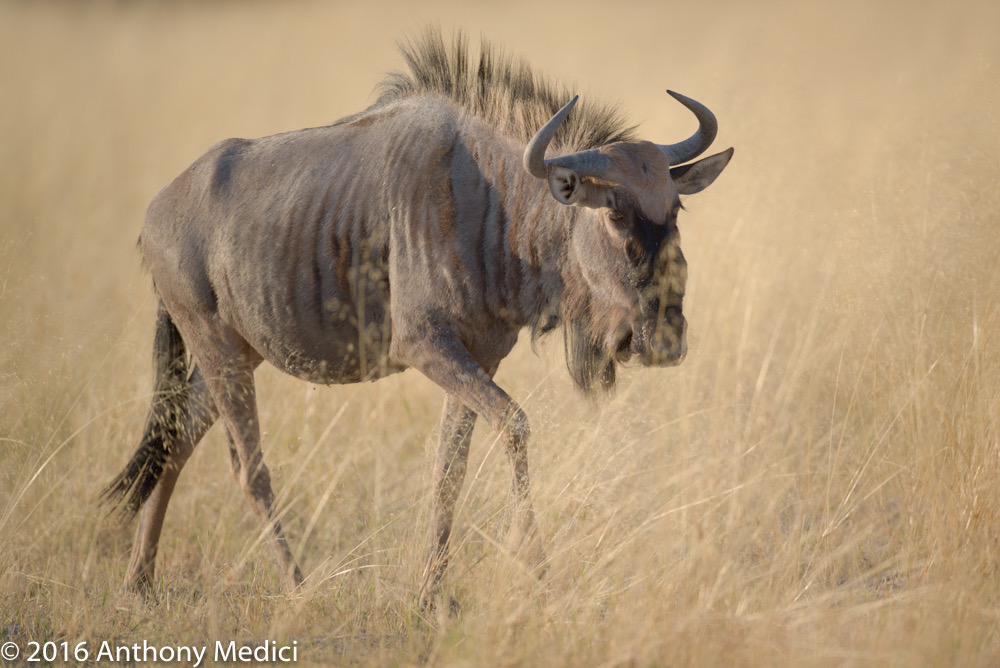
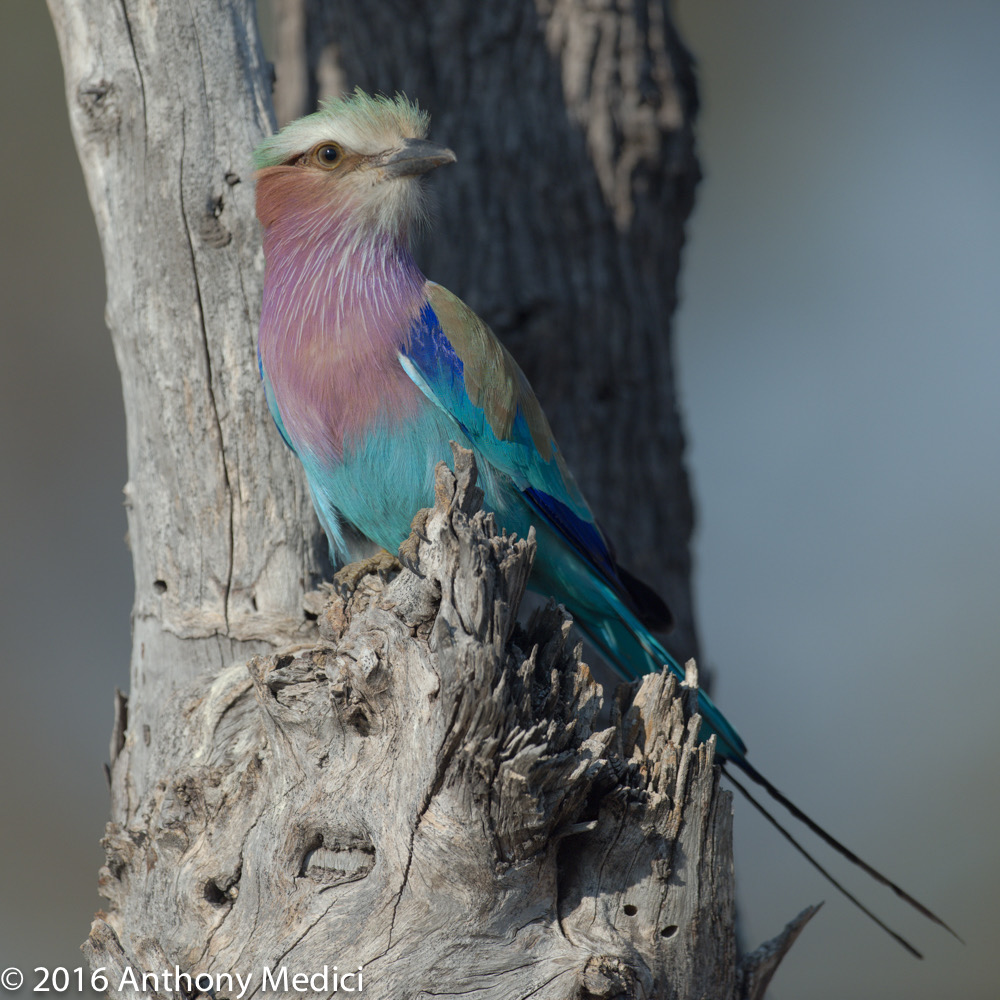
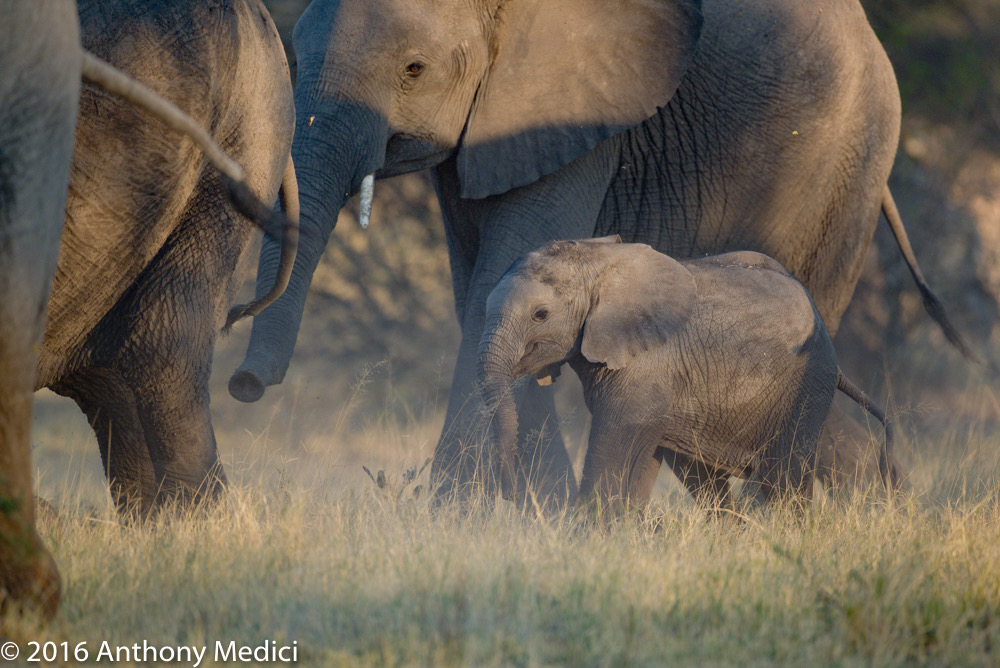
As we neared Khwai, the camp crew in the Man noted over the radio that there was a leopard very close to where we were camped. Indeed, we’d probably have to drive by it to get to the camp. So that’s where most of the gang ended up.
But first, my vehicle had a slight detour. Adam was flying in additional supplies to the Khwai airstrip, so we took two vehicles over there to meet him and get the items. Normally, the camp crew would do that, but they’re busy setting up our new camp.

Somewhere in the offloading of supplies, the big Man shows up anyway, so we just load everything onto it. But now Shane has an idea: we can get a photo of the Capricorn Safari plane, the Man, and two Land Cruisers together. Not just any old photo mind, you, but a buzz by. Here’s the start of Adam’s first approach:
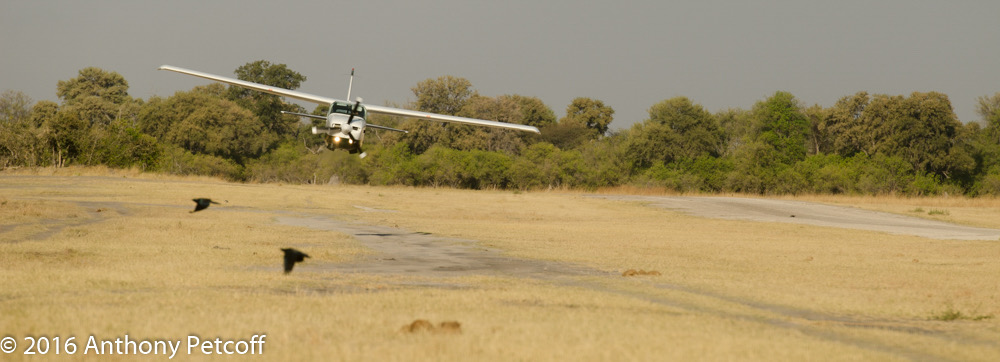
And here’s my shot:

Okay, that doesn’t do it justice. Fortunately, we had an Apple employee along with their iPhone, so here’s the slow-mo video of the pass:
This browser cannot play the embedded video file.
After finishing up that posed shot, we head over to the leopard. Only thing is, it was two leopards (mom and older male cub) with a kill, and they were definitely in posing mode in the late afternoon light as we got there.
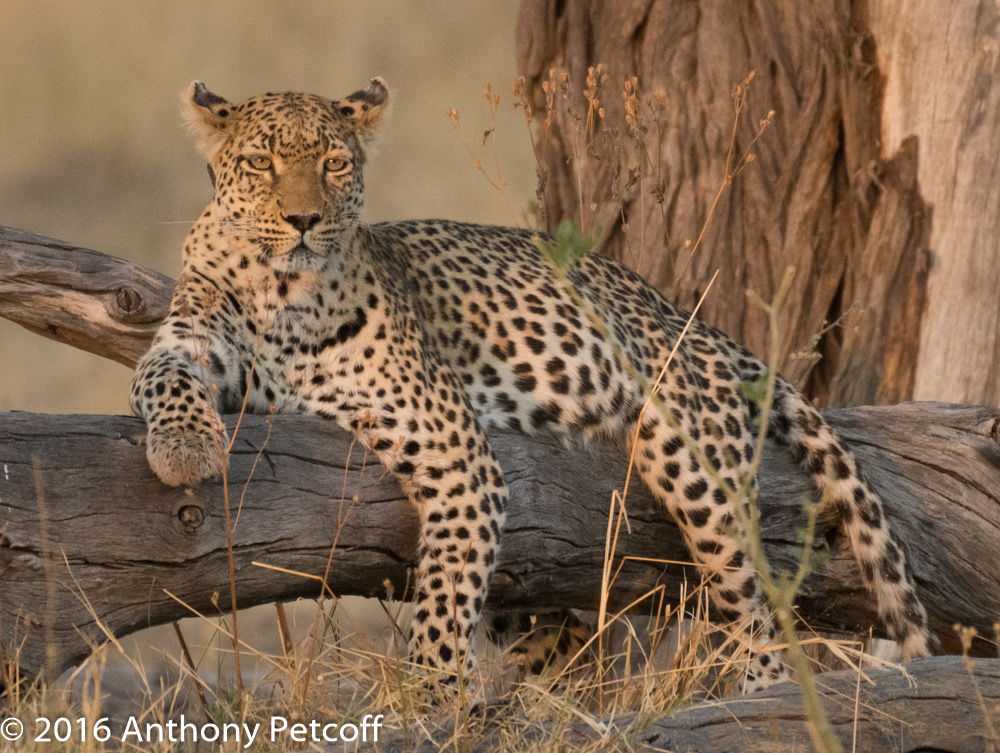
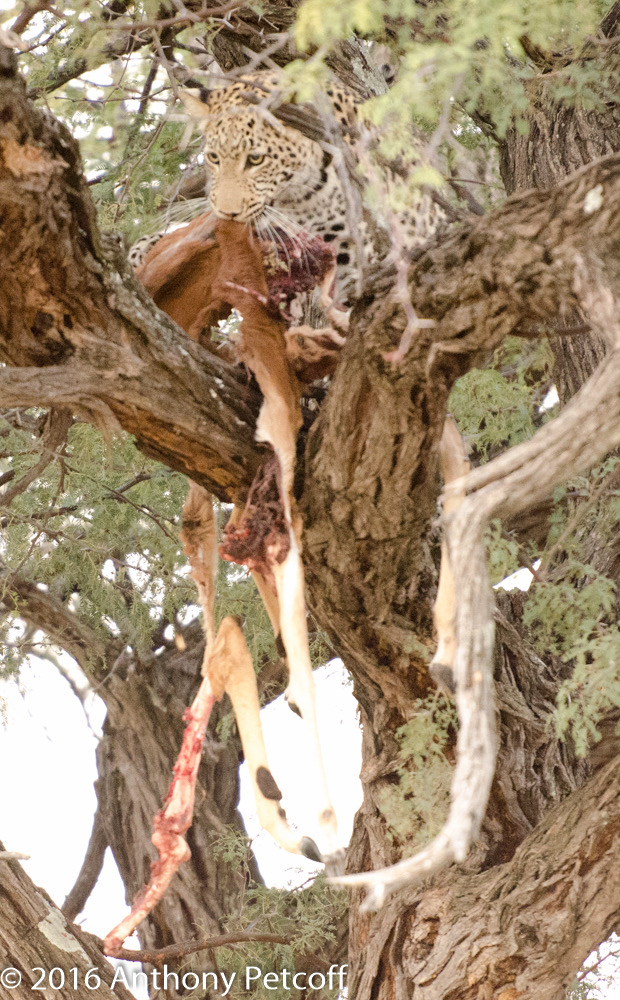
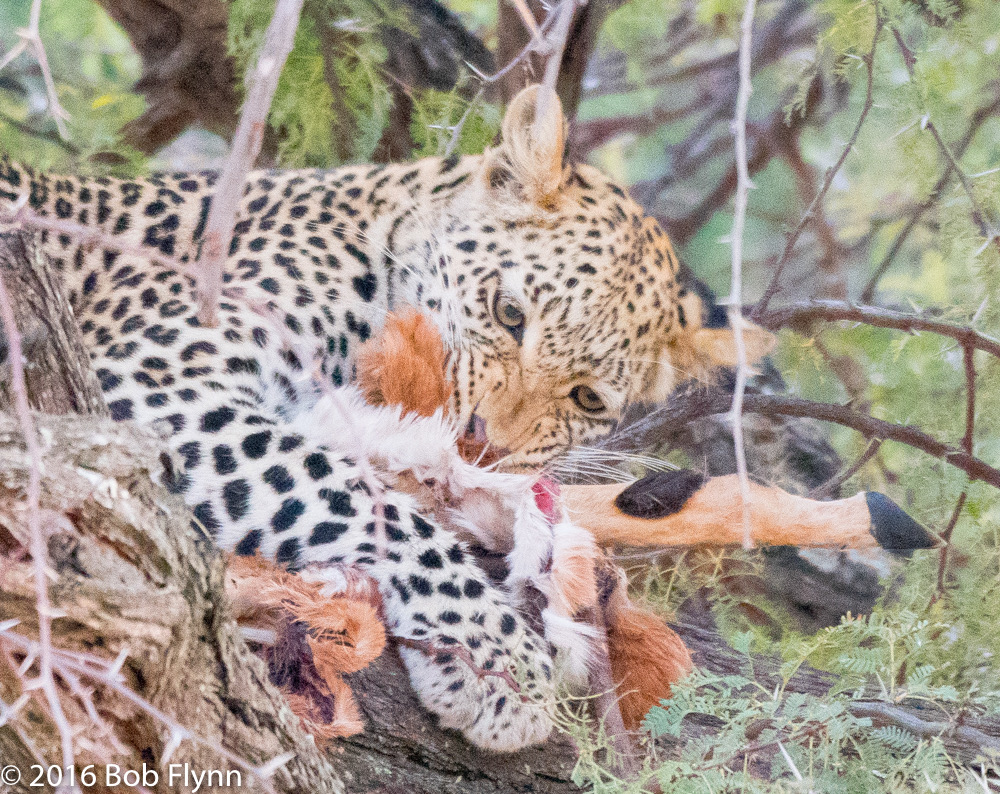
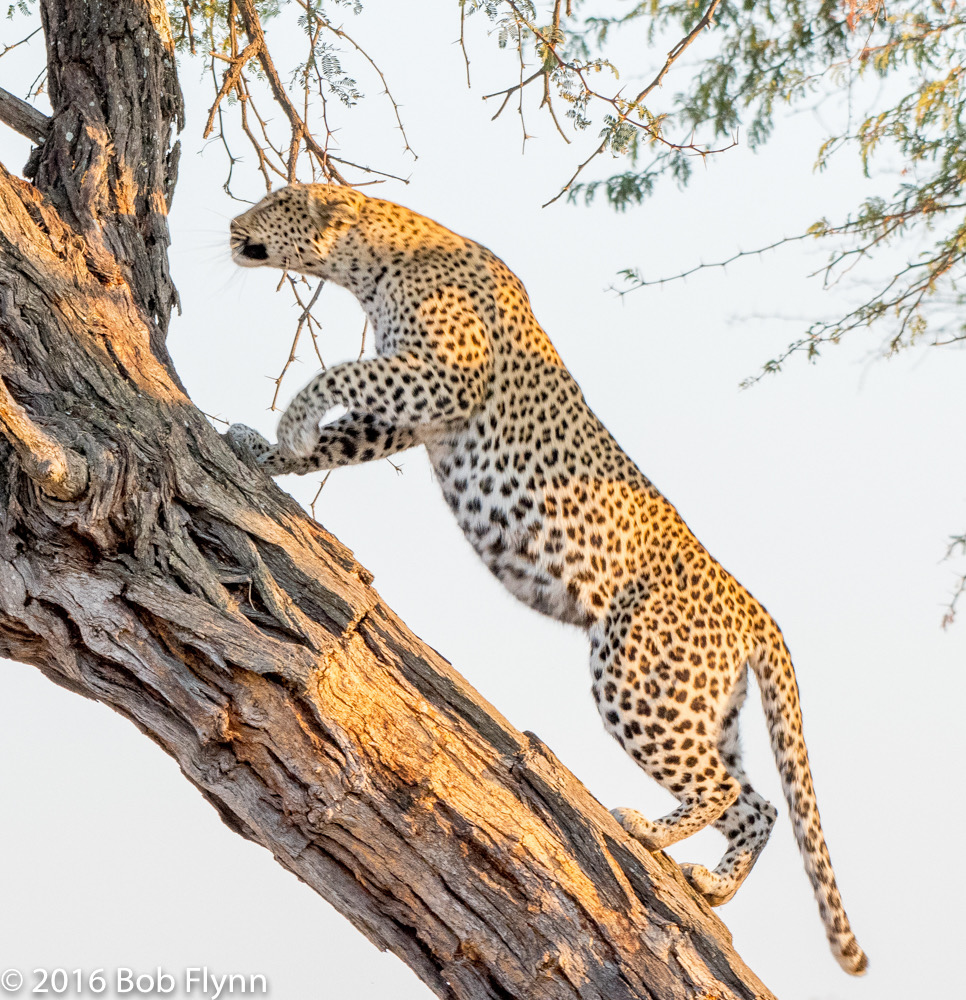
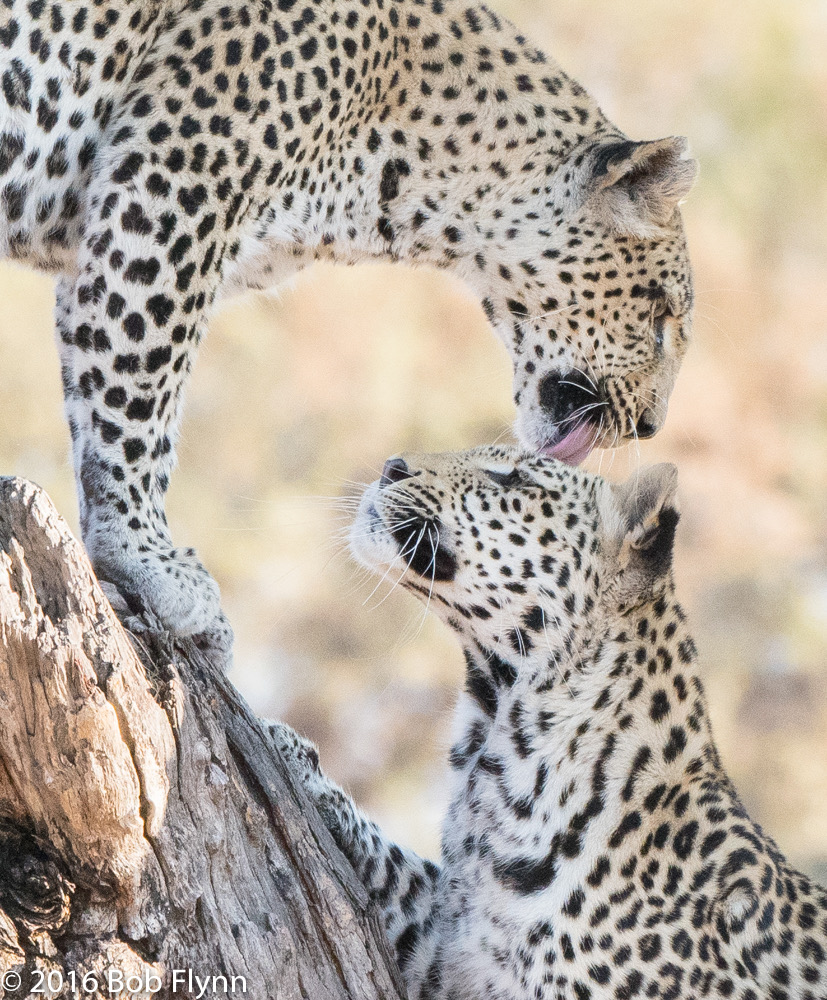

As you might guess, with two leopards so close to a key road, a lot of vehicles started coming over. And it was getting really dark, as in Oh Dark ISO 12800. So eventually we gave up on the leopards and headed to our camp, now conveniently relocated just around the corner. Those leopards will still be there tomorrow, given that there’s a kill in the tree they’re still eating.
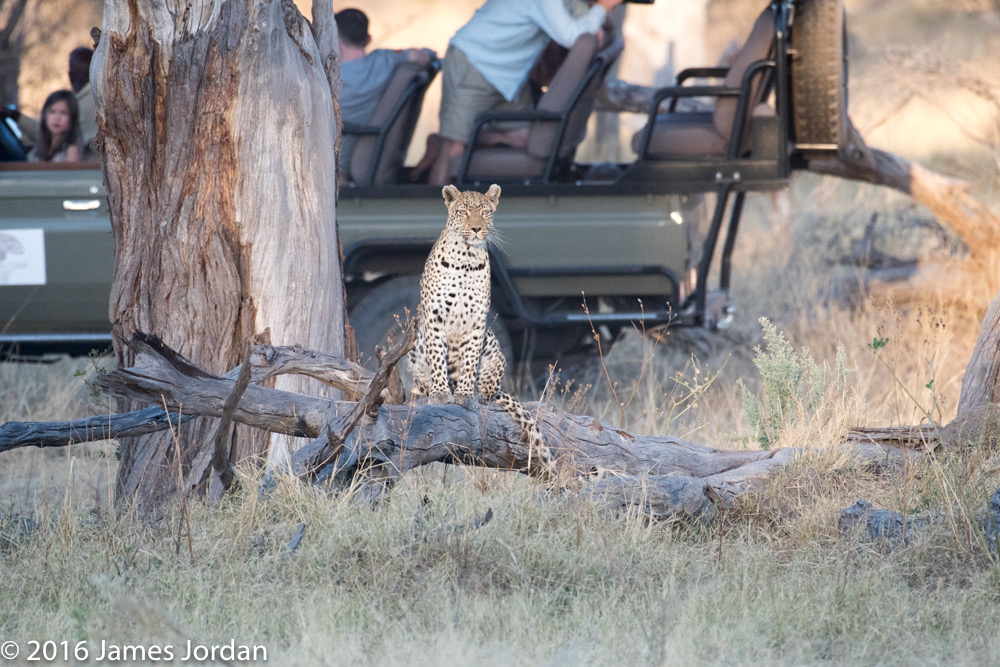


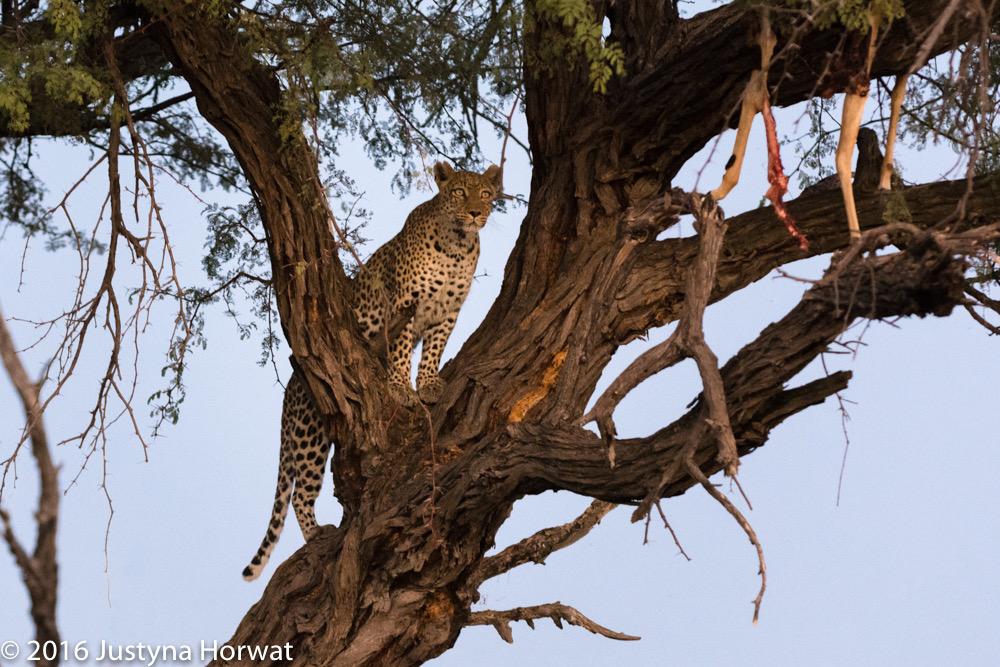

That last shot is the view from the tent, by the way.
17. Khwai Provides
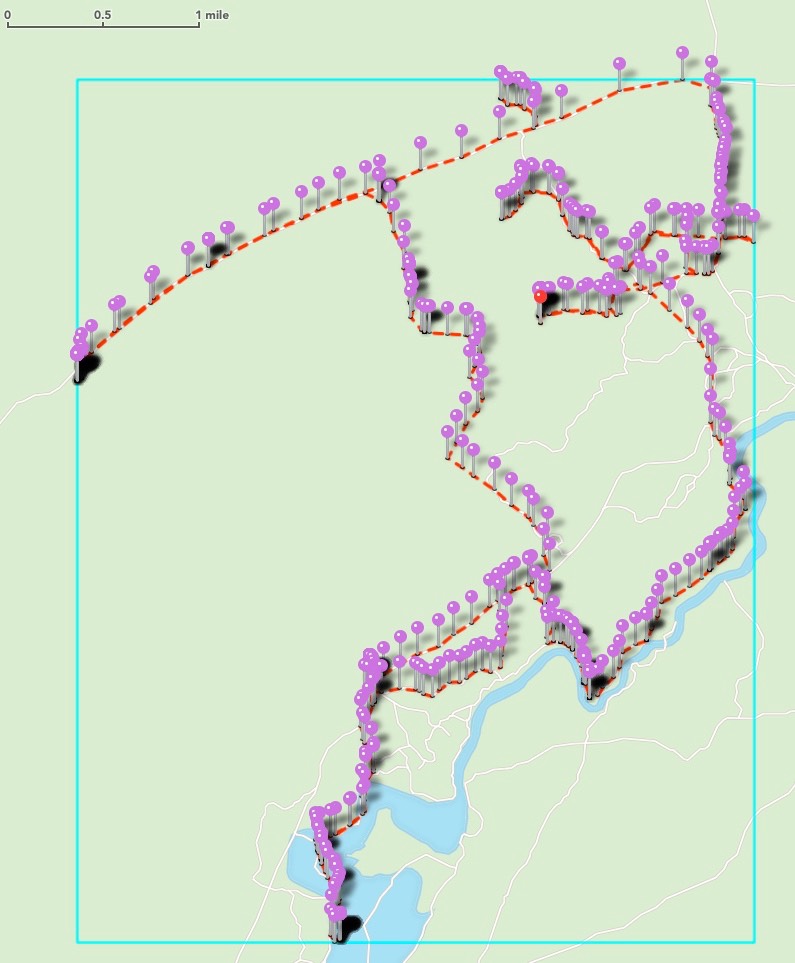
If you’ve been following along, you know that Khwai has a wild dog pack with pups, two leopards with a kill, and much more. So for most of today I’m just going to let some student photos tell the story.

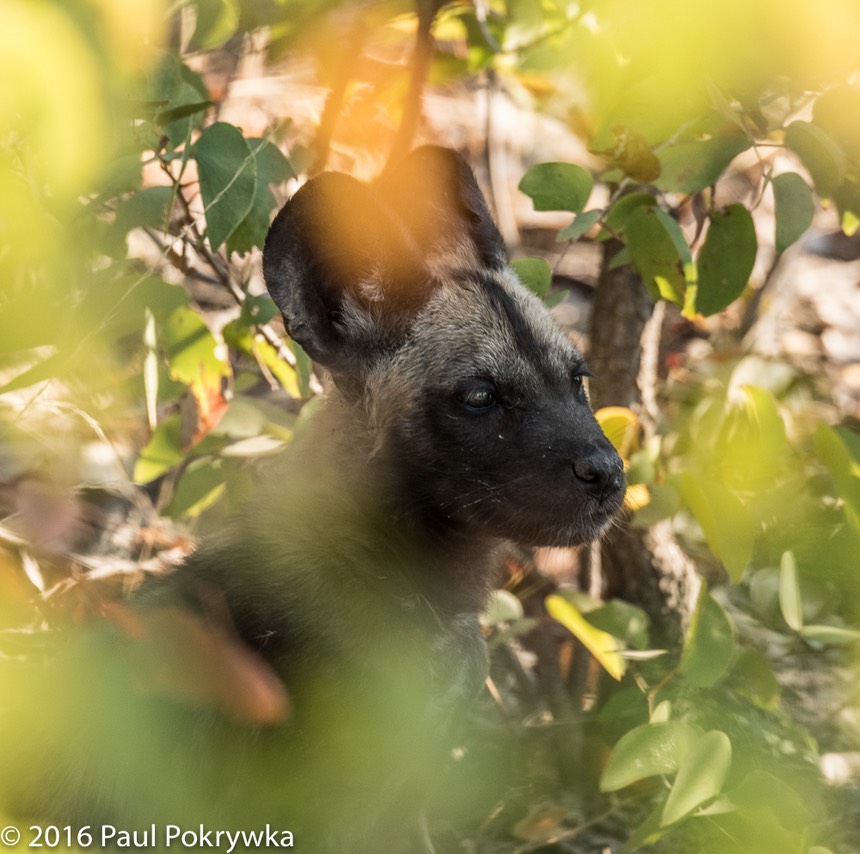
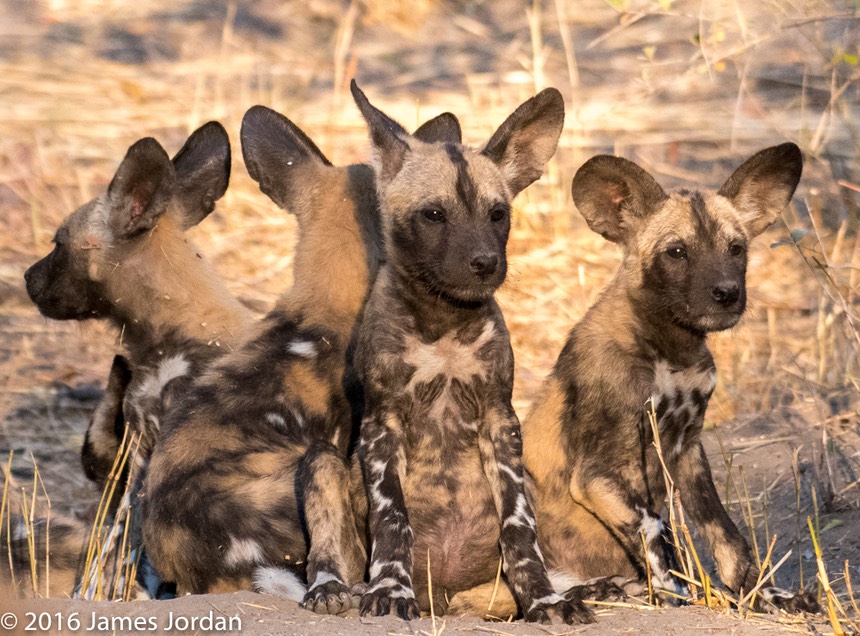
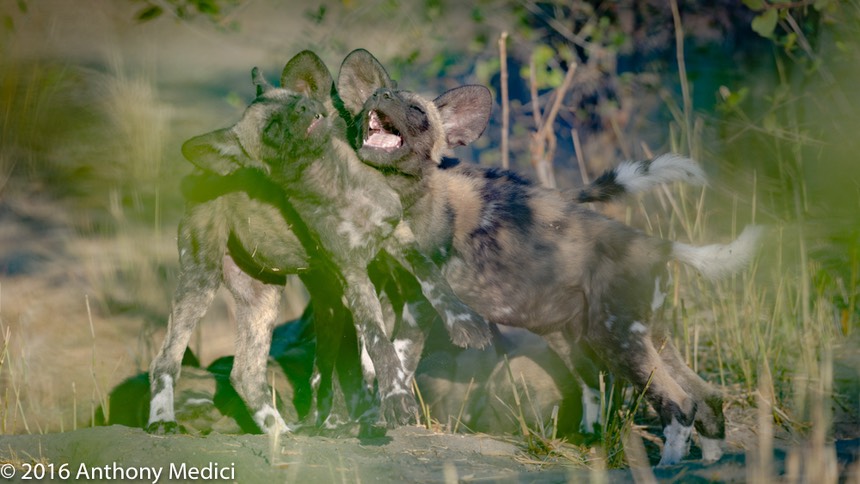


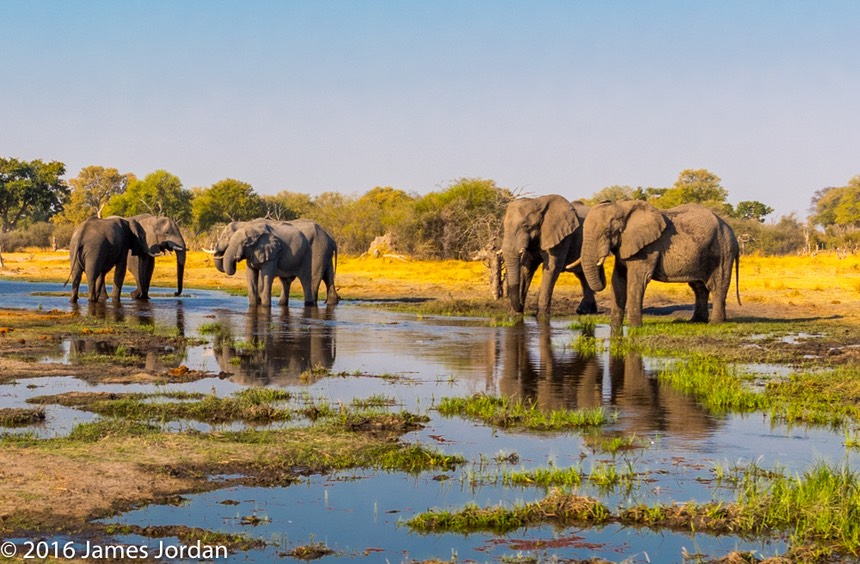
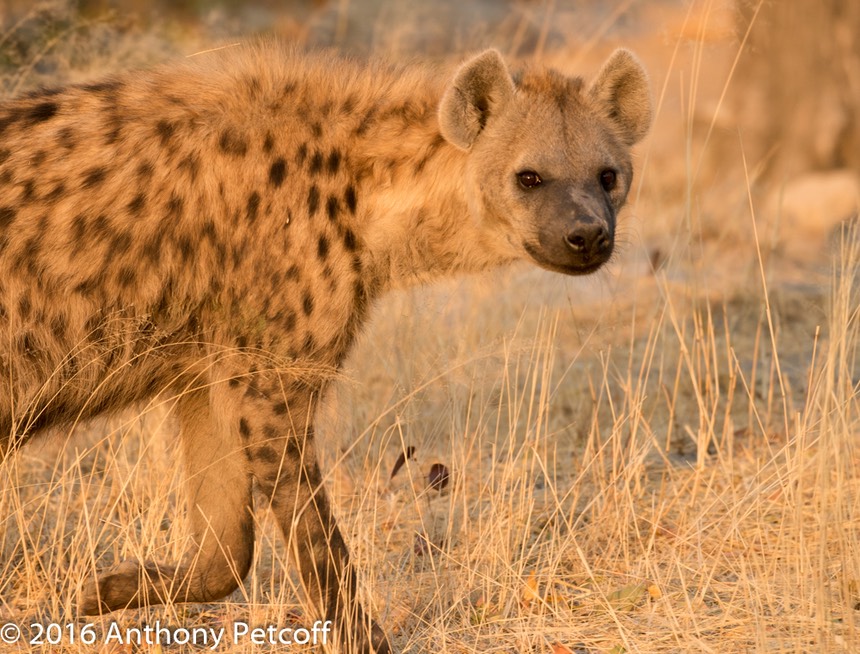
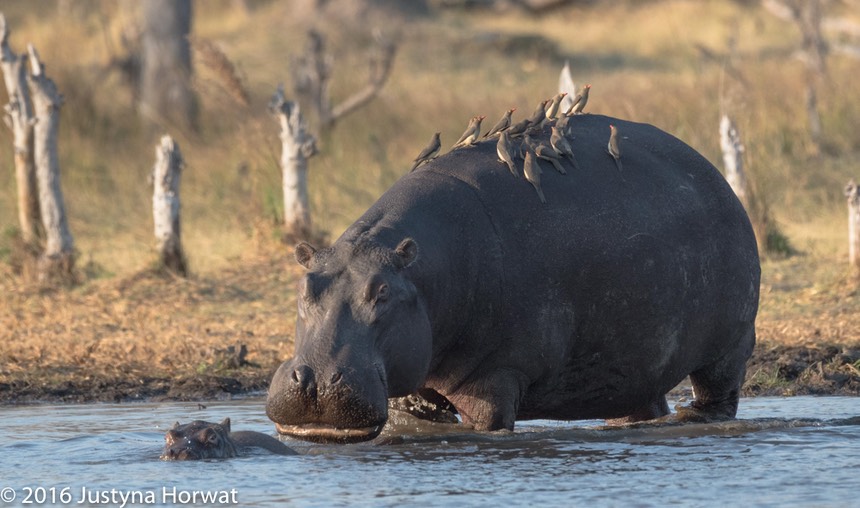
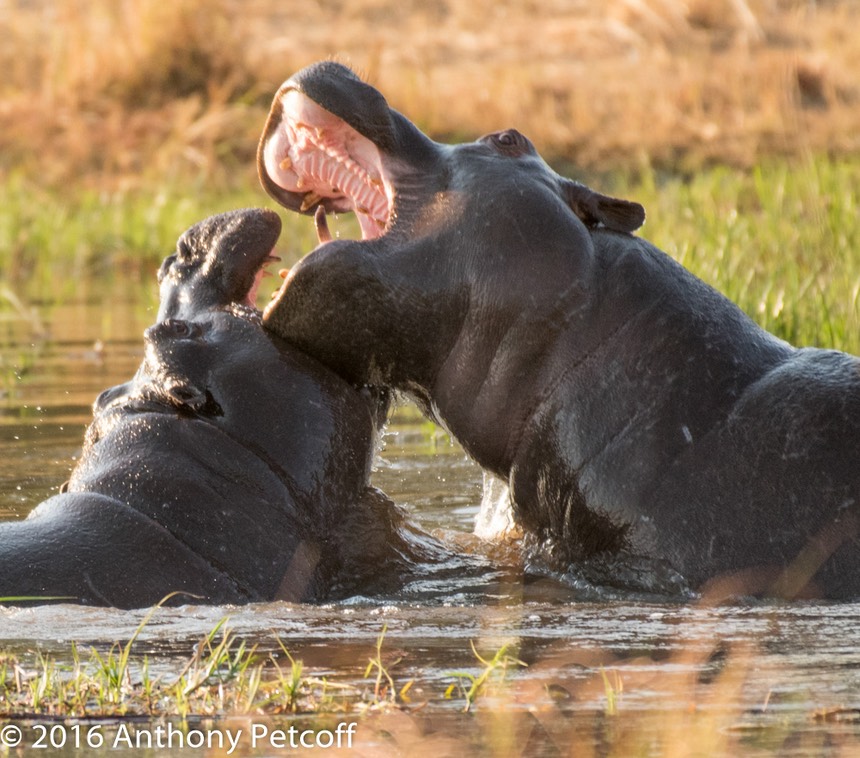


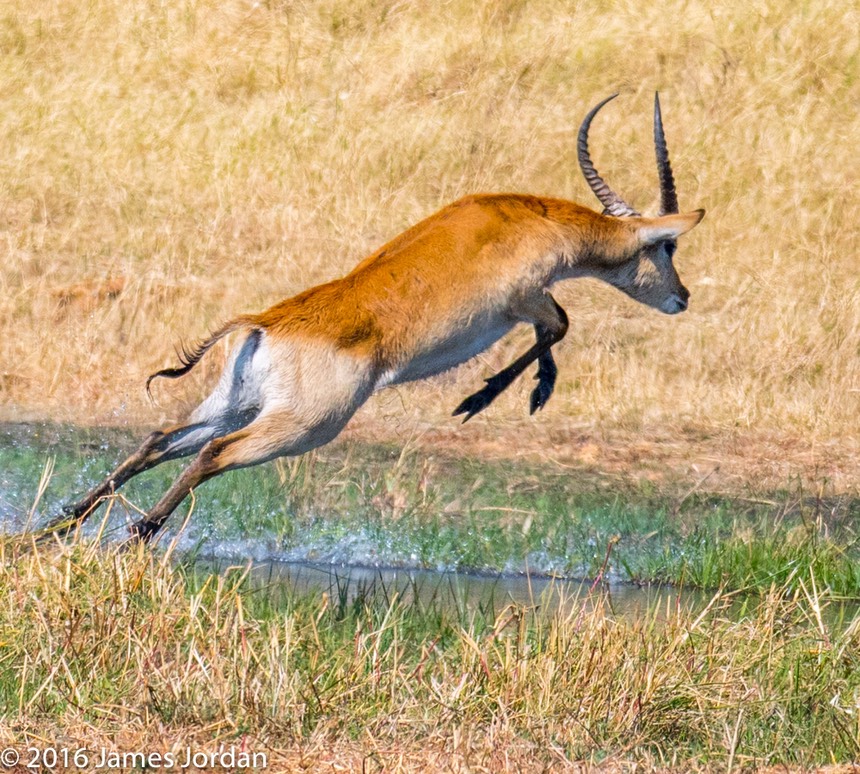

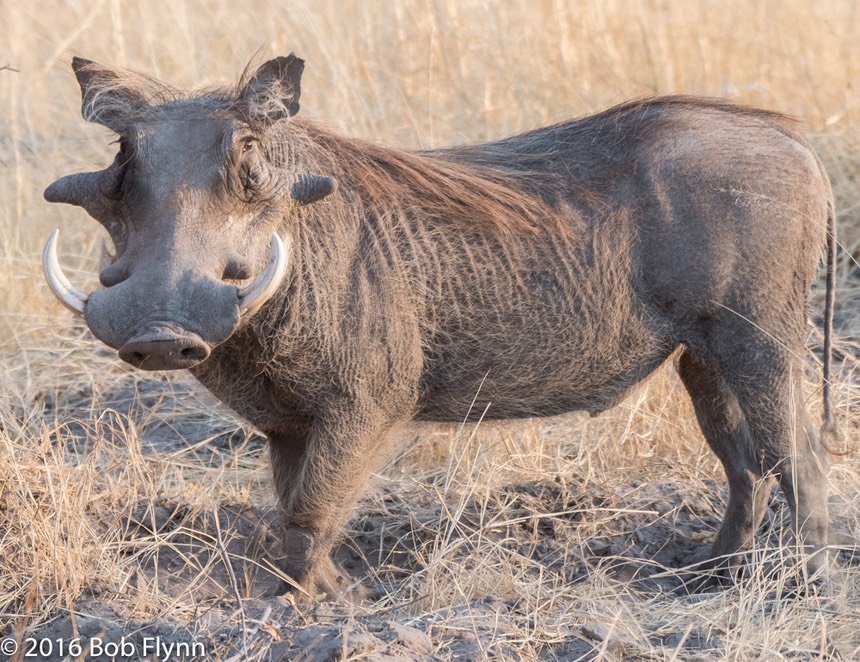
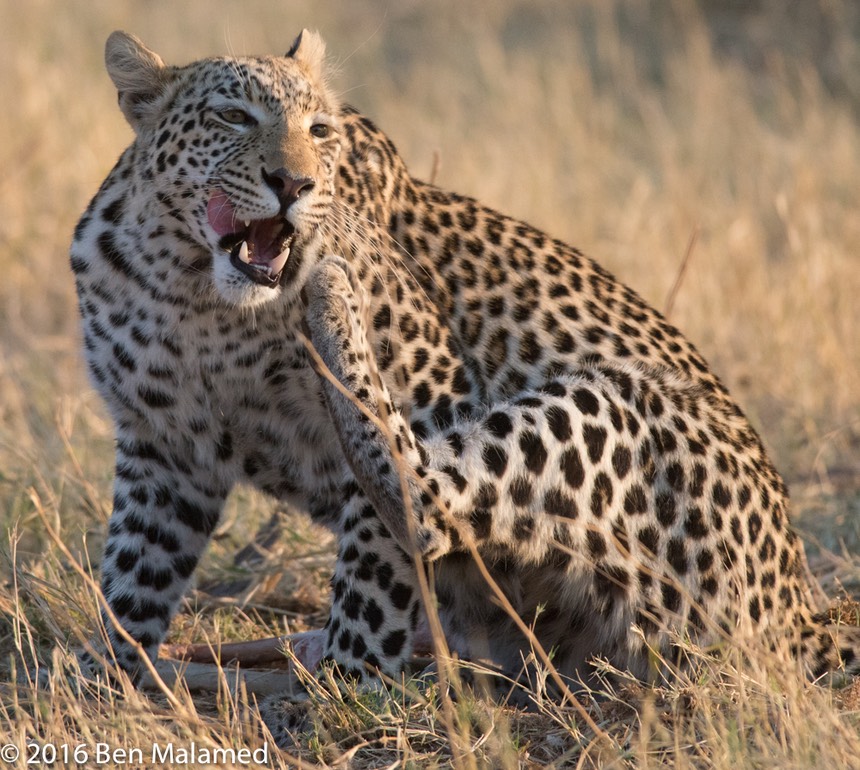

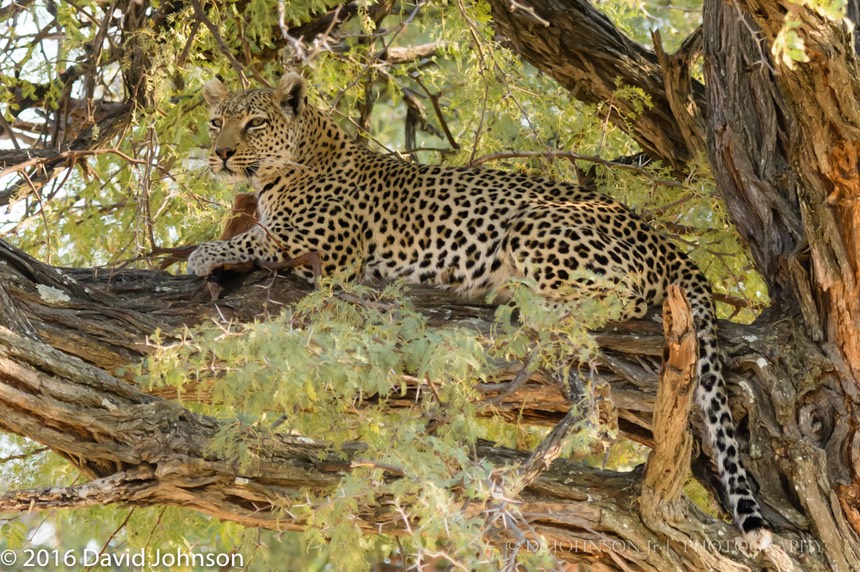
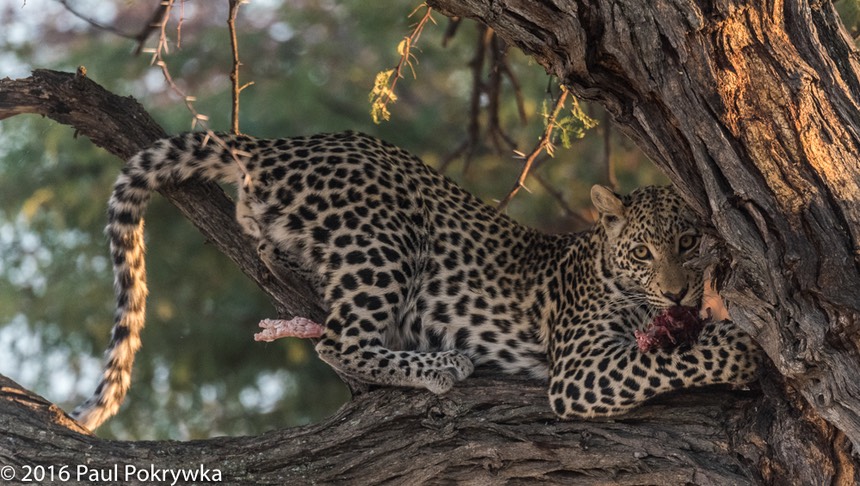
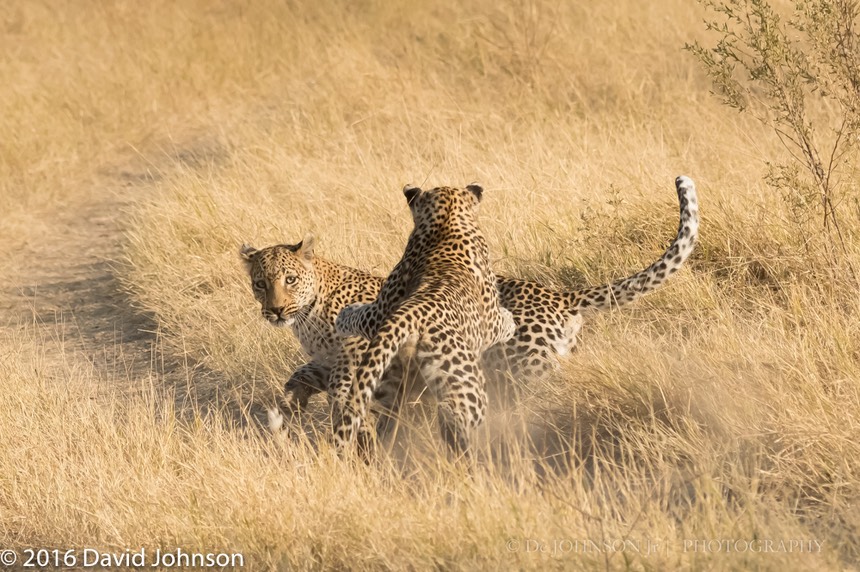
Yeah, it was that kind of day.
Back at camp, all of our meals are cooked on open flame or via ovens fueled by coals. Don’t believe me? Here’s our wonderful cook, Kay.
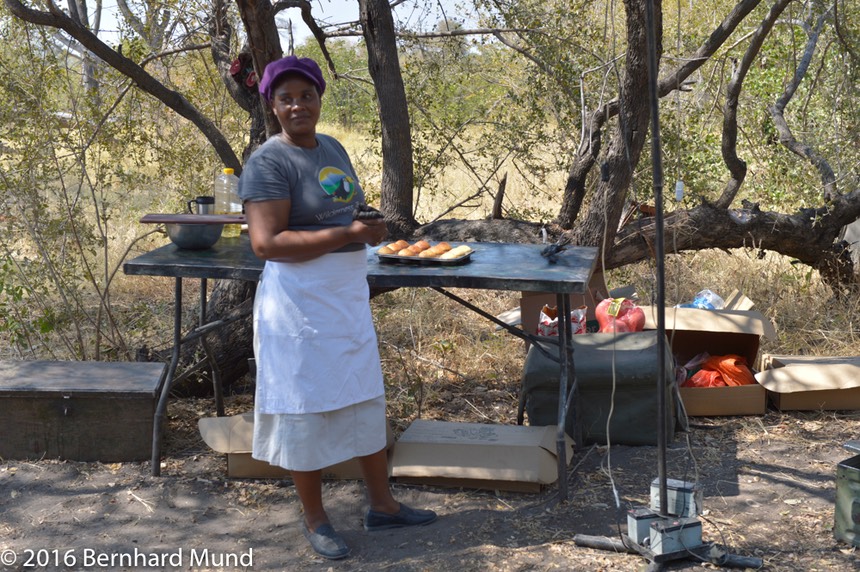
Where did she get those muffins from? Let’s follow the trail backwards.
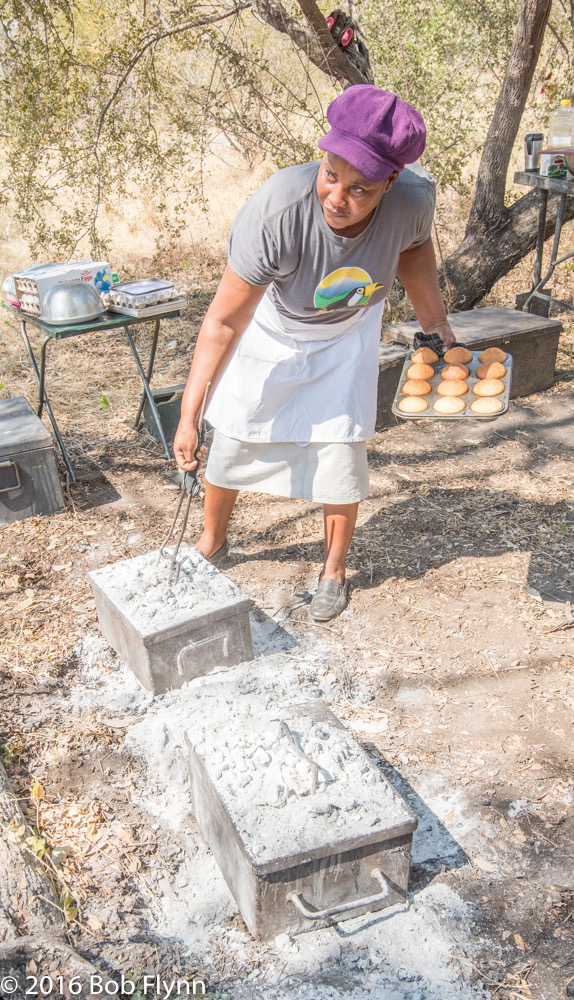
Above she has taken the muffins out of the oven. Still don’t believe me that those are ovens? Okay, let’s look inside and see what’s baking:
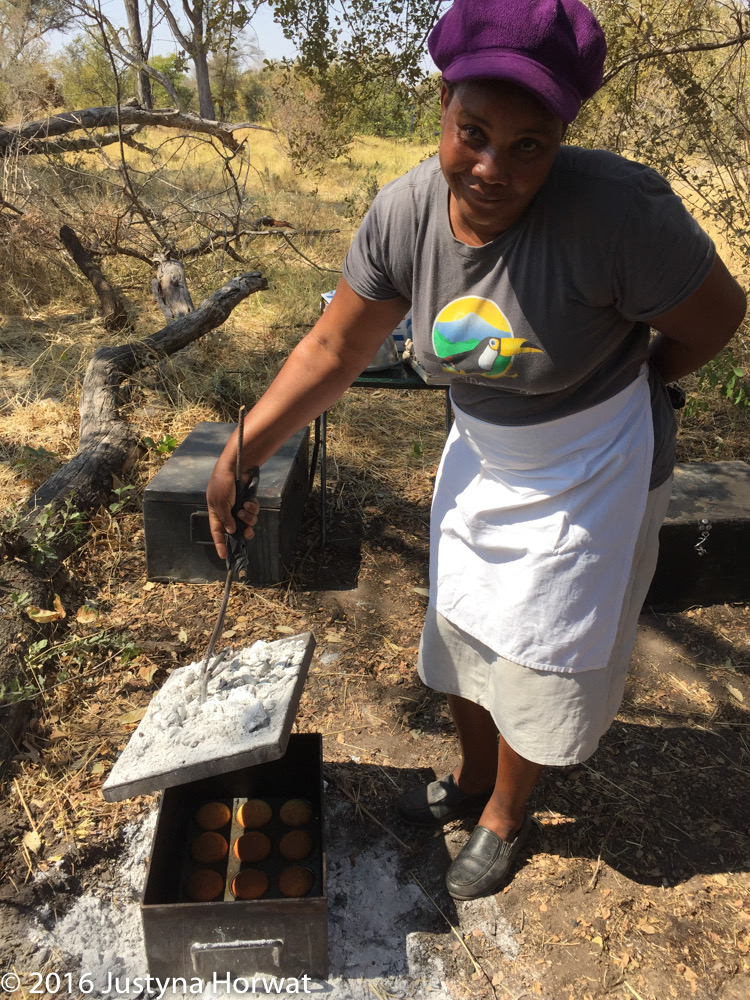
Meanwhile, where’s our water come from? Let’s follow that backwards to the source, too. See that big green bladder in the truck? That’s filled with water. Either that our it’s a giant California King-sized water bed, I’m not sure.
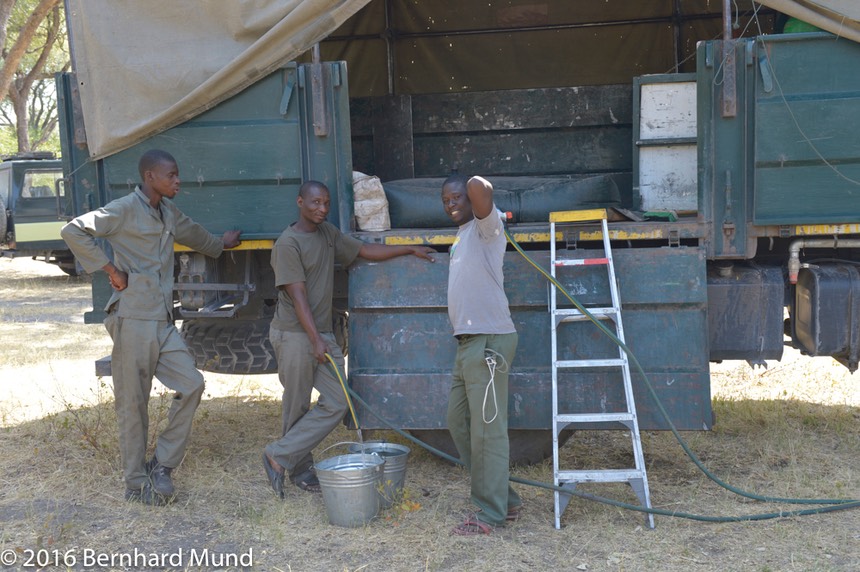
The water itself typically comes from nearby community pumps.
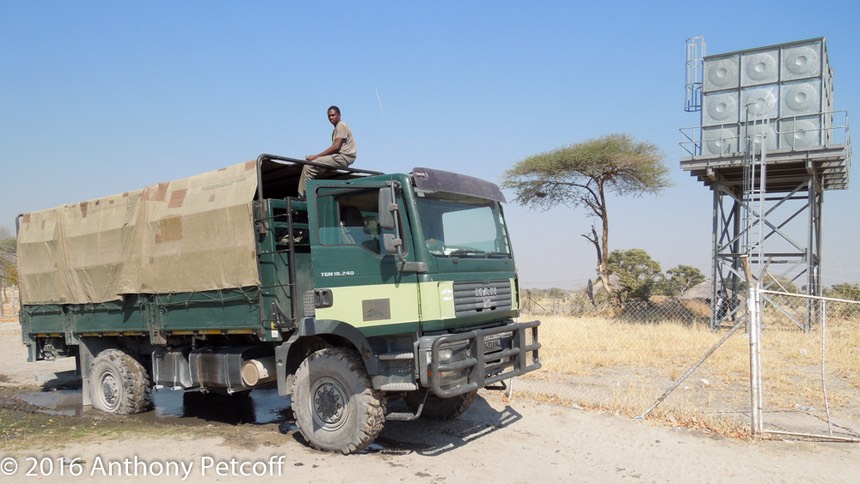
And to get that water you need to pump. Here’s Barnes, our camp chief doing that job.
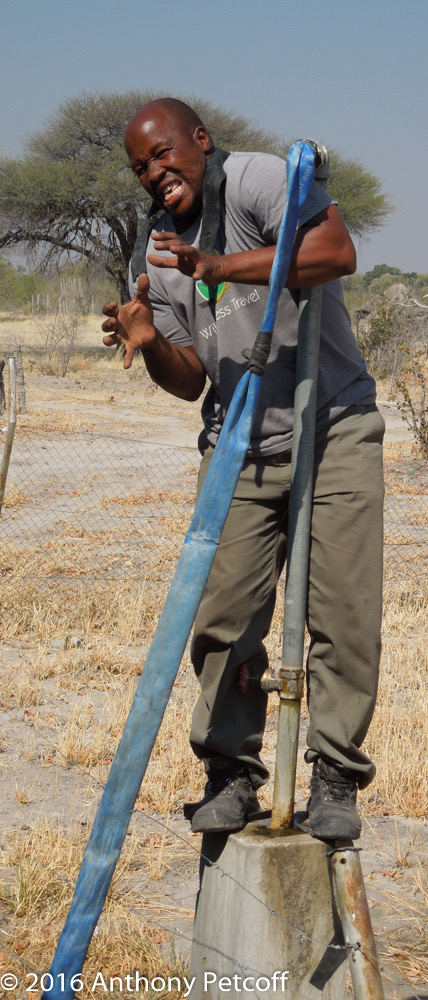
Oh, by the way, did you notice the tat on the big truck?
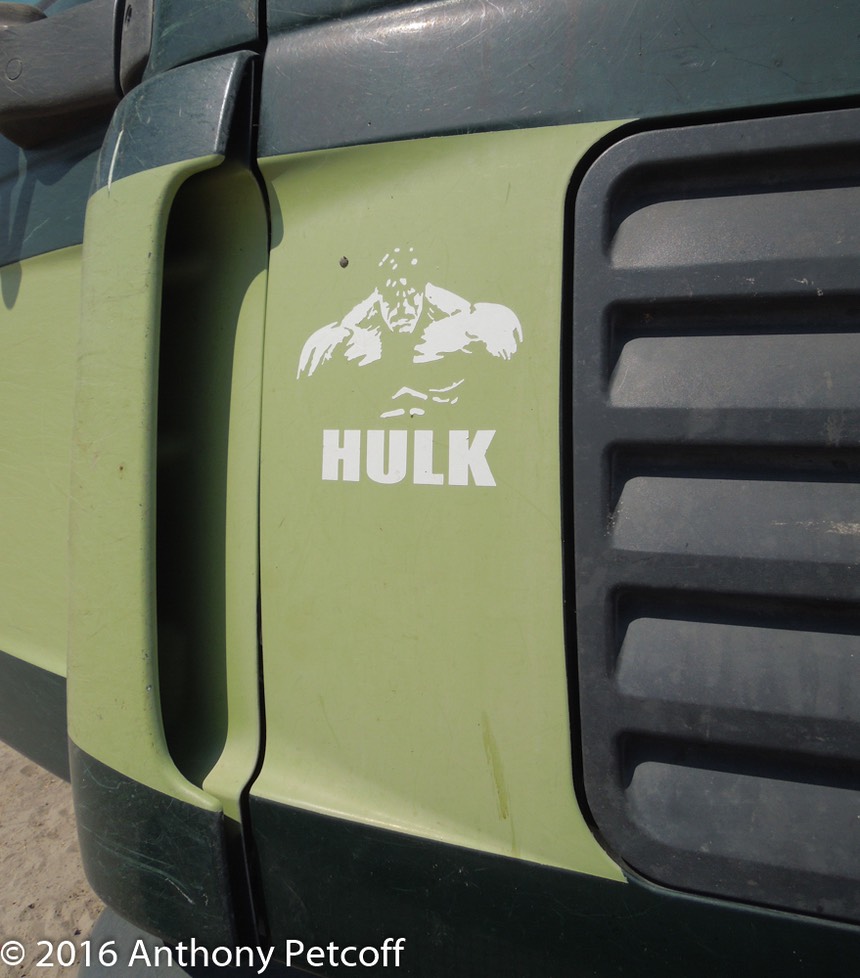
This evening we go for a sunset shot (and sundowner drinks):
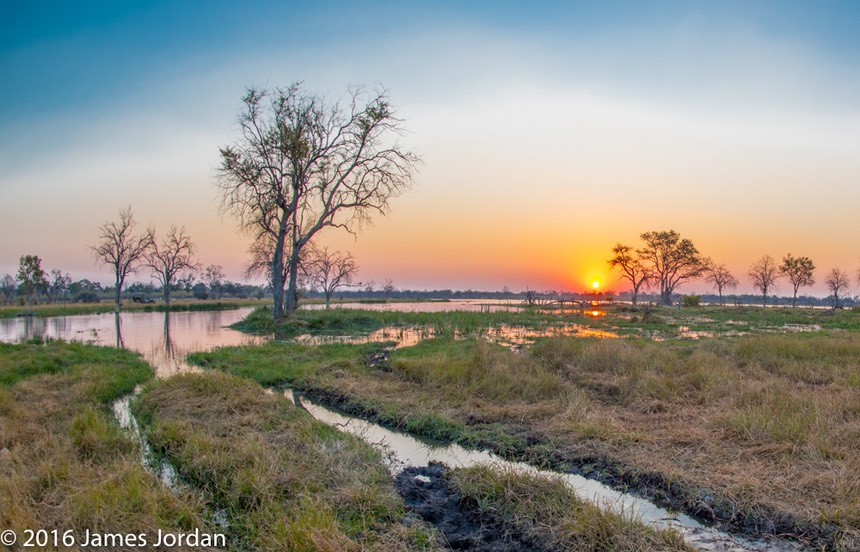

This is followed by a short night drive. Unfortunately, the only animal of note we managed to find was an owl. [someone reminded me that this is actually a rare sighting: it’s a Pels Fishing Owl; I’ve added my shot of him]
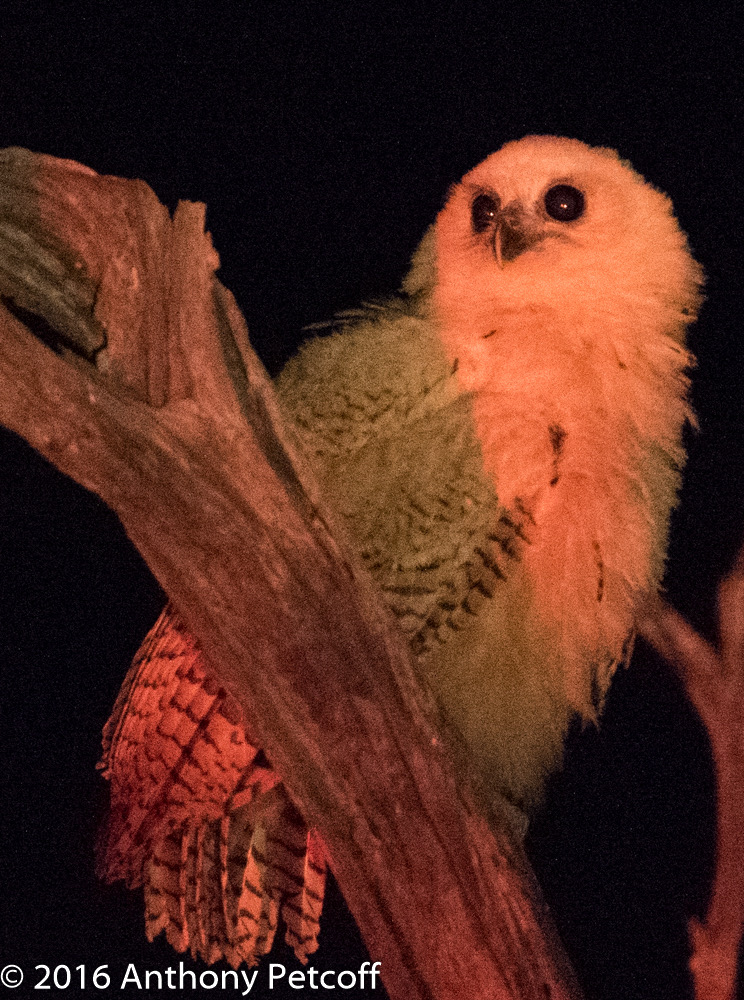
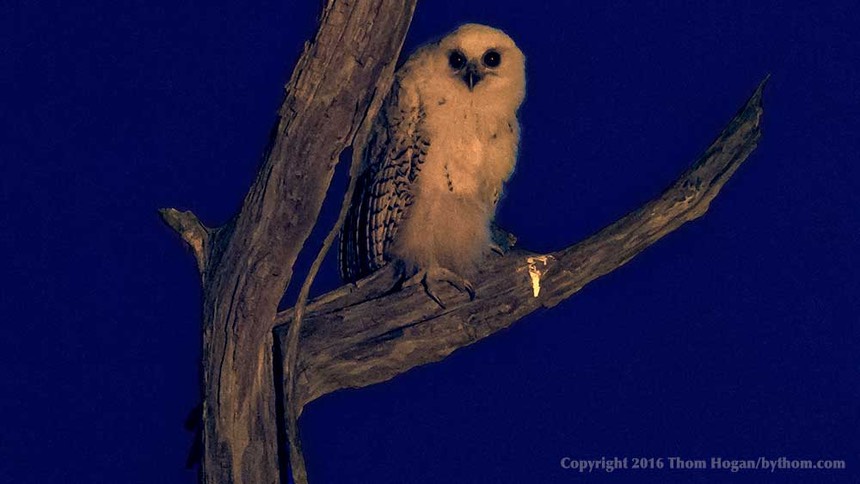
18. Khwai Goodbye

It’s our last full day shooting today.
Well, not really. Three of the students will be headed to Victoria Falls tomorrow, Three to Nxai Pan with Tony. And I’m headed to Mena a Kweno. So there’s much more shooting to be done. But officially, today is the penultimate day of the workshop.
Once again I’m going to let photos do most of the talking. Tomorrow I’ll have more to say about gear and shooting.
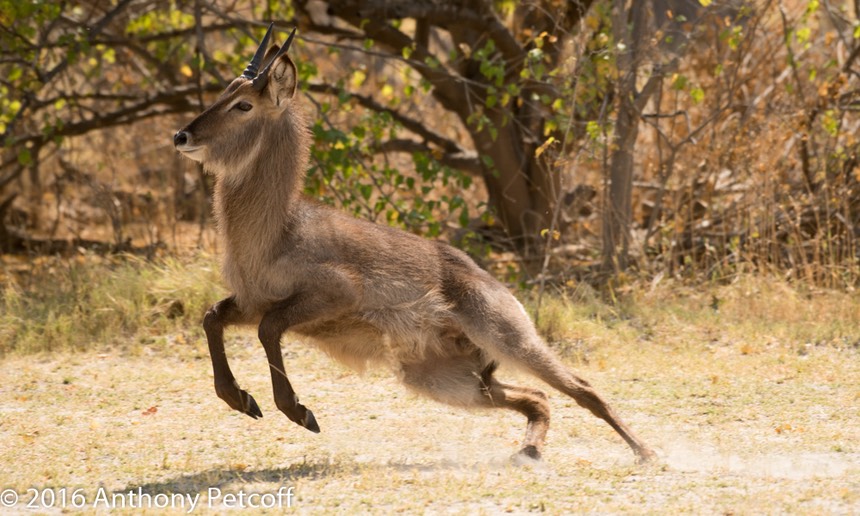
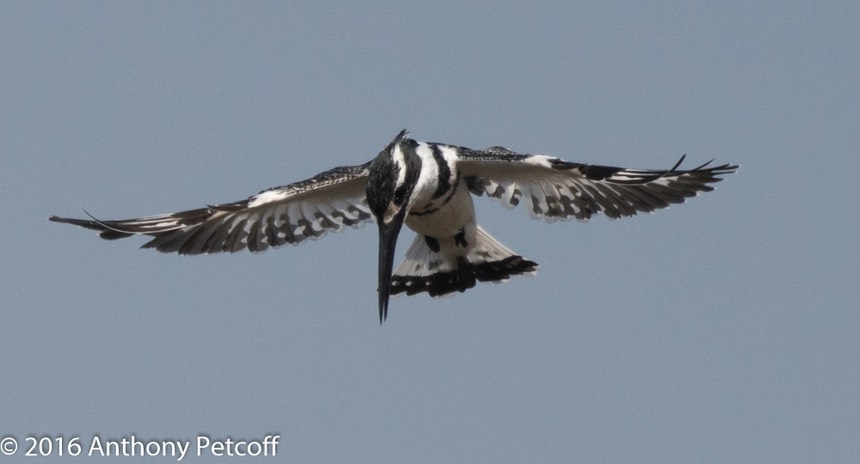
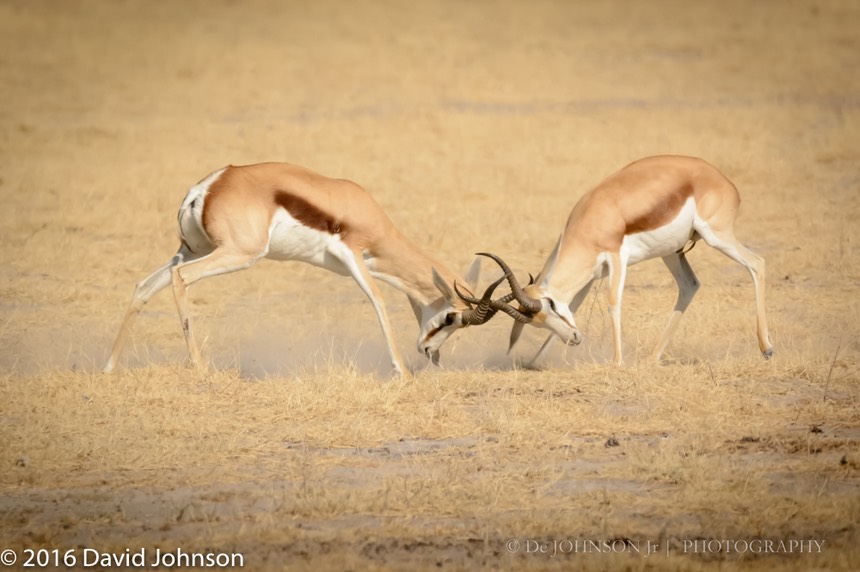
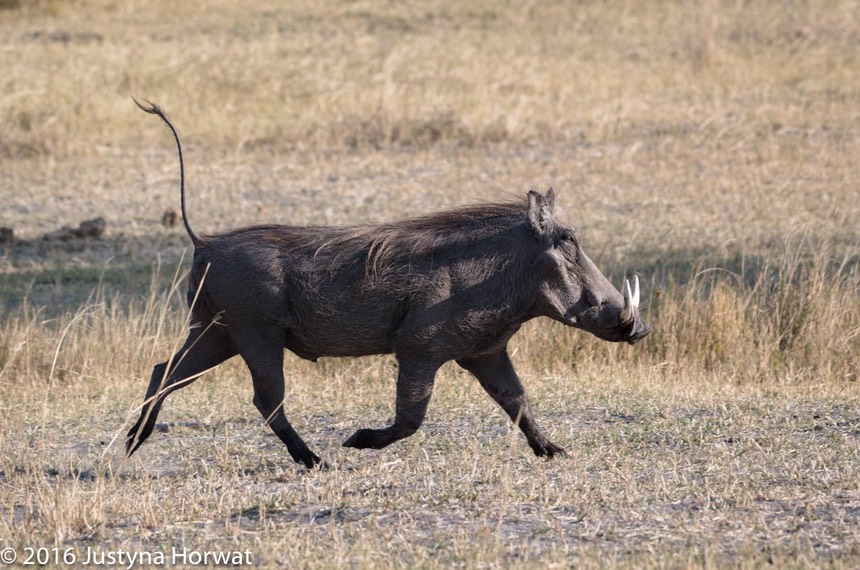
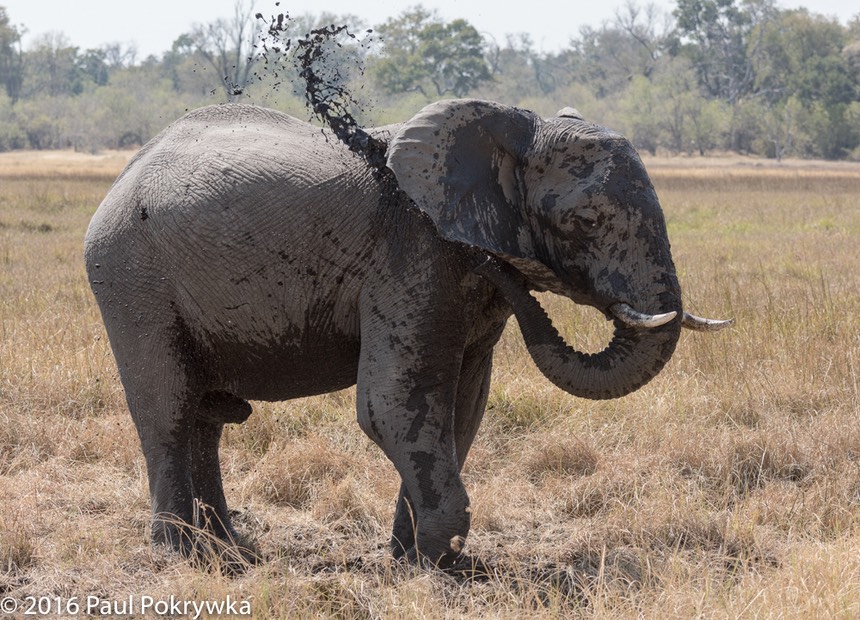

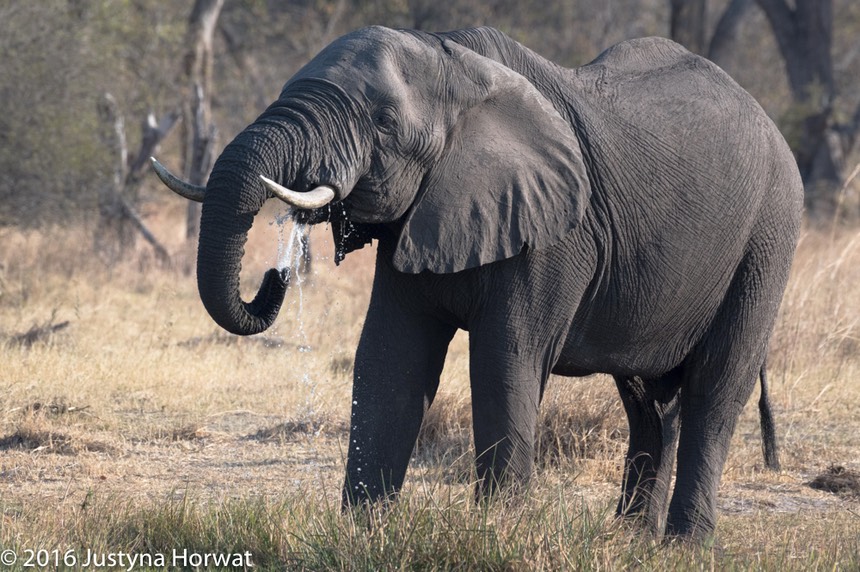
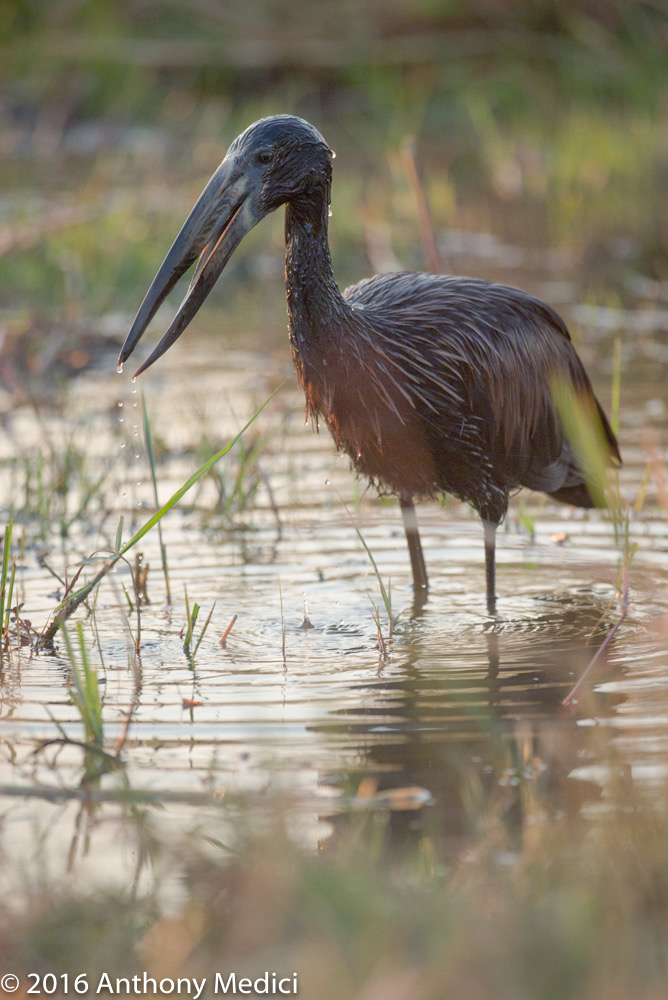
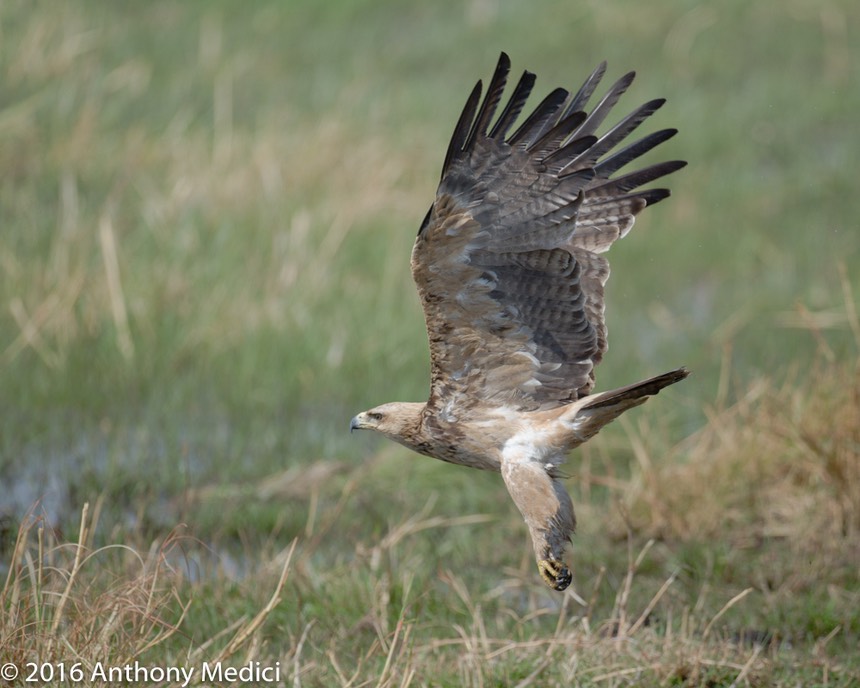
Botswana does have its oddities. Like this bridge that nobody uses:

It was built at the height of the floods, but it’s such a pain to drive over when there isn’t a flood everyone just goes around (note where the vehicle is). Apparently, since it was built it hasn’t flooded again. Meanwhile, I can think of a few spots we encounter on these trips that could use this bridge...
Much of the day we spent around a massive group of hippos.
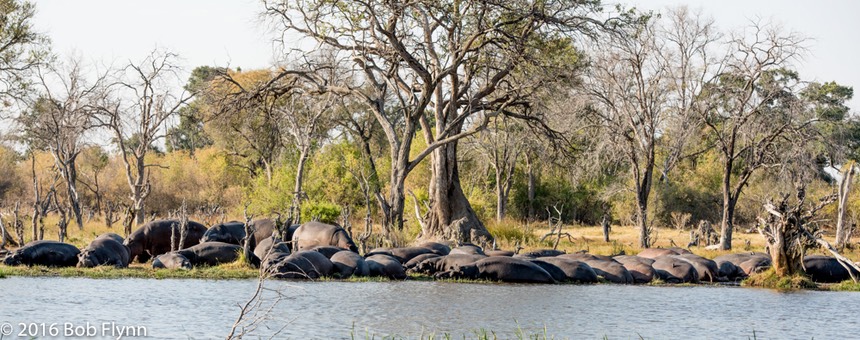




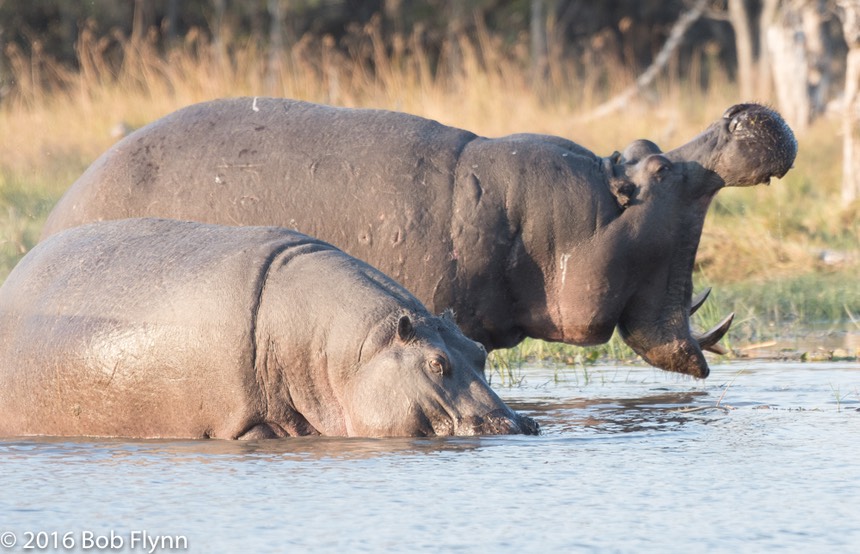
But here’s a hippo behavior I hadn’t shot before:
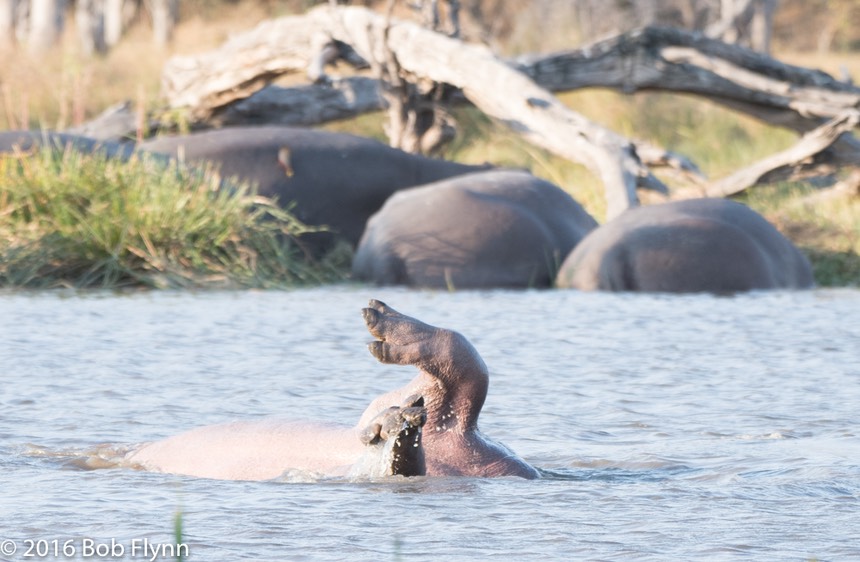
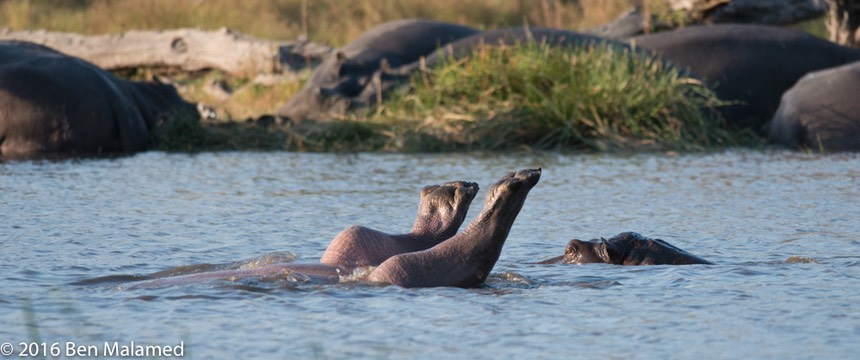

At lunch, camp had a nice visit from a family of elephants, which allowed some on-foot shooting or just observing.
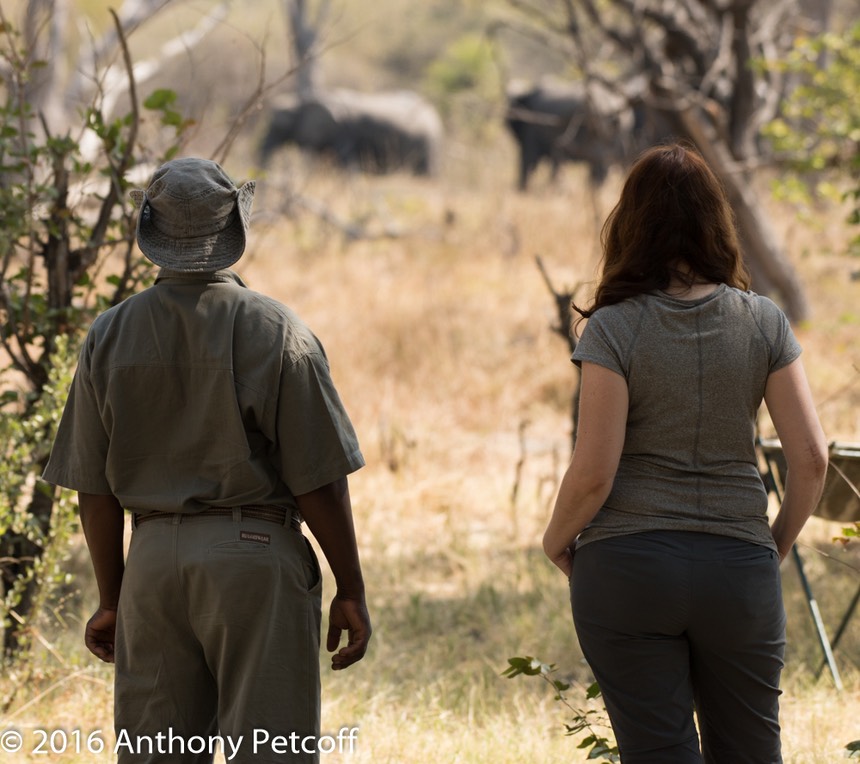
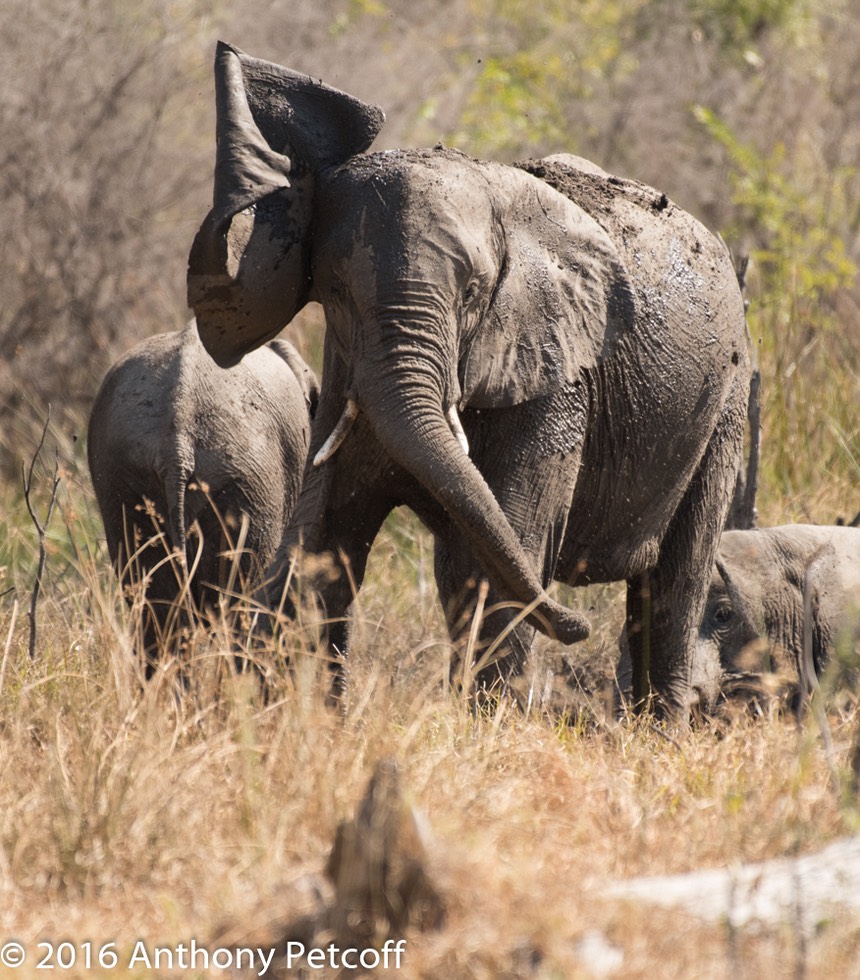


It seems only fitting that for our final full day we find a great sundown spot. Our choice was one where we had a sunset in one direction and a full moon rising diametrically opposed to that. The question was, would we manage to find any animals to take advantage of the two placements? Considering that the place we’re at has the nickname of Elephant Point, guess what we’re hoping for?
Also as befits any last sundowner, we’ve got Gin and Tonics and Champaign, plus an assortment of other goodies. For some reason popcorn tastes better in the middle of nowhere.
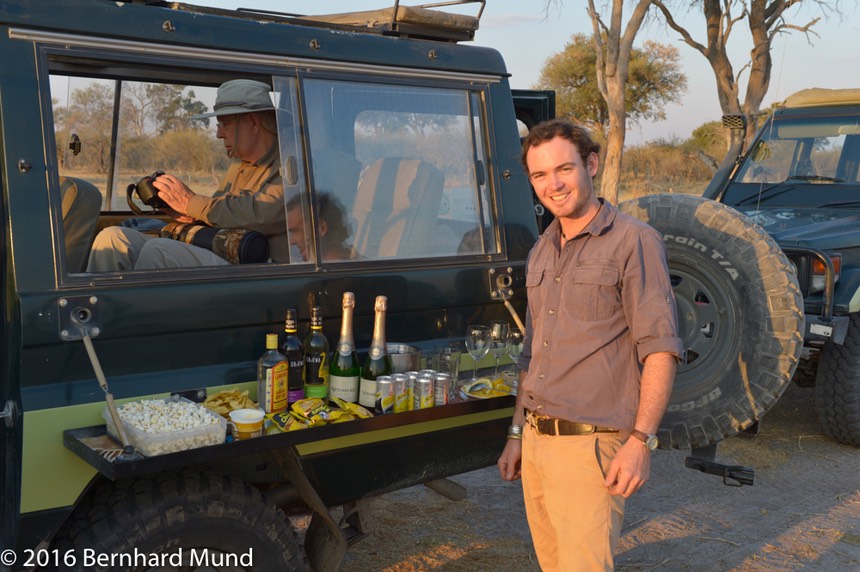
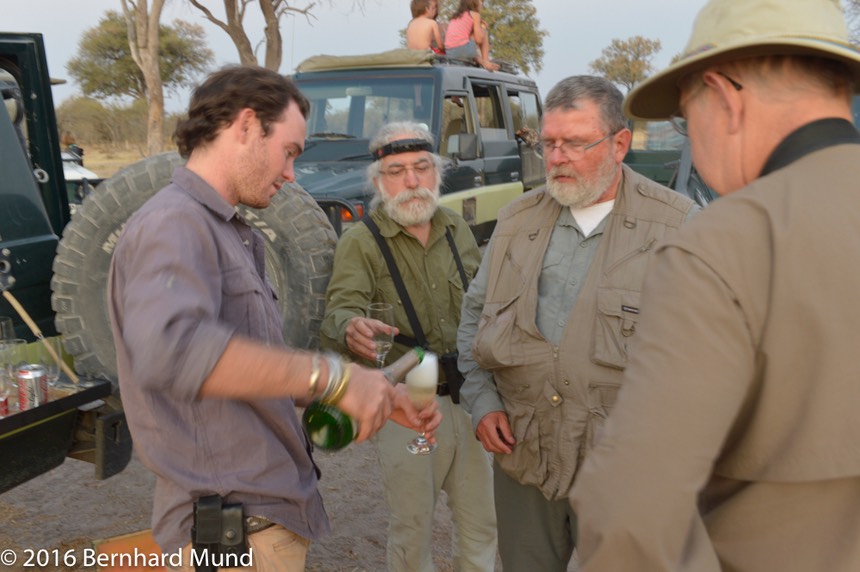
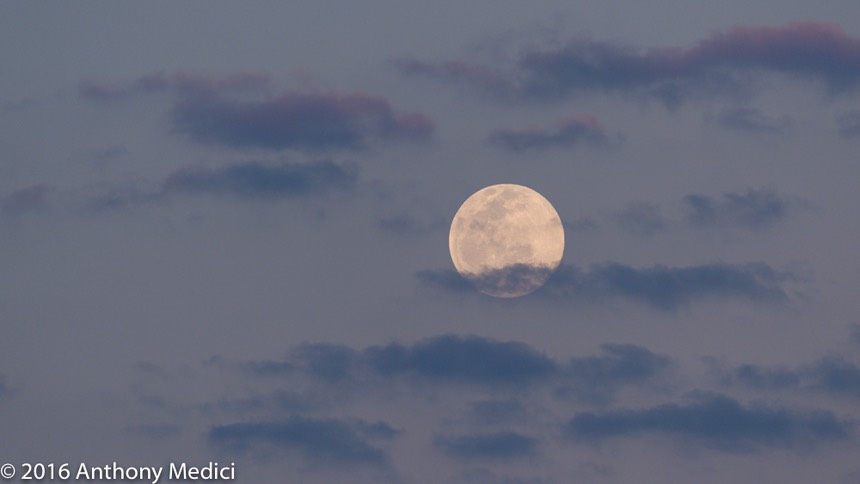



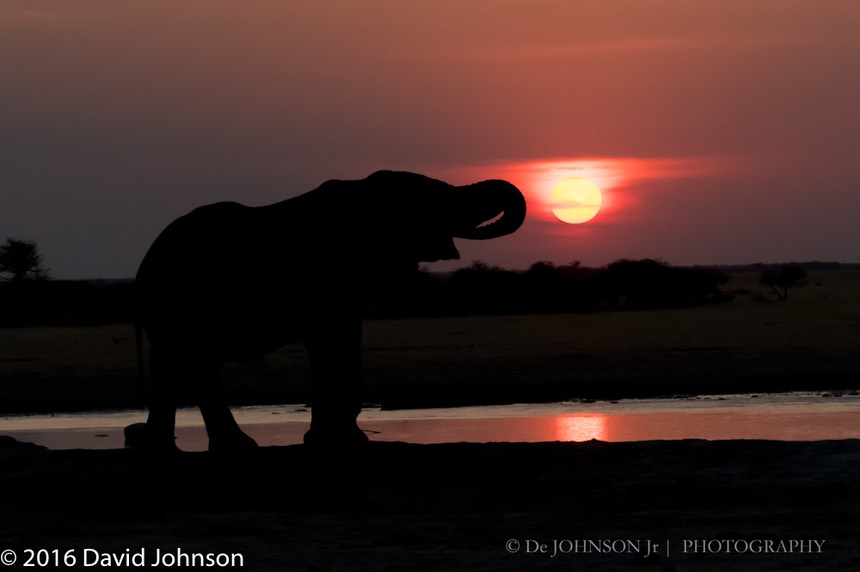
19. Back to Maun
Today was a dull day for the most part. We broke camp fairly quickly as we had to get people to where they needed to be by mid-day. One vehicle headed to the Khwai airstrip so that the group can take a late morning flight that’ll get them up to Vic Falls; so they’ll be doing a leisurely game drive this morning before they wait for their plane.
The rest of us headed back to Maun. Several needed to be dropped off at the airport around lunch time to catch their flights home. The rest of us are overnighting at the Maun Lodge, as we’ll all be headed out somewhere new tomorrow.
Since I’ve got Internet and a desk and not a lot of photos from today, I think I’ll take this blog page to go a different direction. More photos tomorrow, I promise. Indeed, at least three more days of photos are coming. So those of you in need of a pixel rush, just look up there at the header image today. The rest of you keep reading…
We had at least eight D500’s on this trip. Some D5’s, D8xx’s, and a few other recent Nikon DSLRs. We had at least six 200-500mm f/5.6 lenses, almost as many 500mm f/4, and a host of other Nikon telephoto lenses. Most everyone had one body with a 70-200mm on it.
Personally I’ve shot almost 9000 images so far, the majority of them on the D500. Here’s the thing: I still get regular emails every week from D500 users with reports of card failure or complete lockup. I had no card failures and no lockups. I don’t recall any of the students complaining about lots of card failures and any lockups; indeed, I can only remember one mention of a card failure.
I’m starting to believe that both those problems are highly sequence specific, and for most of my shooting I just never do the things that cause them. For instance, it seems clear to me now that the card failure problem still presents itself when you’re pushing the camera with lots of images. I can get my camera to produce a card failure by shooting a burst but having the image view set to 72 images at once. Likewise, I get reports of the card failure coming on things like Copy Image(s) and bulk deletes. Those failures can be on any card, XQD or SD, from any maker. But in the field, shooting normally, I just don’t encounter such failures.
Likewise, the lockup failures that I still get reported regularly must be due to specific sequences of control use that I don’t normally perform while shooting. Remember that the one repeatable lockup that I documented in the D500 Blog was a very specific menu choice sequence.
My best guess is that both problems are borderline problems. The camera is assuming a certain response time as you’re shooting and controlling the camera in various ways, and some borderline cases are outside the expected bounds, causing the camera to either punt with an error message (card failures), or get into an unexpected state (lockups). These are the toughest problems to find, and they’re only findable with good, solid testing. That Nikon hasn’t found all of them yet is bothersome, to say the least, but again, it’s not affecting my shooting one iota.
Meanwhile, on batteries I decided to just press them as hard as I could. On average, I was getting near 2000 shots a charge, and my discussions with various students also shooting a D500 was similar. That meant that the five EN-EL15 batteries I brought technically could have lasted me the entire trip without recharging to this point, though I topped off two of them along the way and am recharging the rest tonight.
The focus system on the D500 is great, but only if you’re in complete mastery of it. It took a couple of days to get a few of the students up to a level I’d call approaching mastery. That’s because, despite the seeming similarities to the old focus system, the new one just has a lot of nuances you want to understand.
First up, Nikon really needs to add D9 to the D500. They did that with a firmware update to the D5, so there’s hope that we’ll see it on a D500, too. But it really is sorely missed.
Why? Because D25—the smallest of our dynamic area levels other than single point—is tricky. It’s covering a broader area on a DX body than D9 did, but with smaller focus points. That means that it is more likely to switch off your selected focus sensor (center of the 25) to one of the adjacent ones. And it can switch further away from center than before. And many of those new points—but awkwardly, not all, especially in the two columns to the side of center—are also cross point. Remember, Dynamic Area 25 means this: start trying to focus on the central point I choose, but move to another one of the 25 points if (1) the central point doesn’t have enough contrast; or (2) the system believes that the subject is moving.
It’s #1 that is trickiest on the new system. If you move the the selected point (center point of the 25) to the areas that don’t have cross sensors, see what happens? There’s a good chance that there’s a cross sensor in the outer group of 25, and it’s likely to have better contrast than the one you picked.
Many of you might not have noticed this because you don’t try to move the selected point during action, and just leave focus on the center point. I’ve always moved my focus point actively, but now we have that wonderful little thumbstick to do that with and it’s a lot easier to do. Heck, you can program a press of the thumbstick to AF-On, which allows you to have back button focus and position all in one control. Unfortunately, I don’t find the button action on the thumbstick to be great, but it certainly is possible to shoot this way: AF-On for the button press option, cursor movement for the selection option.
Which brings me to another point: you need to program your second-most-used autofocus mode into a button somewhere. Why? Well, let’s take birds in flight: a bird flying towards you almost always will focus best with Group AF.

Subjects moving more parallel to you, not so much.

That’s because Group AF prioritizes the closest subject. The closest subject in that narrow group area is going to be the head of the bird if you’re holding framing well. But when the bird is flying parallel to you, the nearest wing is going to catch focus with Group AF, and you’ll be wanting to switch to…wait for it…D9 ;~). Okay, D25 for now. Or maybe Single Point.
You can assign a button hold to make that switch for you. And you can make that button hold produce AF-On plus the switch of focus mode! You can do this with the DOF Preview button, the Fn1 button, the AF-On button, and the thumbstick button. So more so than previous Nikon DSLRs, you really need to think out your preferred focus modes, when you use them, and how you’d best access them.
Right now my DOF Preview button is set to Single Point+AF On, my AF-On button set to just AF-On (and D25 is my usual camera base focus setting), and my thumbstick button is set to Group+AF On. No button held down? The camera isn’t focusing (typical back button focus behavior). Which button I hold down sends me immediately into focusing in a specific mode (Single Point, D25, or Group). The buttons aren’t perfectly placed for this, but close enough that it’s a very usable method of controlling the camera’s focus quickly.
Which brings us to image quality. Two things: don’t push the ISO too far, and don’t trust the meter.
Wait, what? Don’t trust the meter?
No.
On the D5 and D500 Nikon has changed something so that if the camera meters “correctly” the JPEG will look right but the NEF won't. It’s not that the meter is inconsistent. It’s that the meter is just wrong for raw files.
The histograms are based upon the JPEG. But a histogram pushed right up to the right edge (ETTR) will be almost a half stop underexposed when you look at the NEF file carefully. Ugh. Note that Adobe’s raw converters (Lightroom and ACR) secretly add 0.35EV to NEF images when you pull them up. That’s right, 0 in the Exposure slider is actually +0.35EV. So Adobe is aiding and abetting this JPEG/NEF differential that Nikon suddenly has stuck us with.
I’m tempted by dialing in +0.3EV exposure compensation and then reading the JPEG histograms, but that doesn’t seem to work well in certain types of light. As I said, I’m still trying to figure out the best case process here. But here’s the thing: if you expose by the meter you indeed lose the little bit of gain the D500 has in dynamic range over the D7200. In fact, almost exactly.
As for pushing ISO, I’m in the same place with this as I was with the D7200. I won’t avoid ISO 3200, but I need a seriously strong reason to go to ISO 6400, and I just don’t think that pushing any deeper into the D500’s extensive high ISO numbers is all that useful for top-notch work. Maybe if I were only shooting for Facebook pages, but not for a 13x19” print, for sure. I’ll have more to say about this soon, as it is a common question I keep getting (“what is the max ISO I should use?”).
20. Meno a Kwena
At lunch today I drove off from Maun Airport with a new guide to go visit a camp I haven’t been to before, Meno a Kwena. This particular camp is popular with self-drive campers, as it doesn’t sit far off the tarmac road linking Maun down to Jo-berg.
The unique thing about this camp is that it sits at the Western edge of the zebra migration, which is why I’m here: if the river is flowing, the zebras should be here.
In talking with my guide as we drive from Maun I find that the river is indeed flowing. It pushed water down past the Meno a Kwena camp exactly two days ago, and now there’s a river where there previously was just a dried channel (like Savute). And yes, the zebra have arrived. (How do they know?)
The camp itself sits on a bank just above a gentle turn on the river, and directly opposite where the animals tend to come down to the water (it’s a gentle slope there, whereas it’s a steep almost cliff-like drop elsewhere). I’m arriving late to camp, so we barely have time to get out on the boat into the river to shoot sunset.

You may wonder why that image looks so dark and ominous. It’s because the huge mass of zebras moving around kick up a lot of sand as they come down to the water, and at the edge of day like this, it’s like having a cloud of smoke hanging in the air. (Just a reminder: my own personal photographic style tends towards dark and ominous, not the usual stuff you see here on the site.)
Since it’s a migration, one of my goals is to see how many zebra I can get lined up drinking water simultaneously. It doesn’t take long before I exceed my previous record:

It’s a constant flow of zebras. As some get their water and head back up into the woods, others come down to get theirs.

The sun has set and it’s time to go eat. But even with my short look at what’s happening here I’m happy.
21. Bushmen
This morning I took a walk with a Bushman family. Every three months a new family rotates into the area of this camp to demonstrate their ways to tourists. I’m here to see if I want to add a cultural element like this to the Botswana workshops I do.

Living in such extreme territory, the bush people have adapted in many interesting ways. While it might look like a forbidding environment, I was quickly shown how they get water in dry times: they dig and find certain bulbs that retain moisture during the dry season. You and I would probably do a lot of digging before we found one of these underground treasures, but the bush people know where to look, and it takes almost no digging in the sand before they'd exposed one.
Like many things out here, the bush people use one thing for many uses. The skin of the bulb has a tacky nature to it, which they use for glue. The skin is almost like paper, and can be used for many things when dried. But if all they want is the moisture, they’ll poke a small hole and get that, then re-bury the bulb.
The two highlights of our walk were digging for scorpion and then building a fire and dancing and playing games around it.
If you remember the Amazing Race segment in Botswana a few years ago, you might even recognize a couple of the Bushman I was with; they were helping the contestants with the scorpion challenge.
First, you find a scorpion hole. Then you find a long stick to push down into it to determine the length and direction of the first part of the hole. Dig that area up, then push the stick down the new path. Repeat. Repeat. Repeat. It probably took 20 minutes of back and forth digging on a circuitous path to find the scorpion, but they found a big one and proceeded to show it off.
I never thought I’d have to identify a wild scorpion shot as posed, but here it is:

We found another hole and put the scorpion just outside the hole in the pose you see here.
When we reached their camp, I got a demonstration of fire making with two sticks. All those contestants on Survivor need to see that demonstration. It took only a few moments before we had smoke, a few more before we had flame, a few more before we had a full fire. The starter material was ground up elephant dung and some dry grass. Once the dung was smoldering, the grass was folded around it like a burrito and some gentle blowing took it the rest of the way.
Sorry, interrupted by an elephant that came down to the water just below my tent as I was writing.

Back to our regularly scheduled feature.
After the fire was going, I got a demonstration of a Bushman game: steenbok, dykker, impala. If you know rock, paper, scissors, it’s similar, but much more entertaining. First you establish a beat and rhythm with clapping and thumping and movements, then you present on one of the downbeats. Left hand pointing, right hand pointing. Two lefts are a steenbok, two rights are a dykker, opposites are an impala. Or something like that. Much more fun than rock, paper, scissors, lizard, Spock, too.
One of the things you notice in Africa is that the people, no matter how simply they live, all seem to laugh and have fun, and they find happiness in what they have. Possessions are actually a detriment for a nomadic tribe; they relate much more to knowledge and skill, with those that are advanced at that being the leaders.
Something to think about. It’s not how much money you made or the possessions you have that makes you happy. It’s not how much money you made or the possessions you have that make you a good leader. It’s the knowledge and skills that do. It’s how you interact with and treat those around you.
This afternoon I sat at the blind and spent most of it taking zebra/elephant photos.



2016 Botswana Wrap
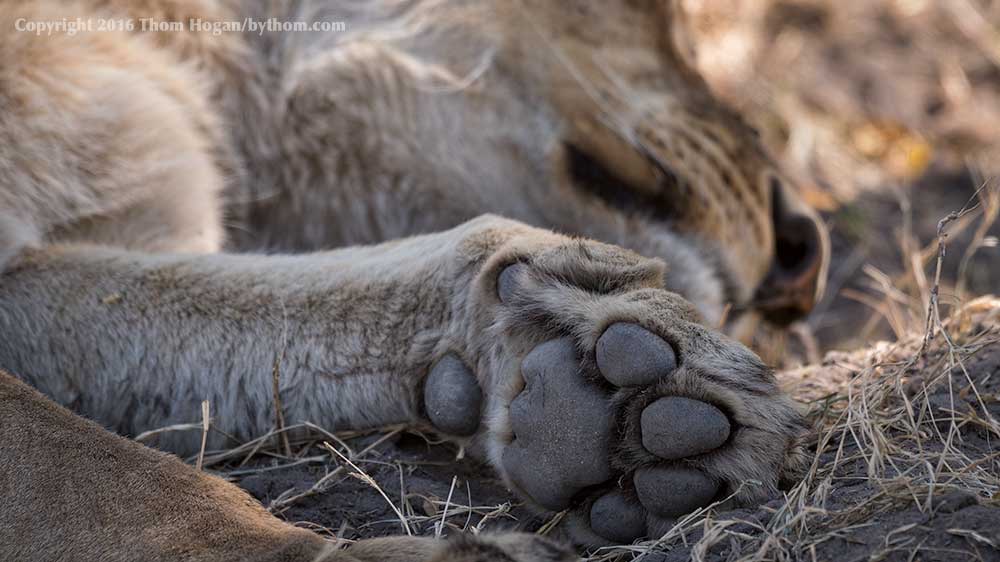
I’m back home writing this penultimate post (yes, there’s another). There’s a pile of stories I haven’t told, a heap of photos I haven’t shown.
The Nxai Pan group, for instance, found a cheetah with cubs and spent a long evening at Baines Baobabs photographing them under the Milky Way. I spent another day chasing zebra and elephants. The Victoria Falls group did all the sunset and sightseeing things you’d do there, including some flying over the falls themselves. I never did tell you what we did to prank Shane’s vehicle (hint: he was driving around Savute the next day with “I LUV BIG CATS” plastered on one side of the Land Cruiser, and that was just a leftover bit of what we did). I’ve left out several interesting sightings. I haven’t shown some of my favorite photos from the trip because they didn’t fit the stories I was telling.
But those are all stories and photos for another day. As you might guess, after spending three full weeks in Botswana shooting and teaching and running around constantly I ended up a bit on the tired side. Good thing my last stop had a pool with a view ;~). Unfortunately, my blog entries finally petered out while I was still in Africa, and I’m not going to try to resurrect the last couple of days for you, especially since I wasn’t present for some of what happened. It’s time for me to take a nap, like that lion up above.
Thus Shane and I (and Tony) will just say our goodbyes for this year. Perhaps I’ll blog next year’s trip and start the whole thing over again. I hope you enjoyed the show…I think I speak for everyone that we sure enjoyed being in it.
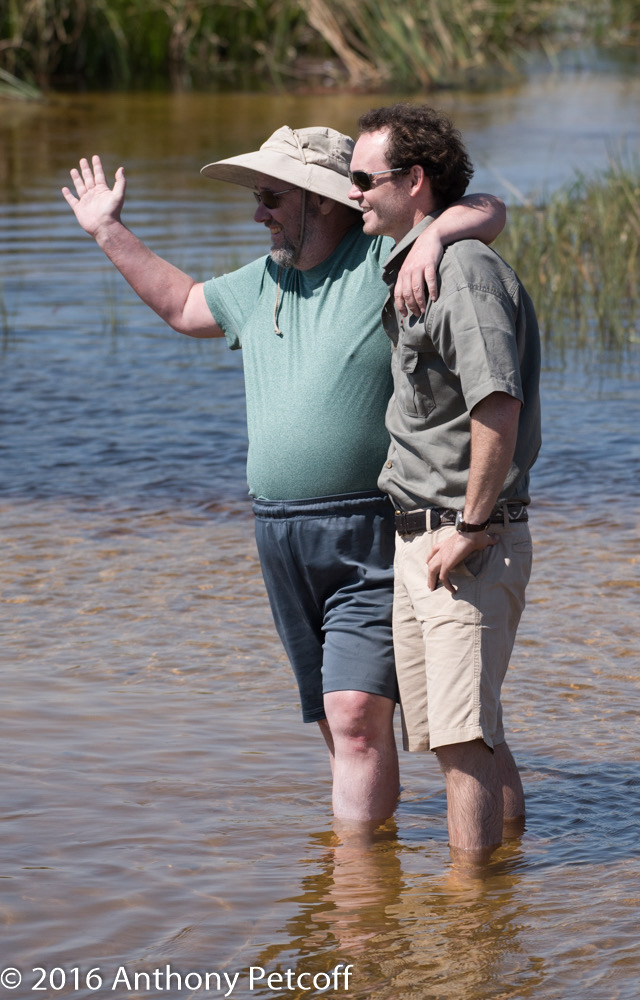
And a Short Followup on Lists
You may remember that I gave you an Excel spreadsheet at the beginning of this blog. Now is the time to pull that file back out.
Delete the things you didn’t need and shouldn’t have brought. Add things you needed but didn’t bring. Adjust quantities of things—underwear, for example—that turned out to be extravagant or deficient.
Do this now while the trip is still fresh in your head. The longer you wait, the more you’ll forget and the less likely your list will be optimal for the next similar trip. Yes, the spreadsheet I started with for this trip was from a previous trip, which was a variation of one from a previous trip. Each trip I make small adjustments, but fewer than you might think. Most of my changes these days are due to (a) number of days being spent traveling; (b) changes in season from the previous trip; (c) changes in the equipment I own now versus then; and (d) different locations I might be visiting.
This year’s trip was a little longer than usual, and went to two places I hadn’t been before, so I needed to make adjustments for that. But only adjustments.